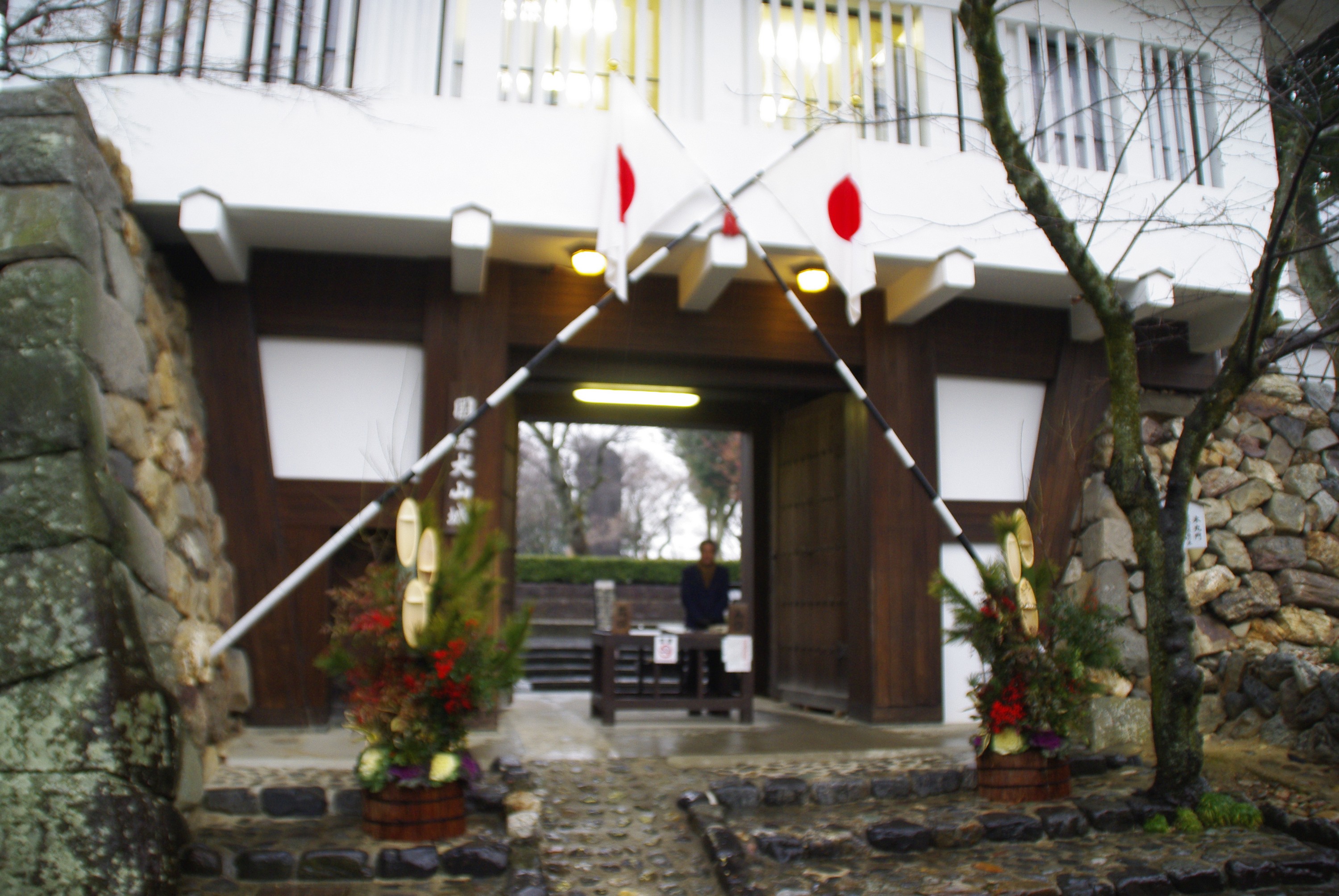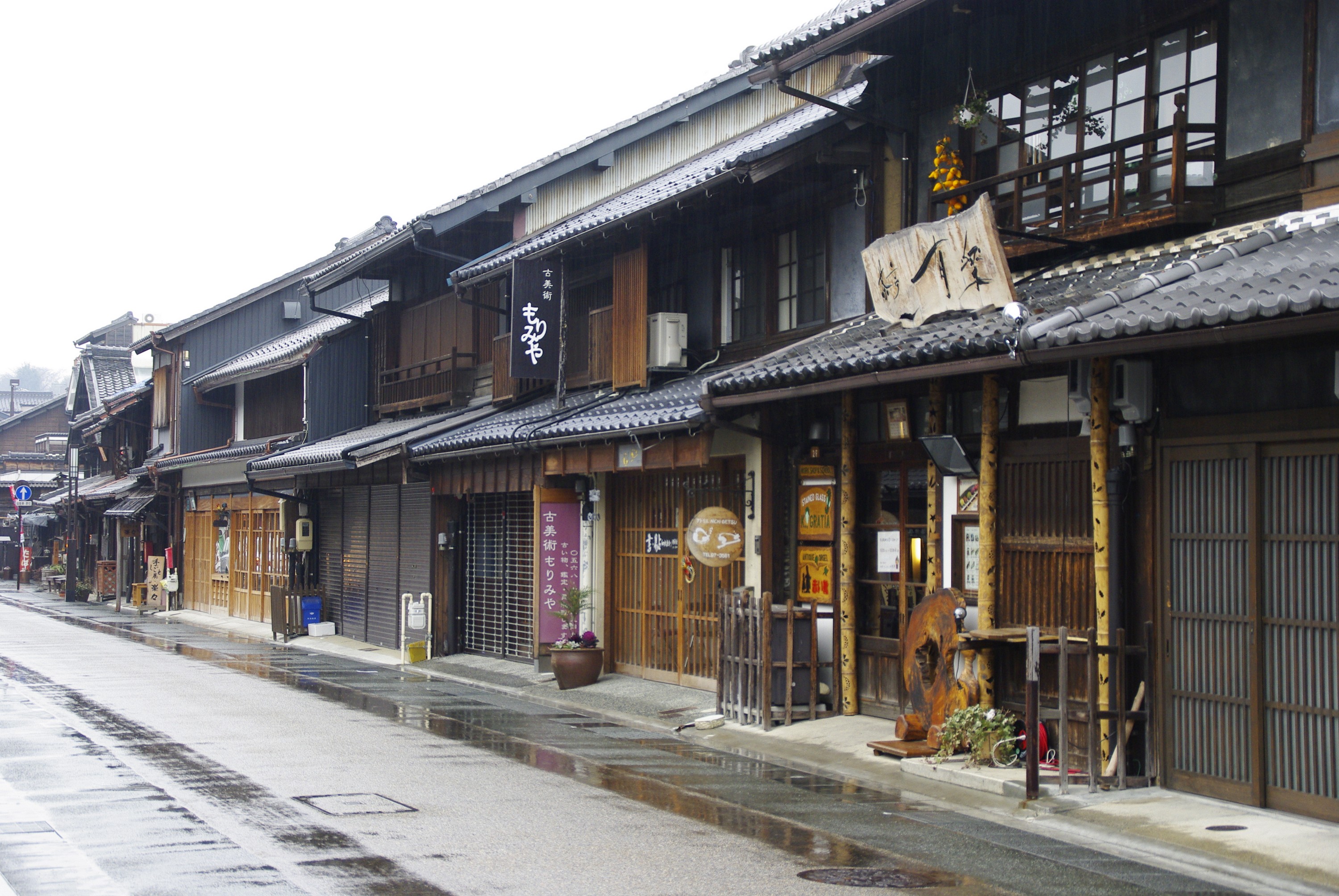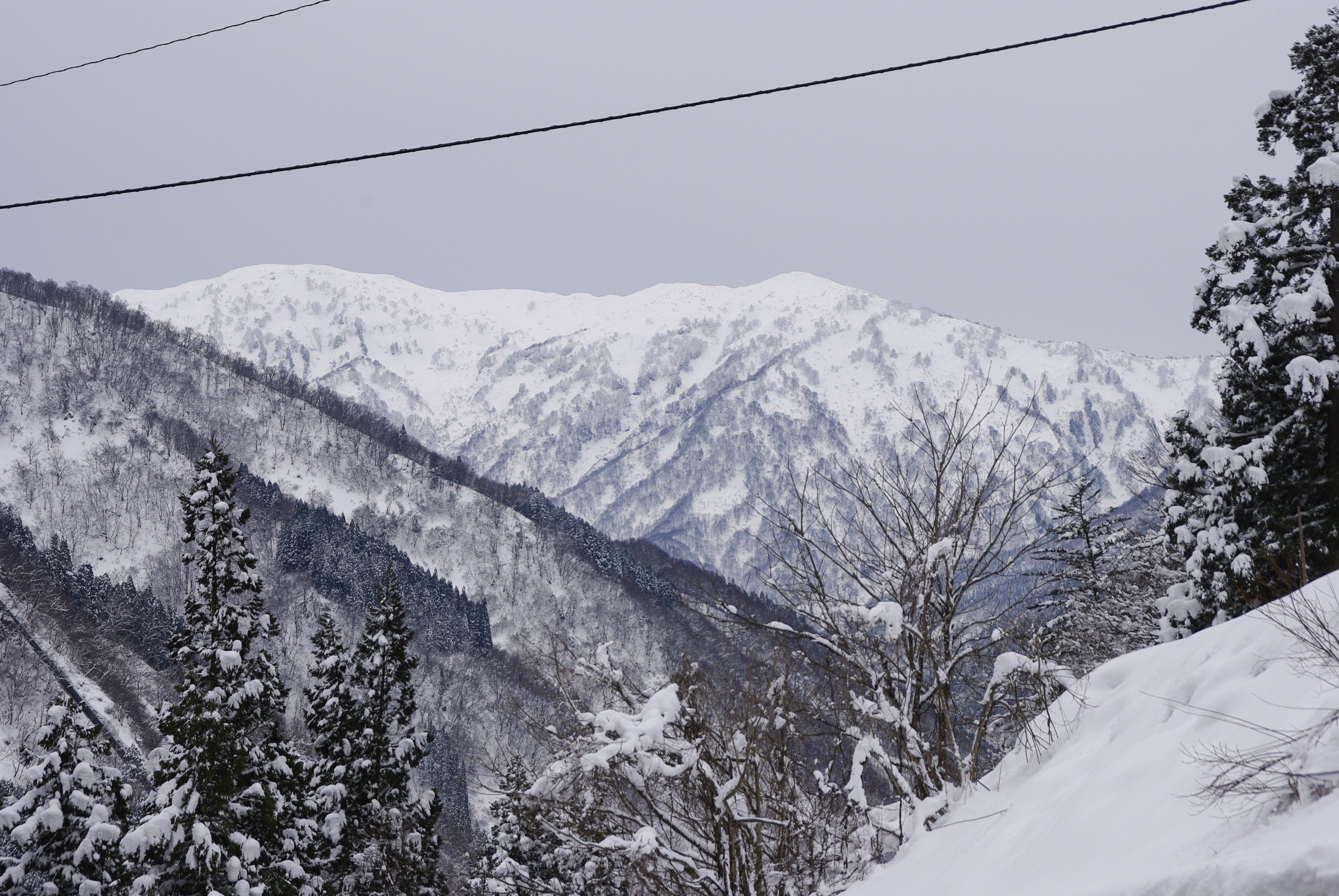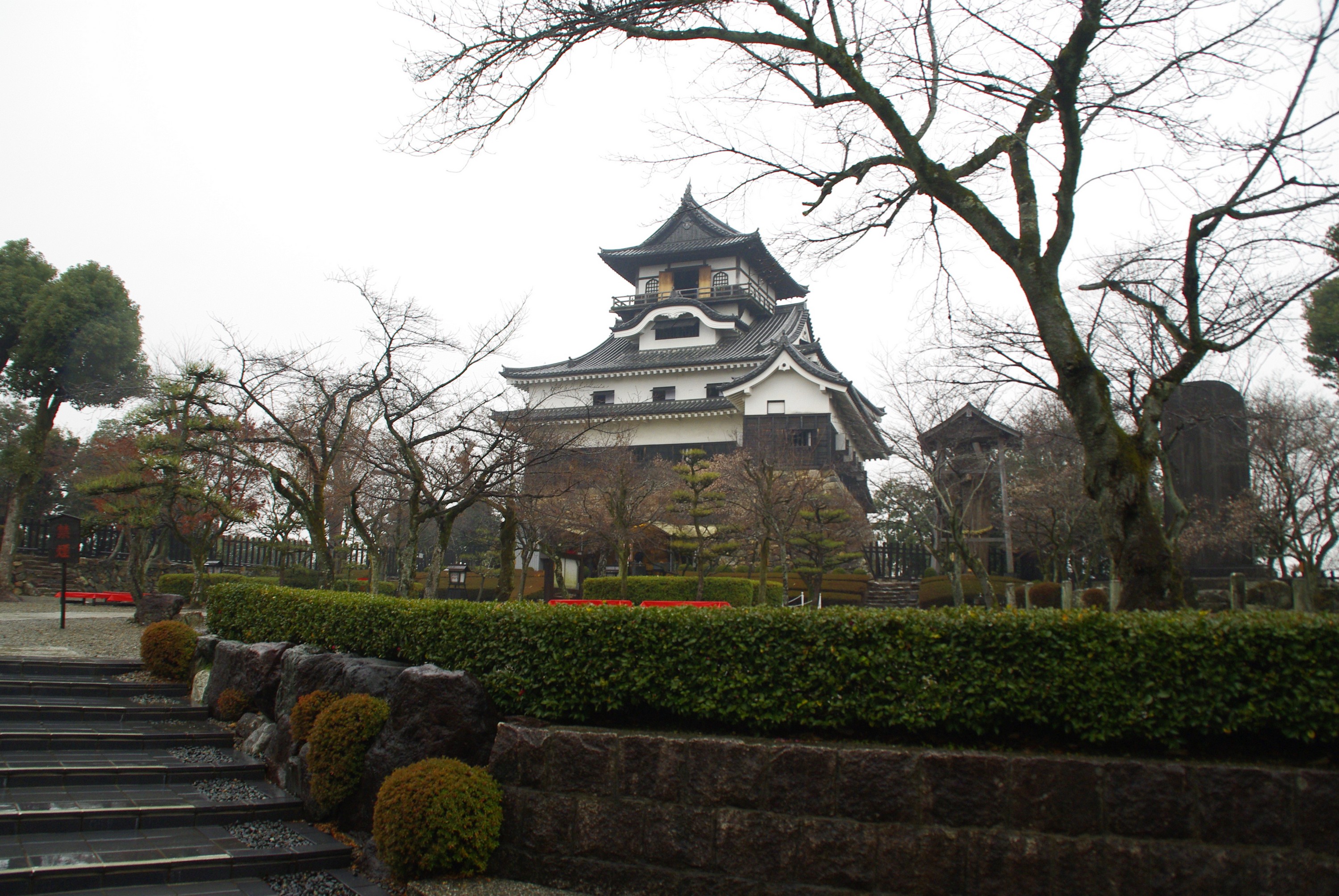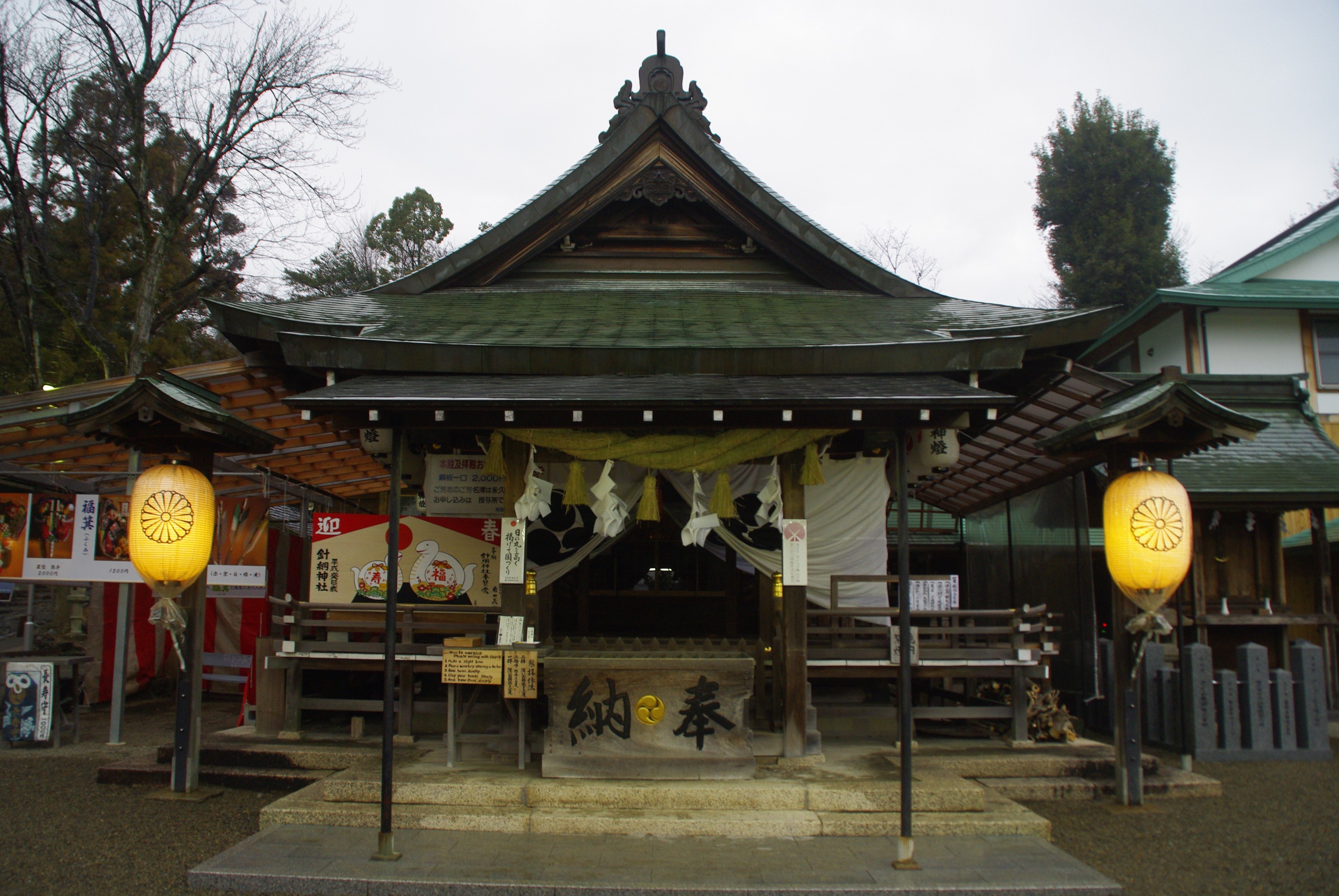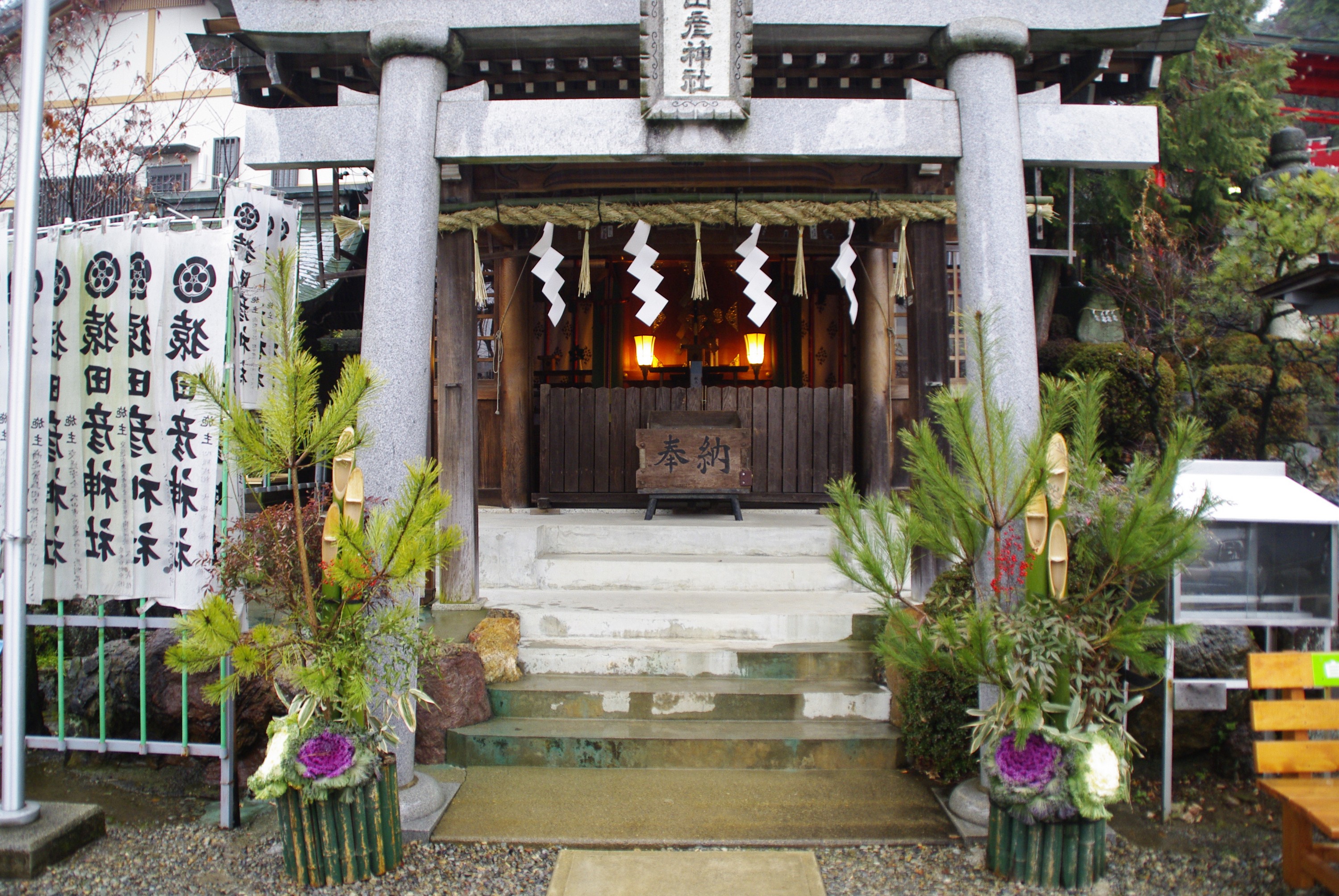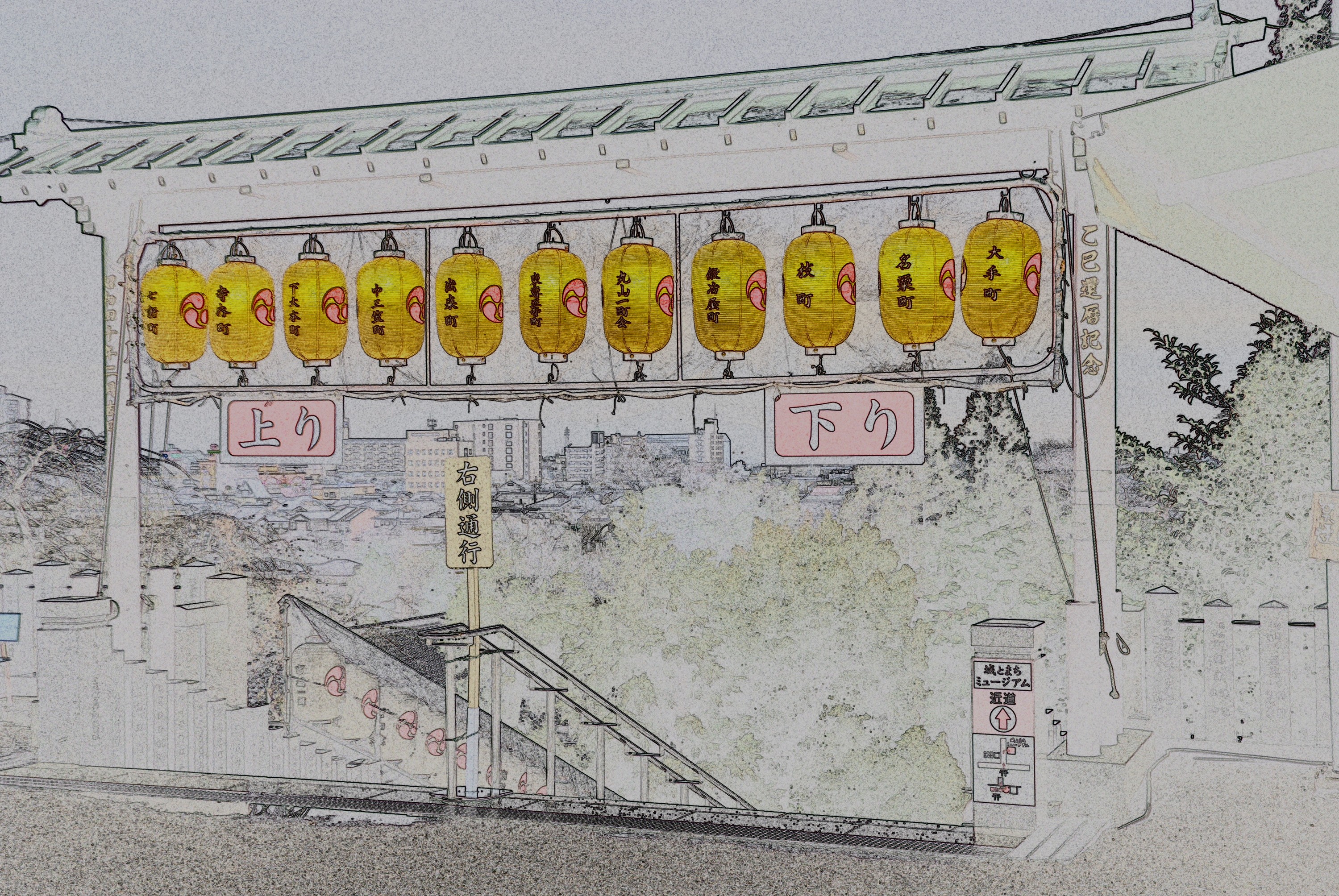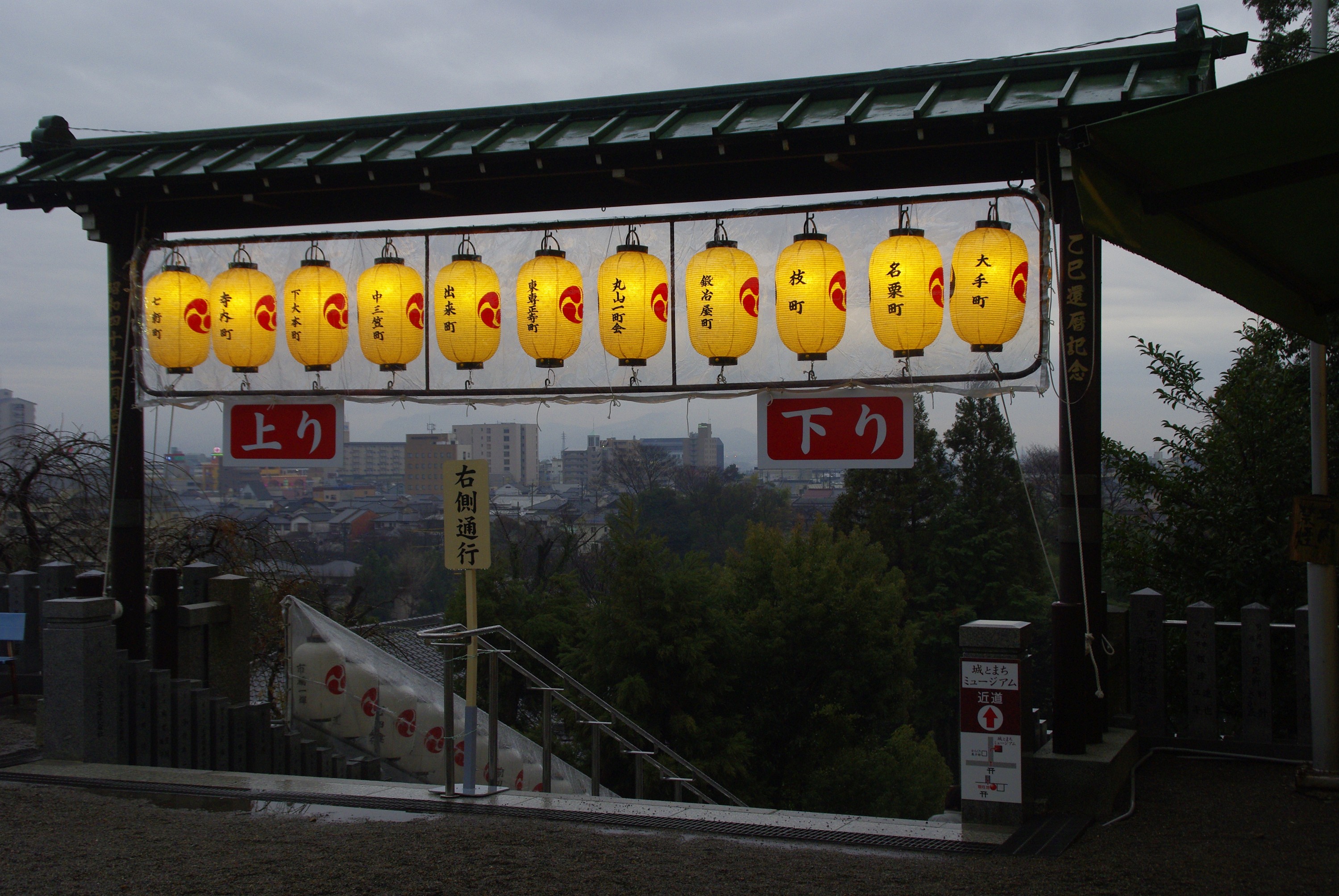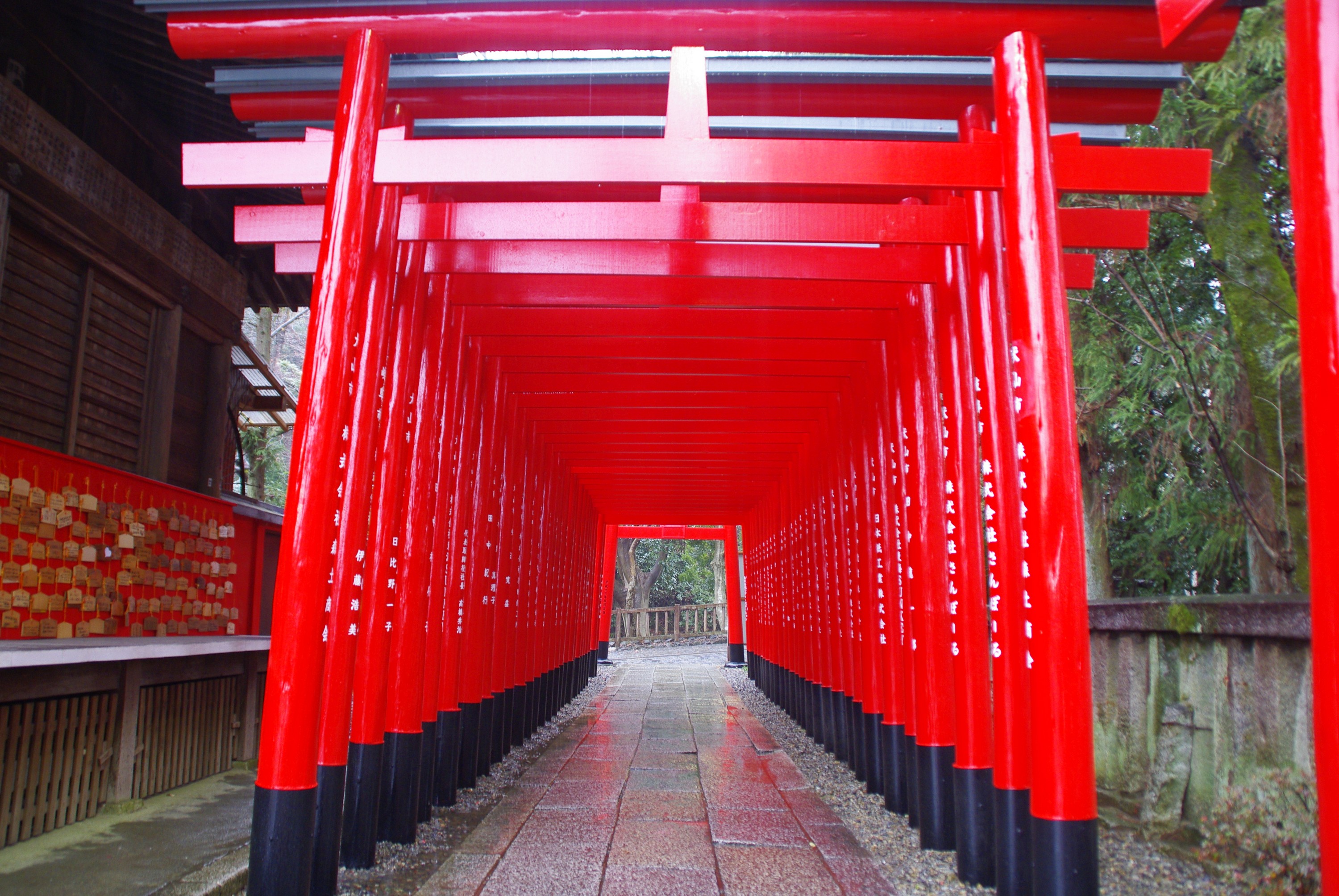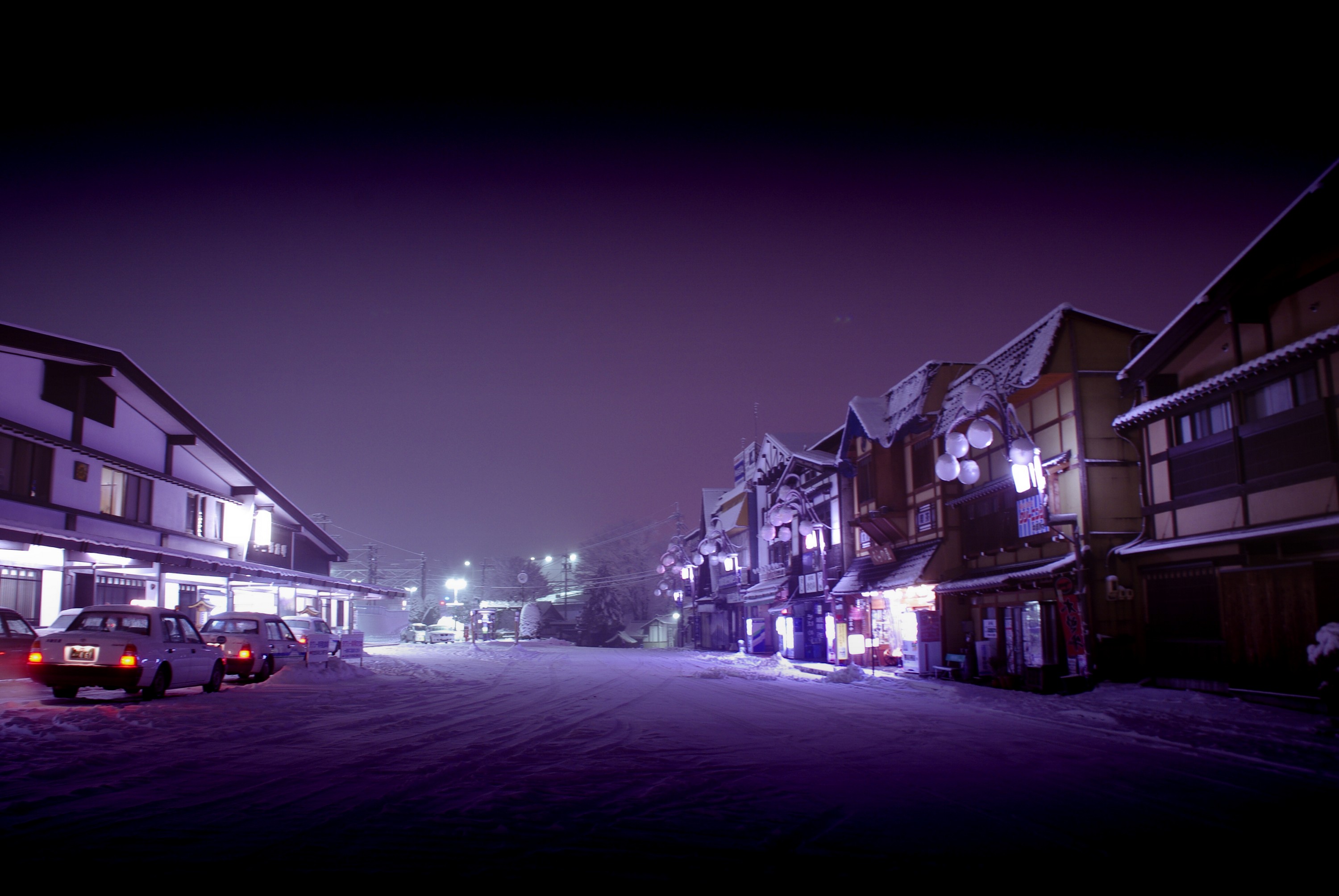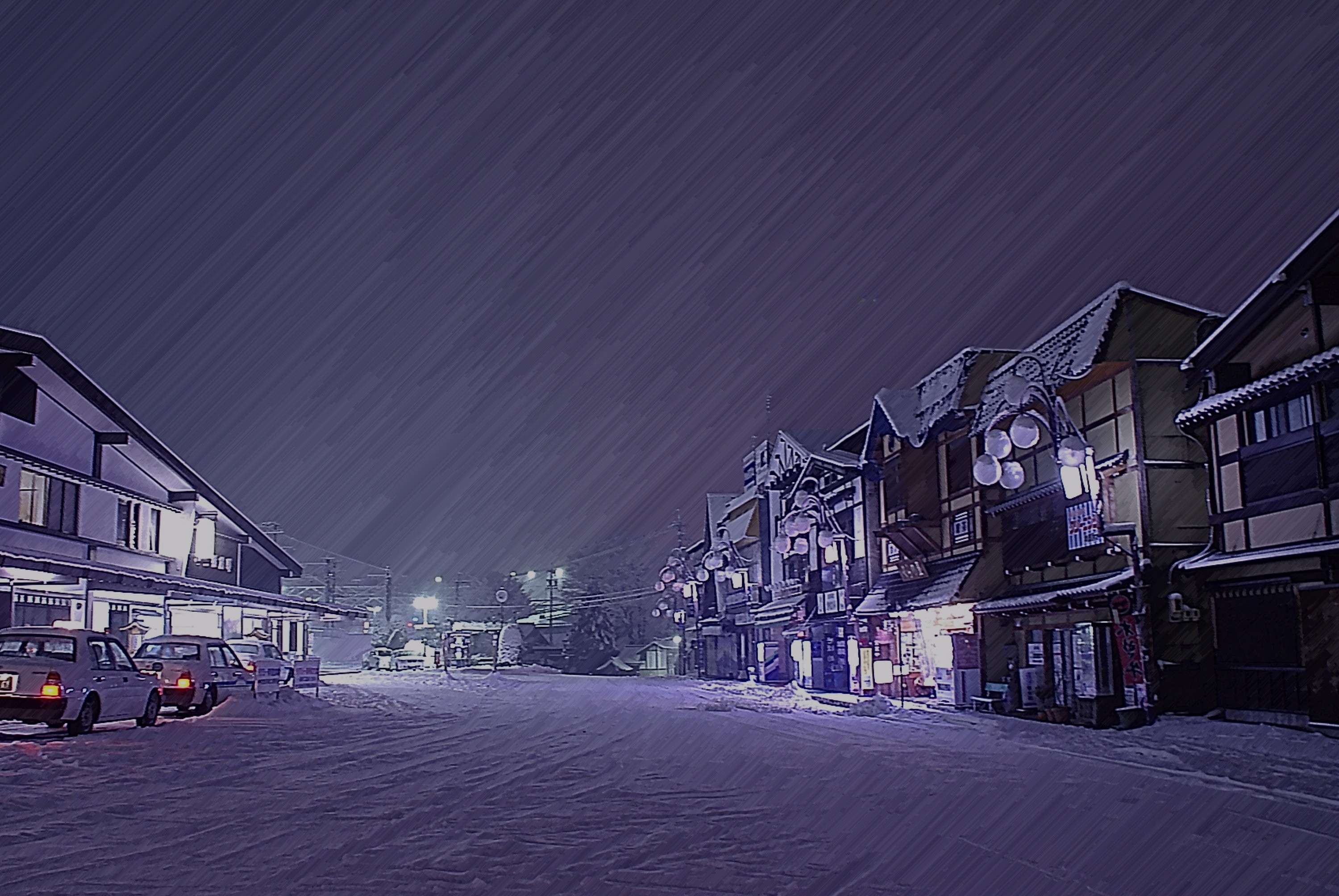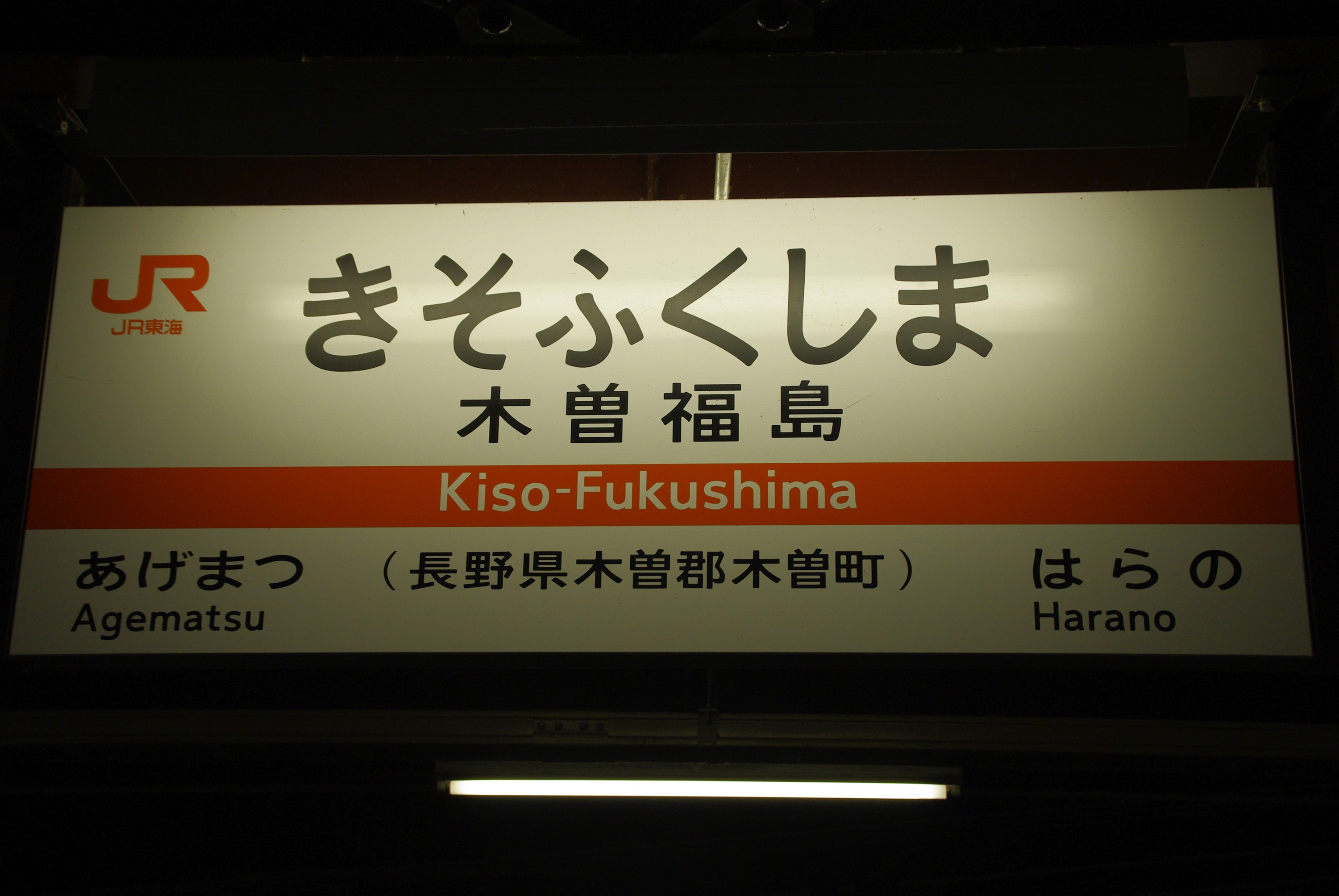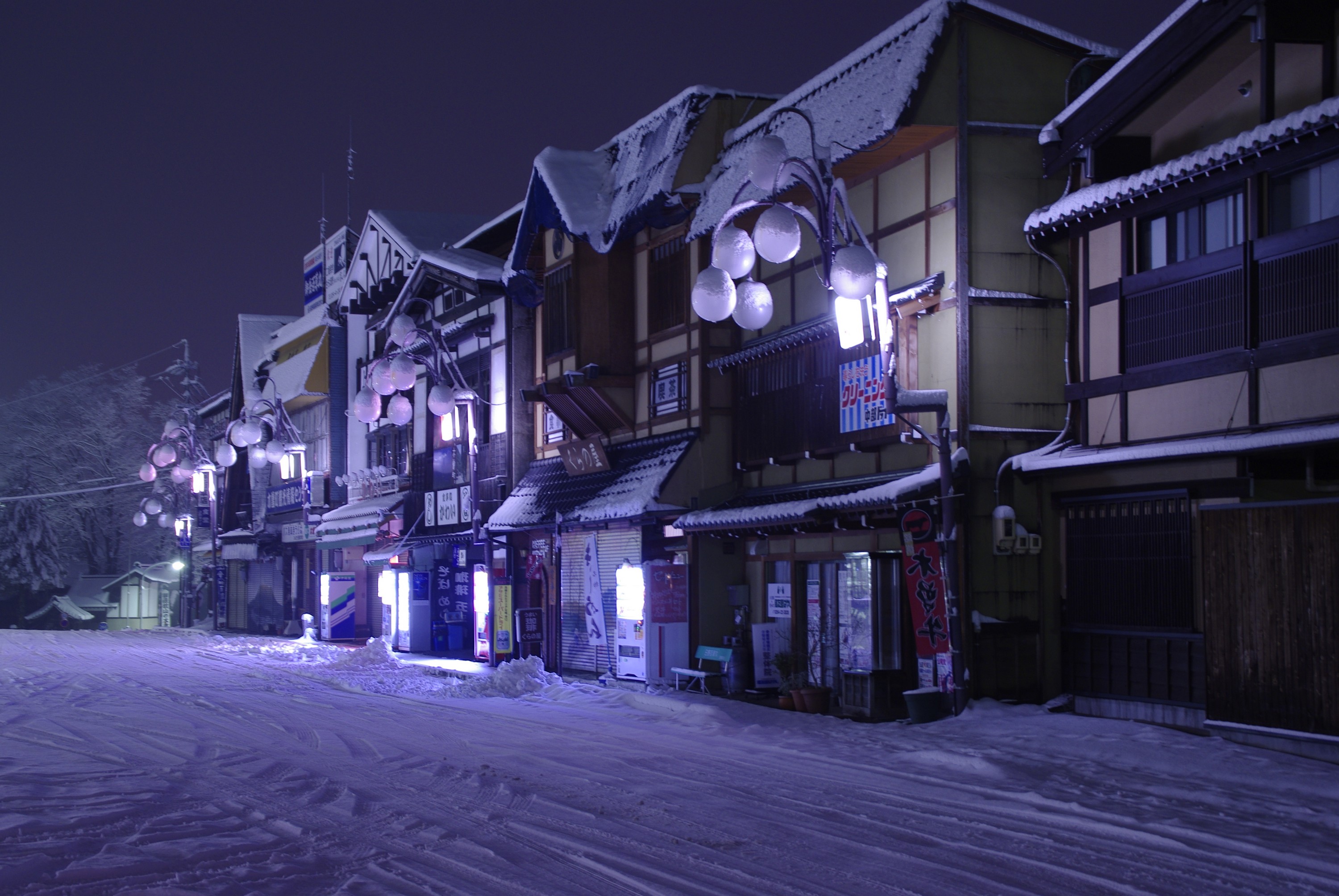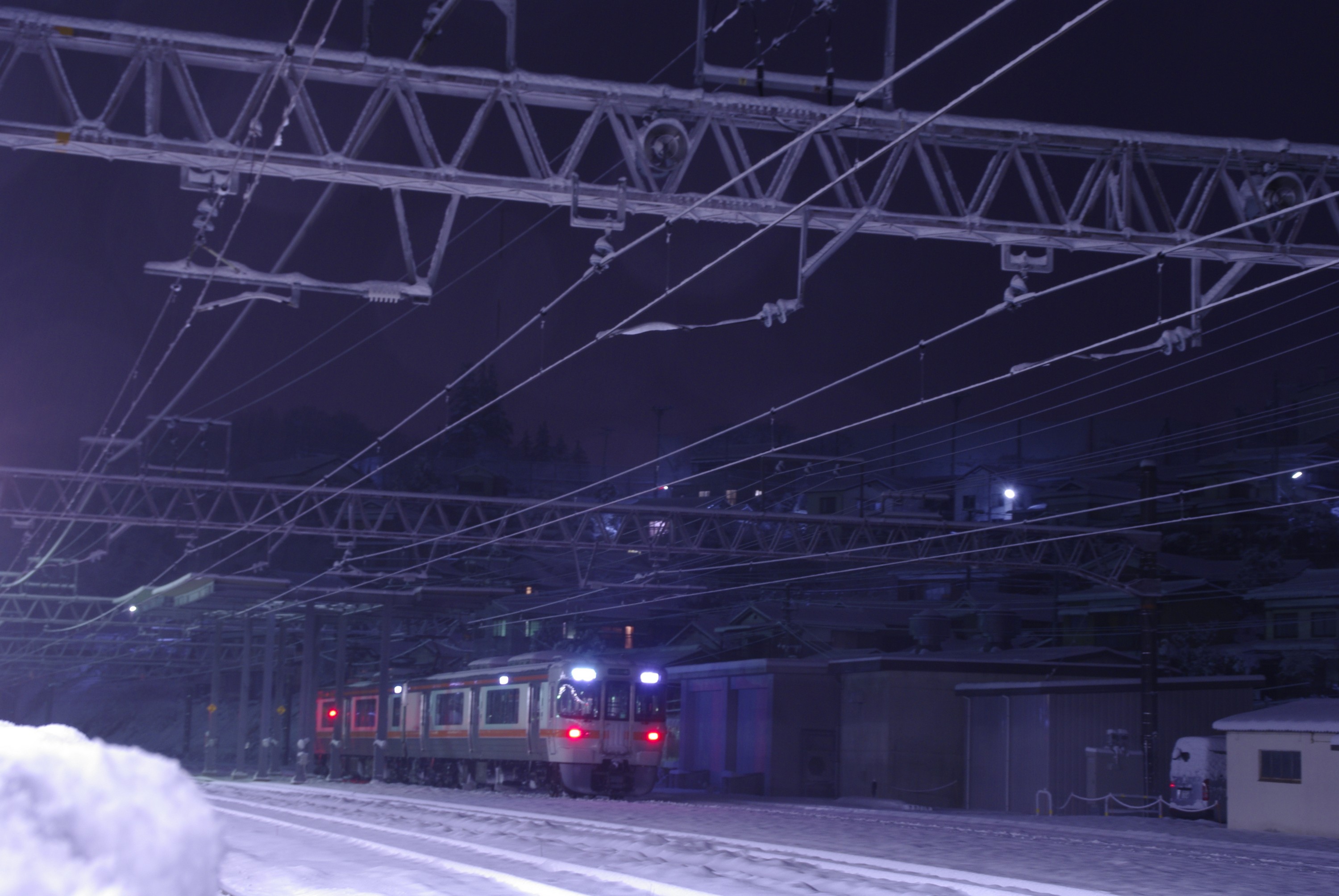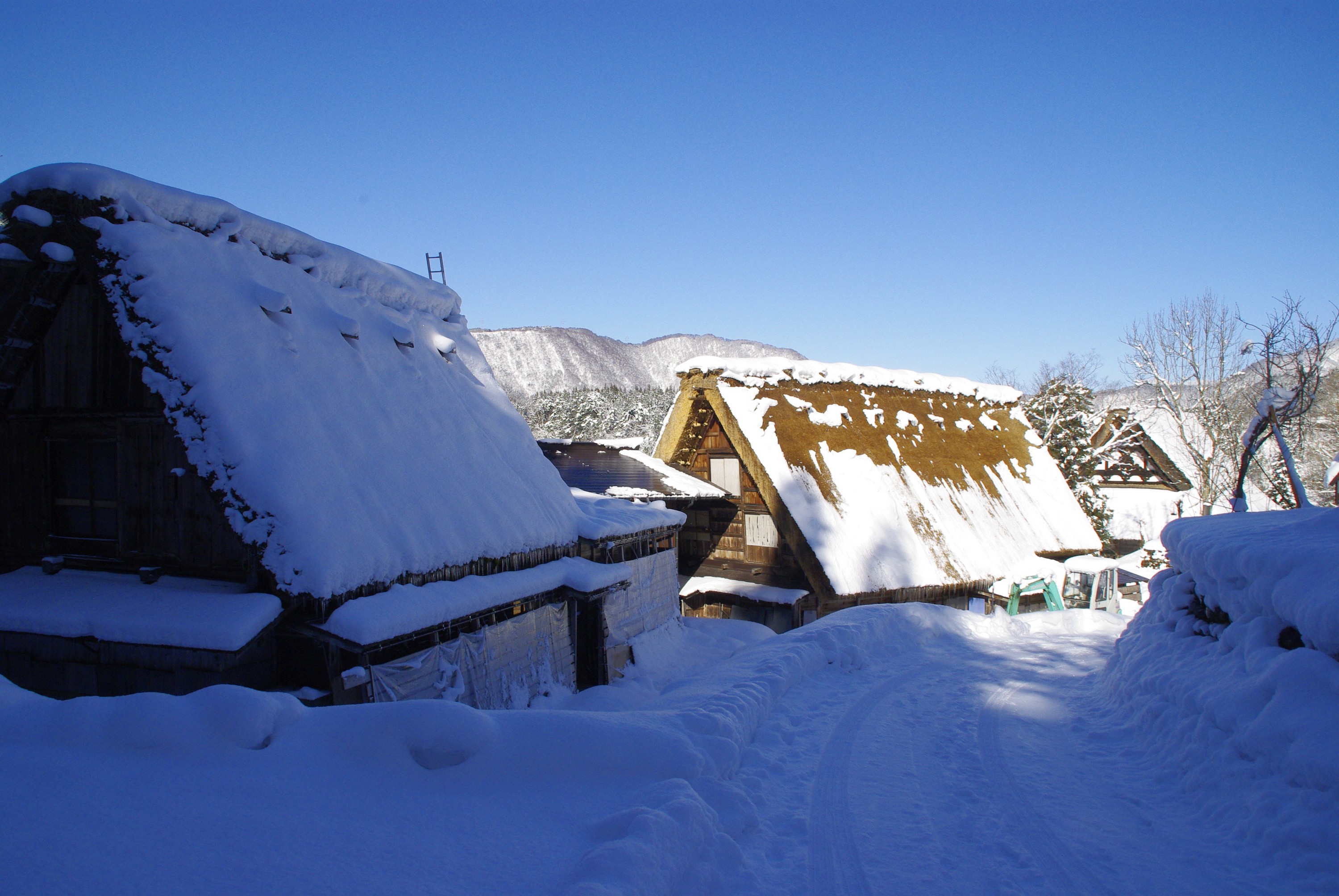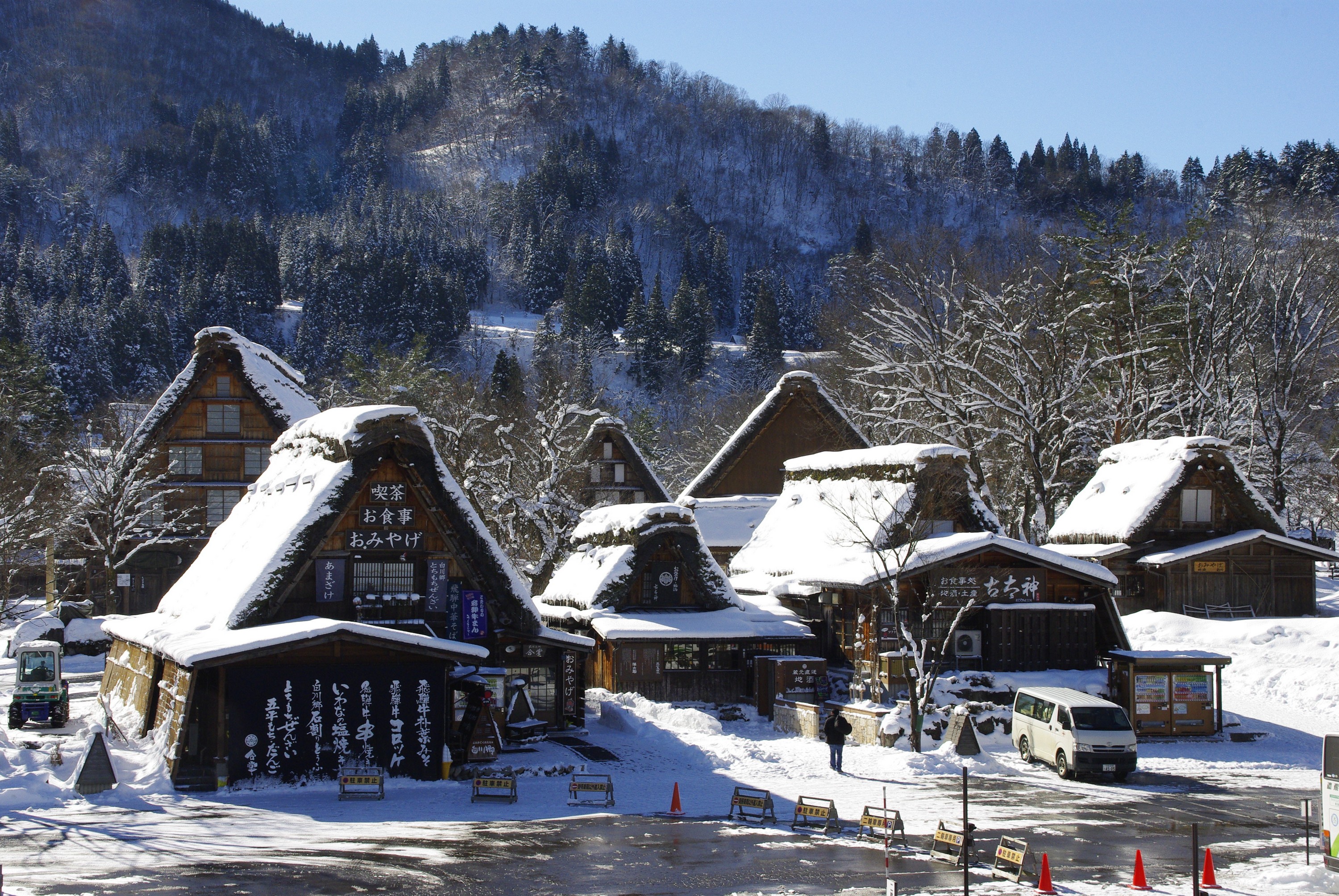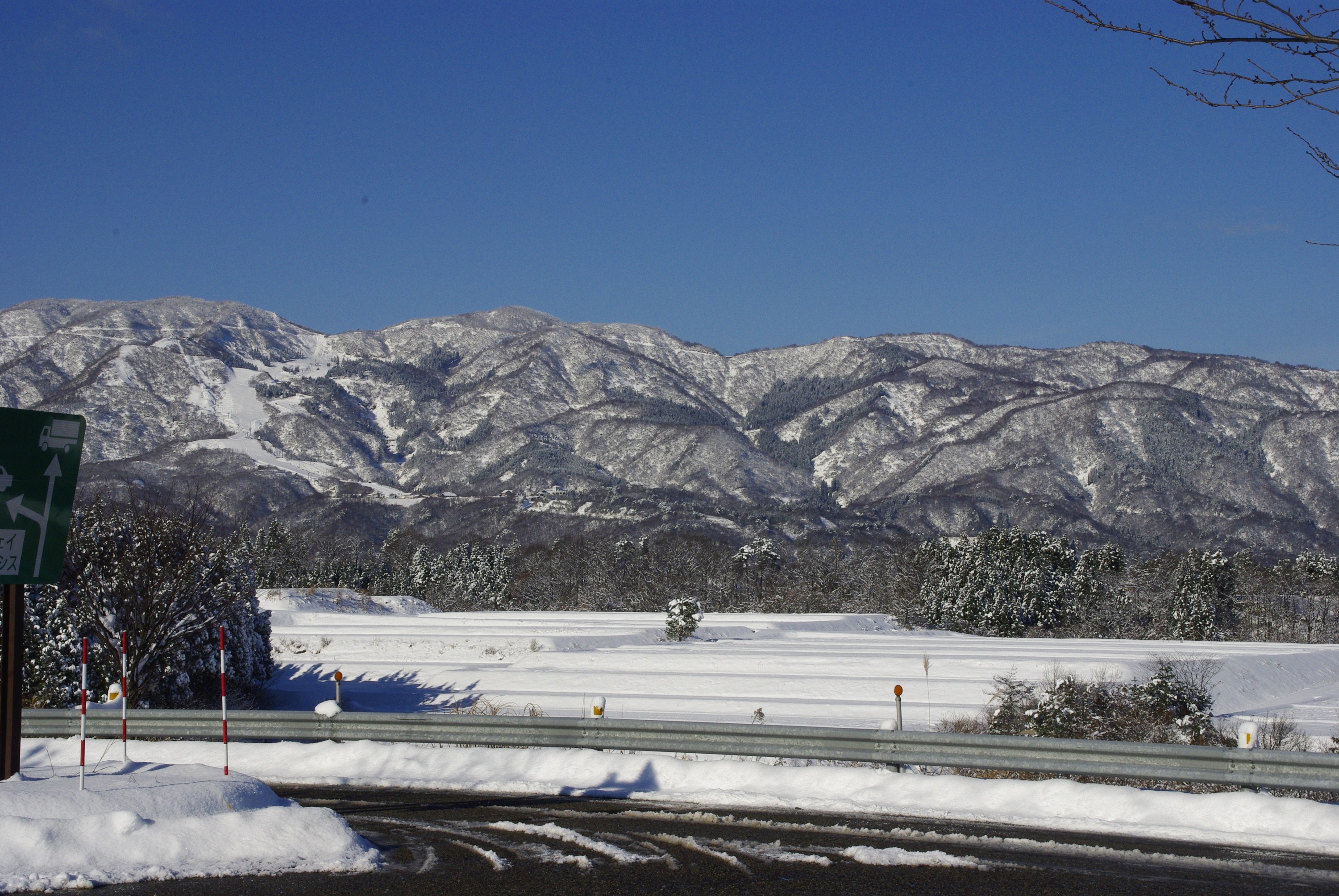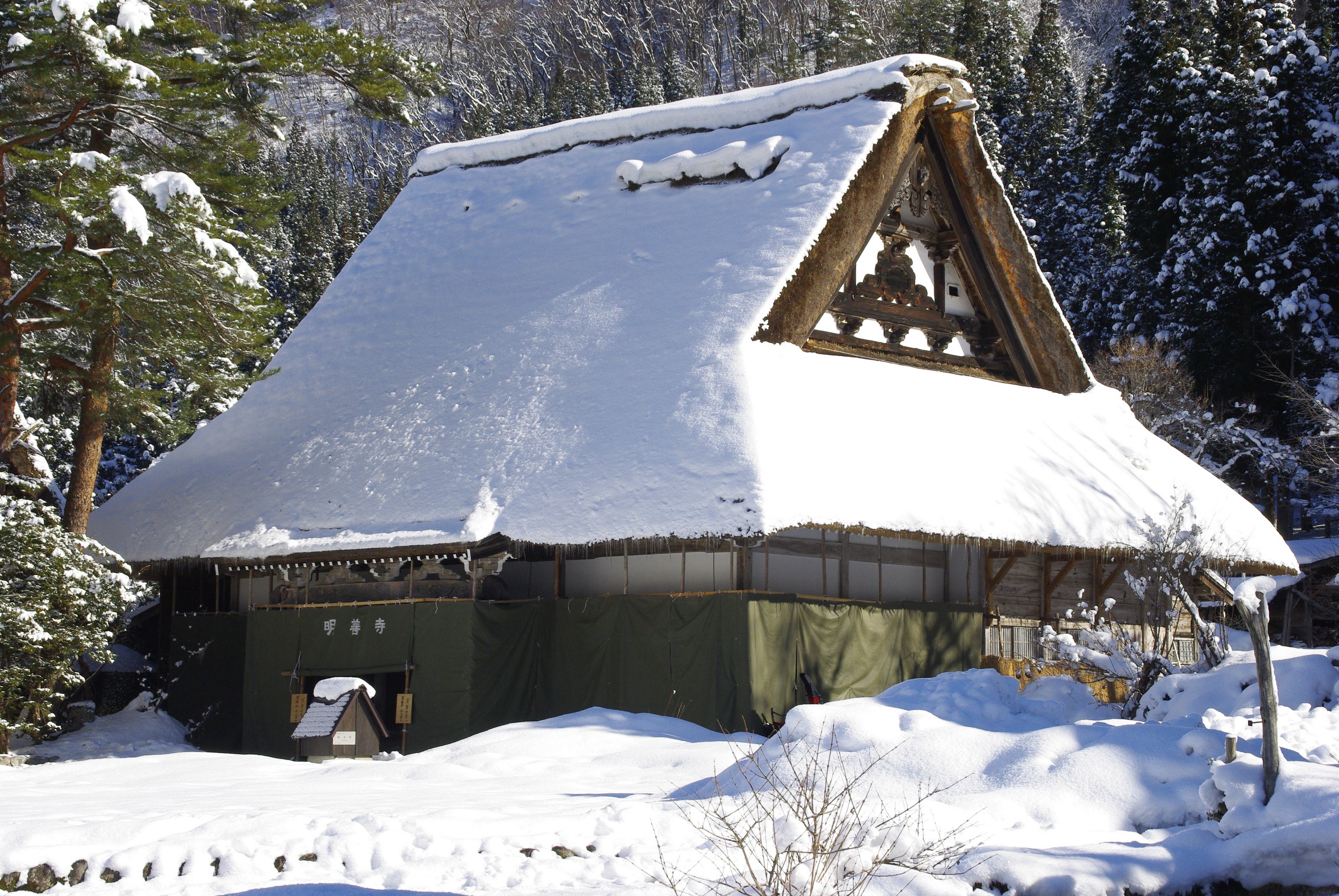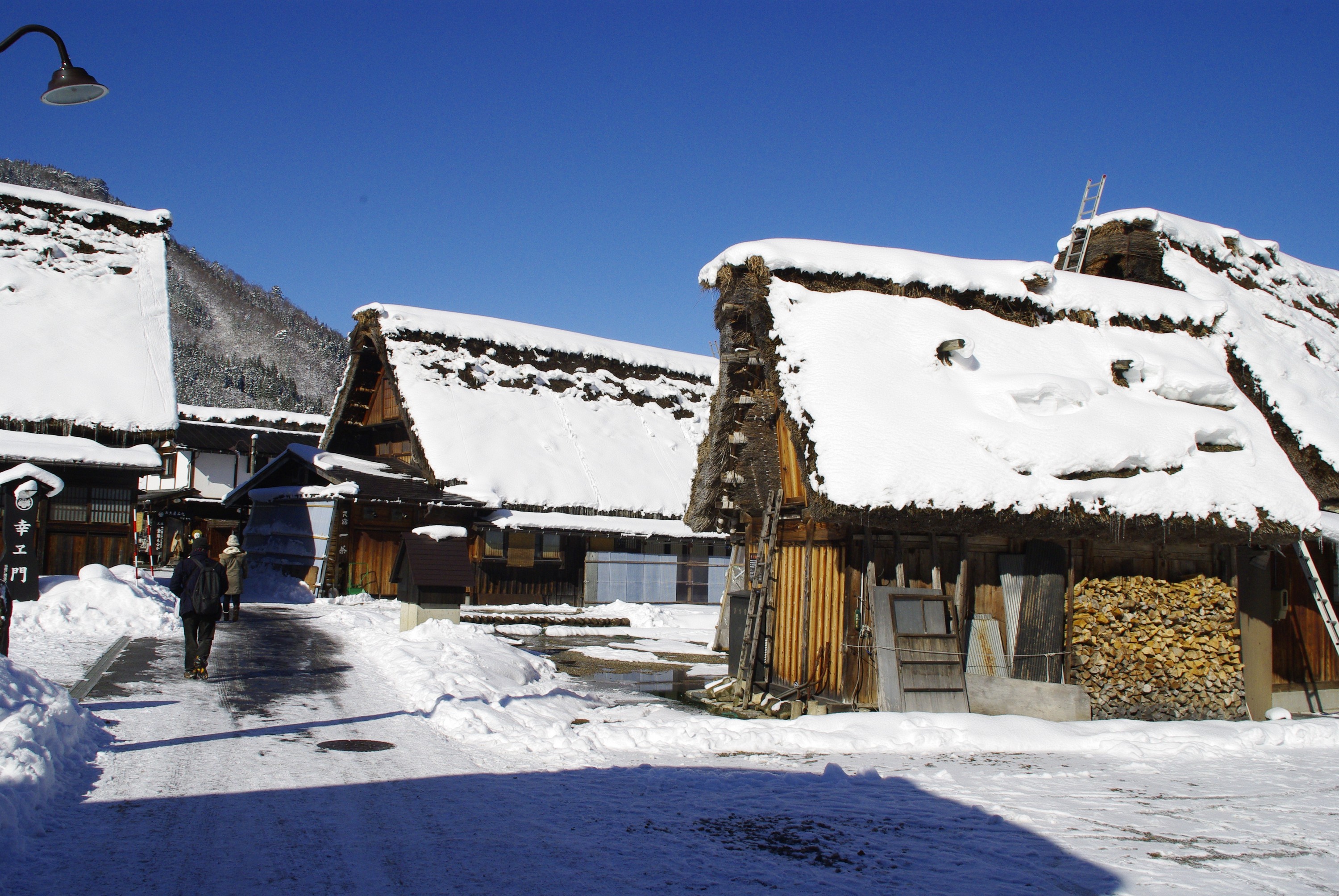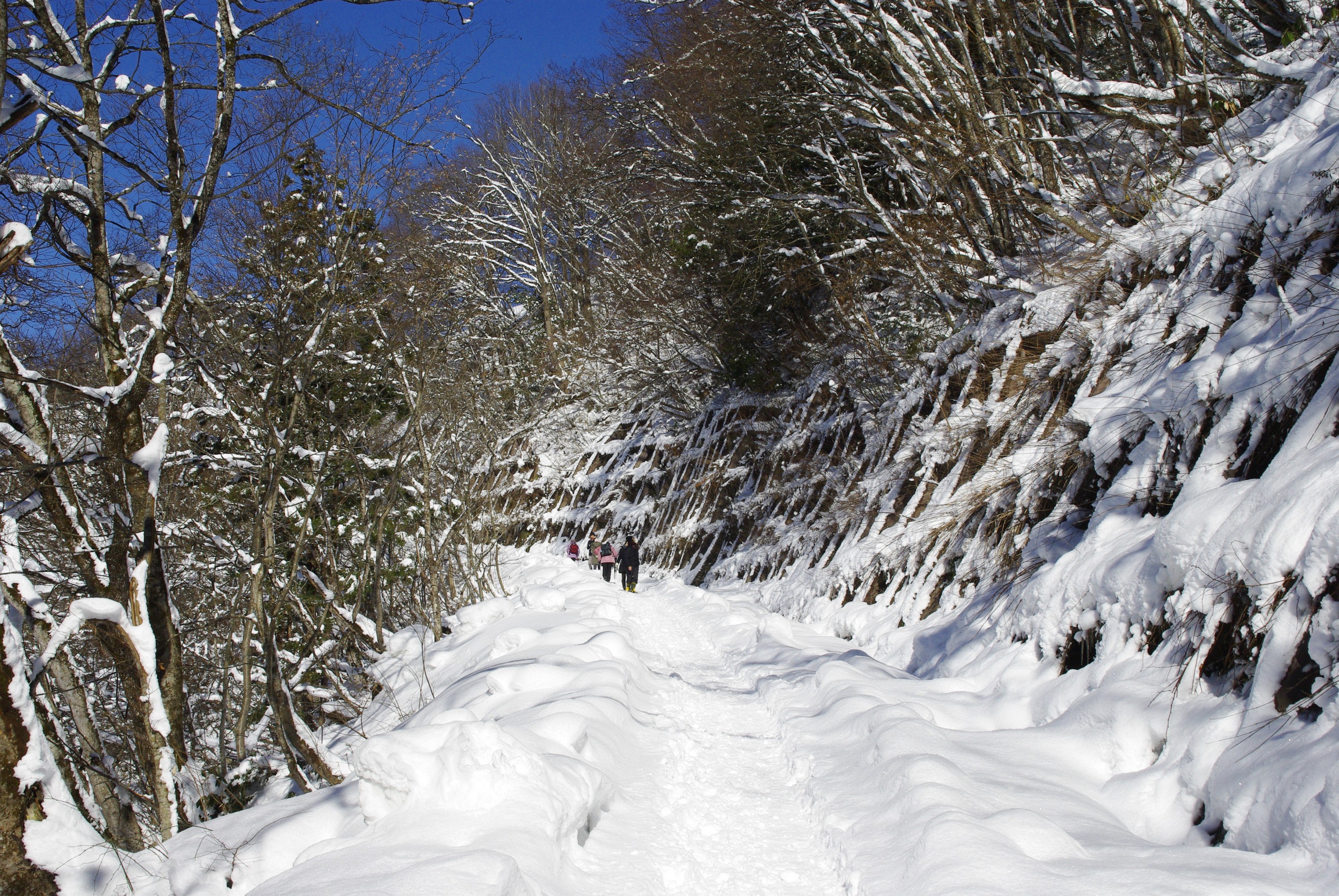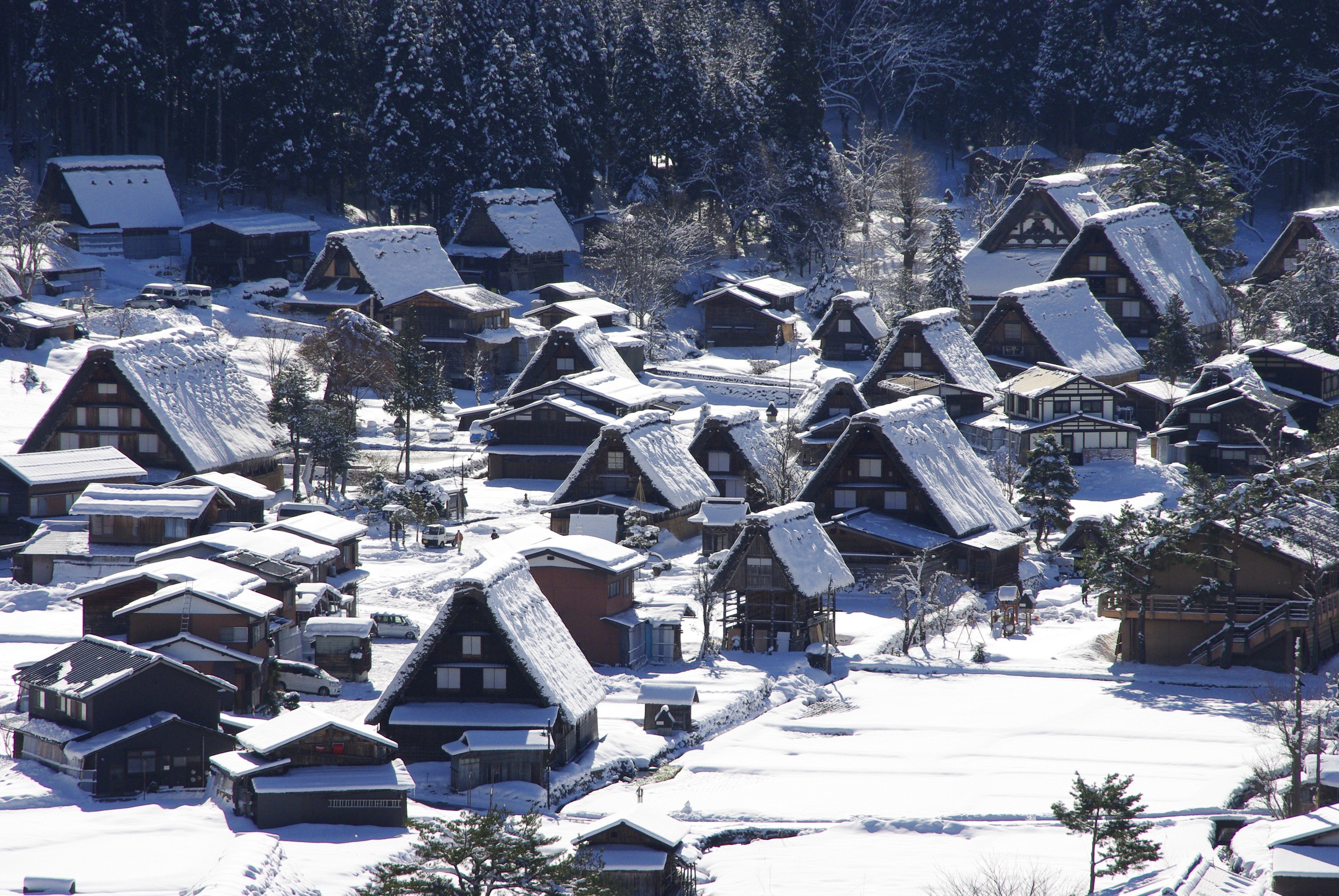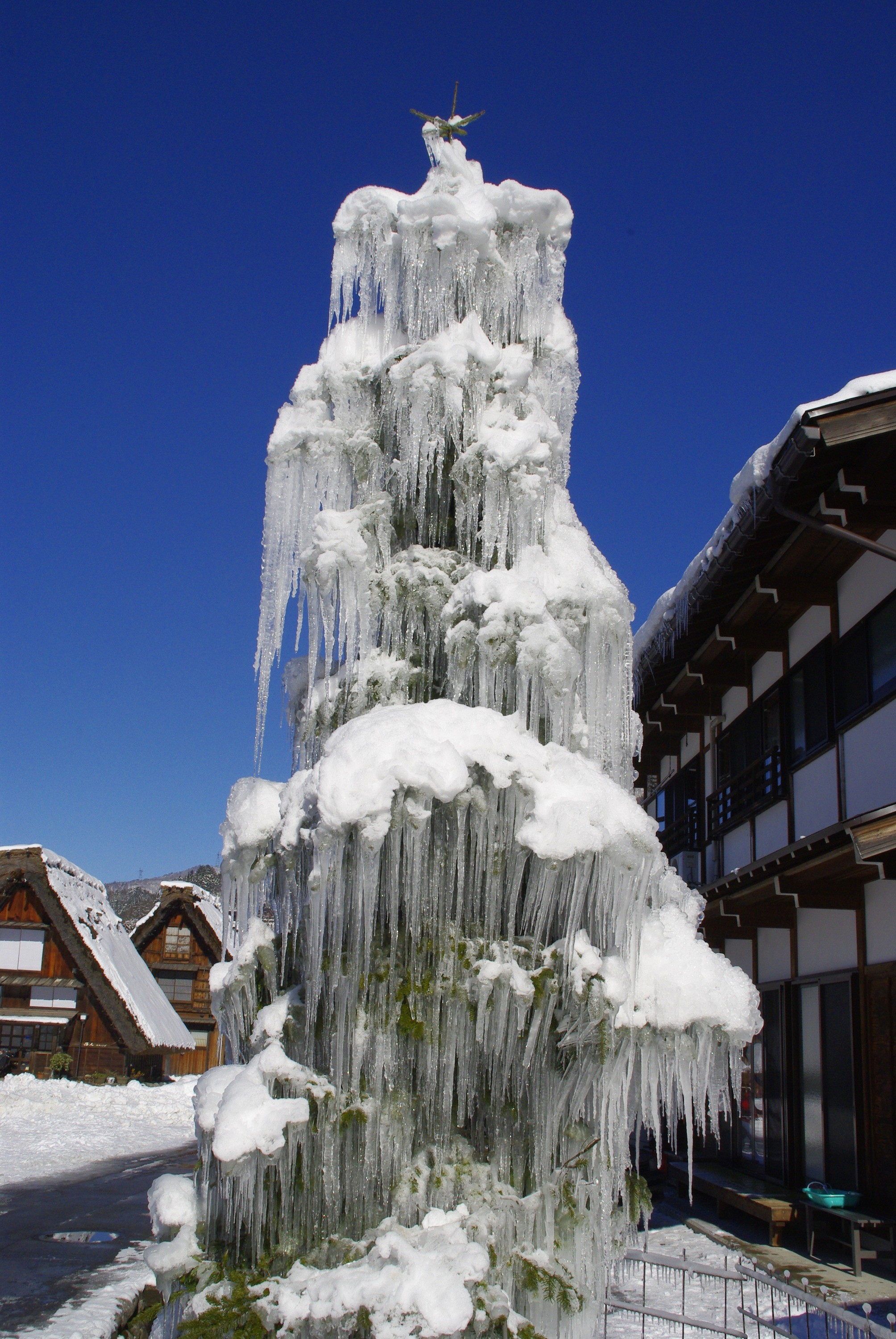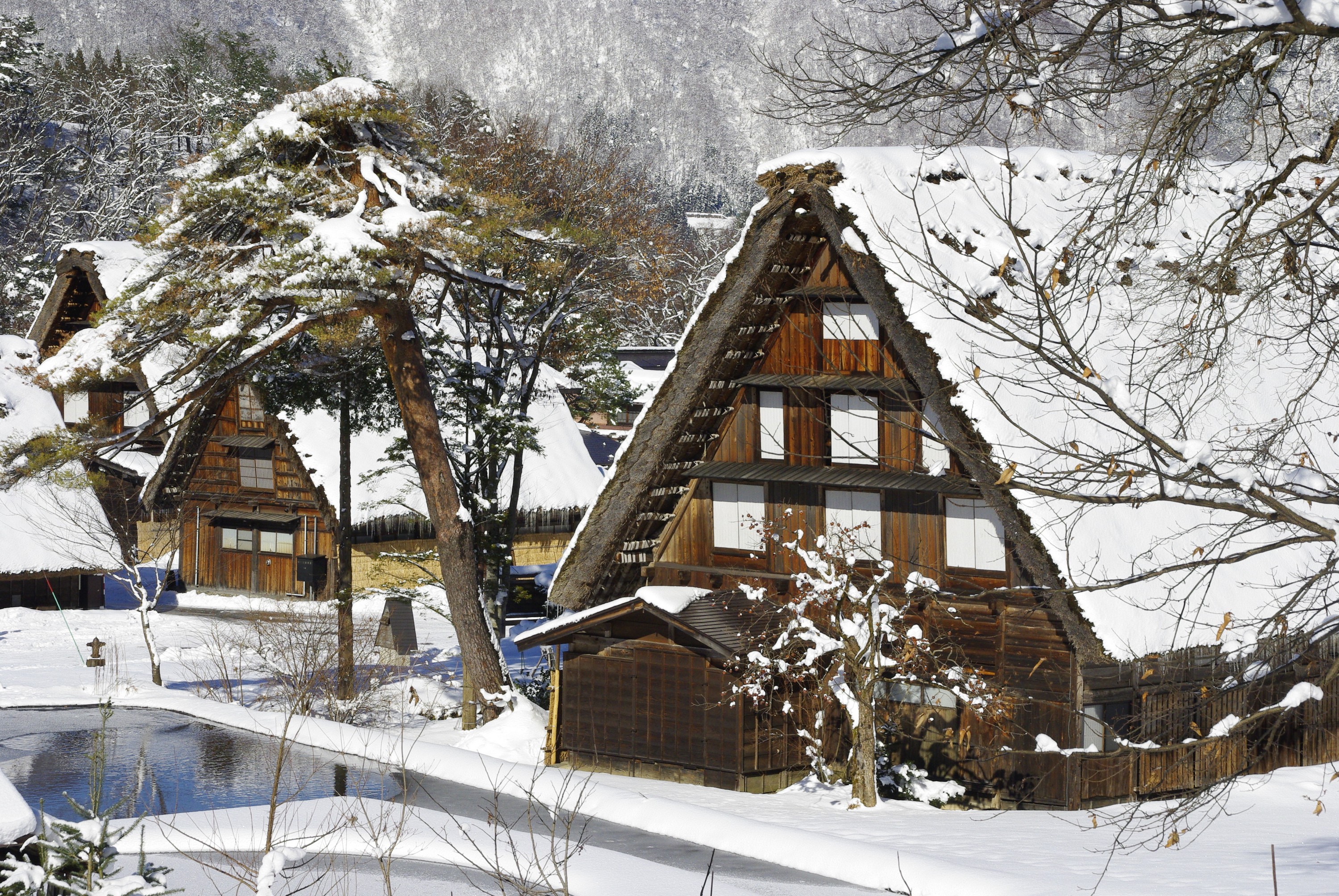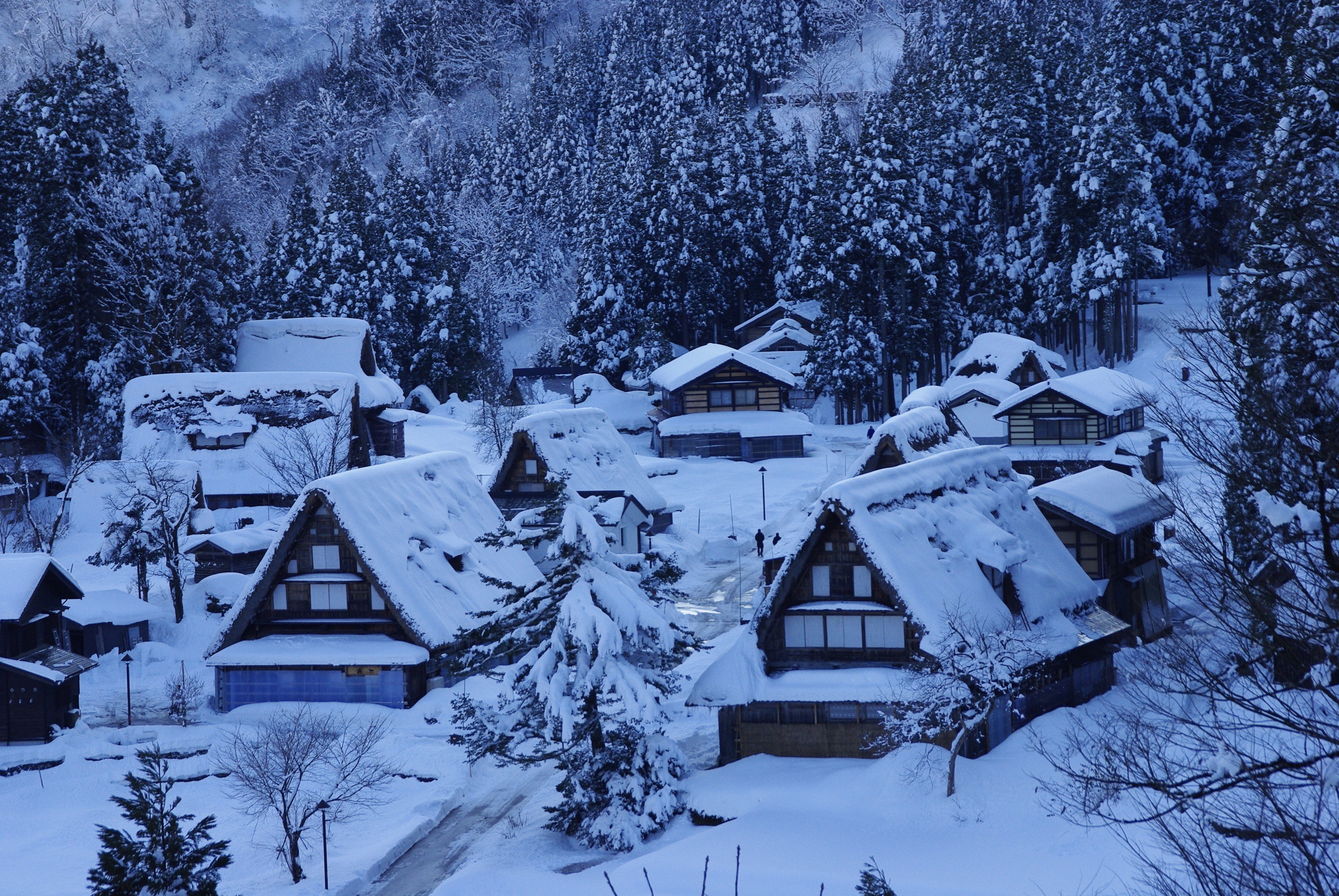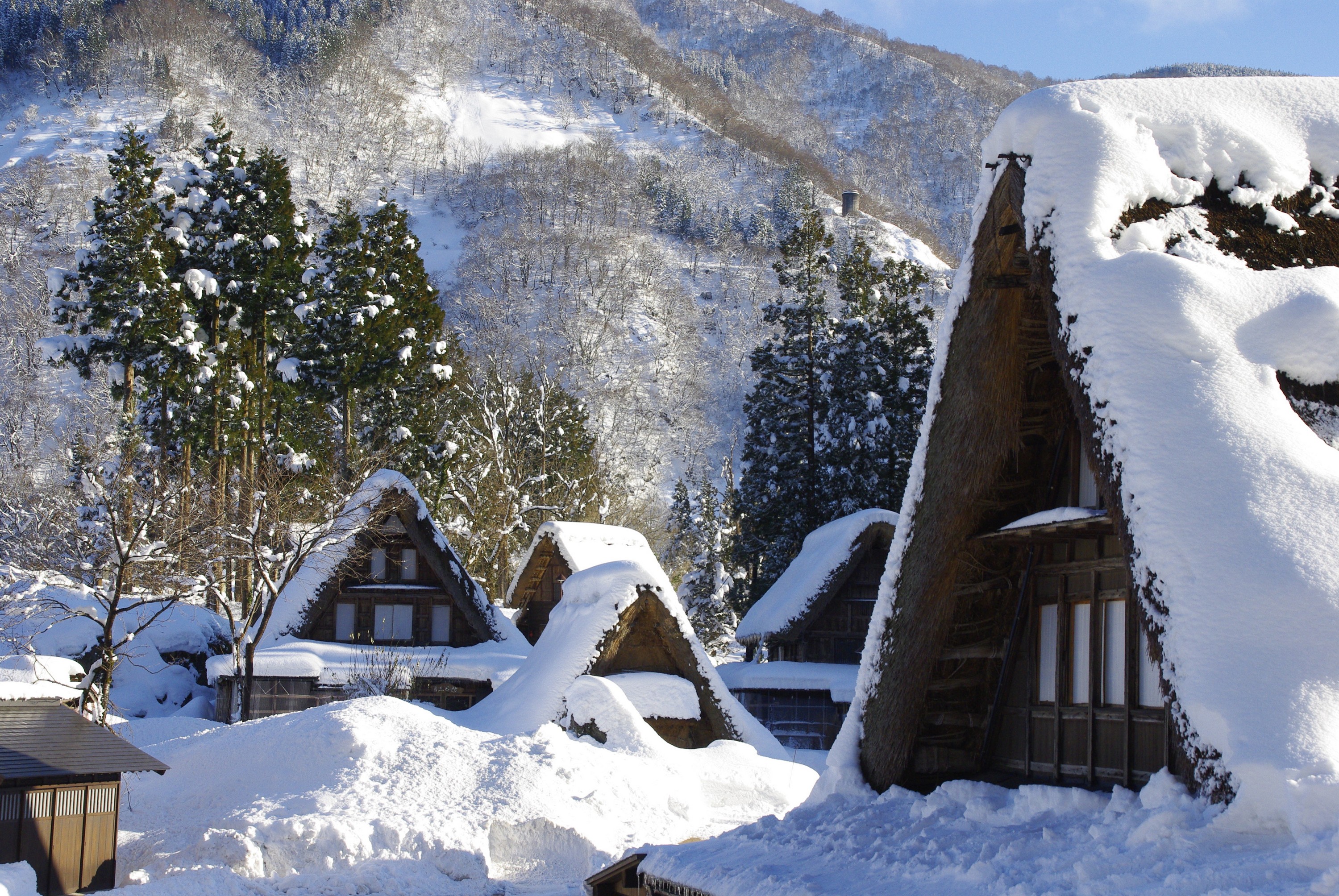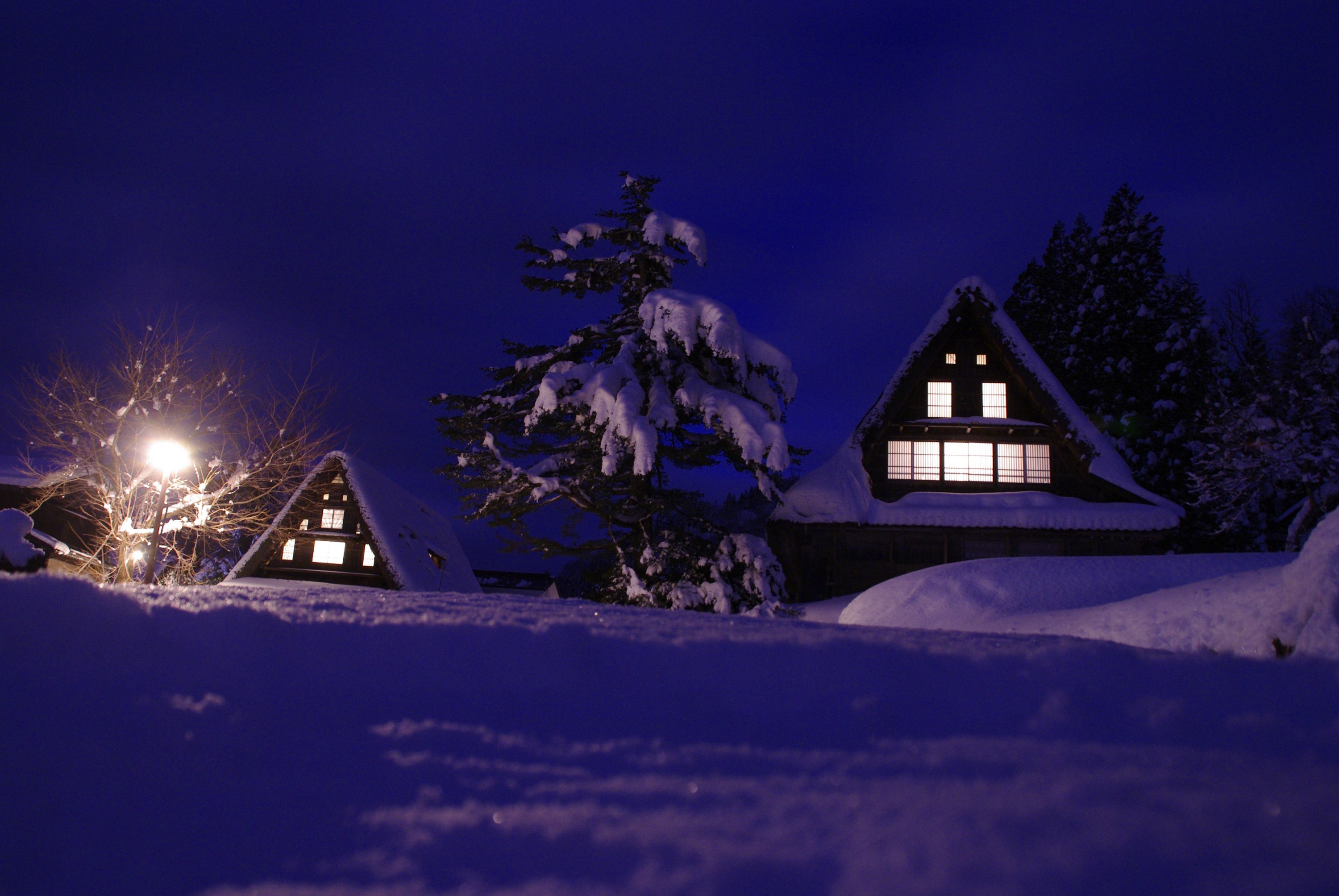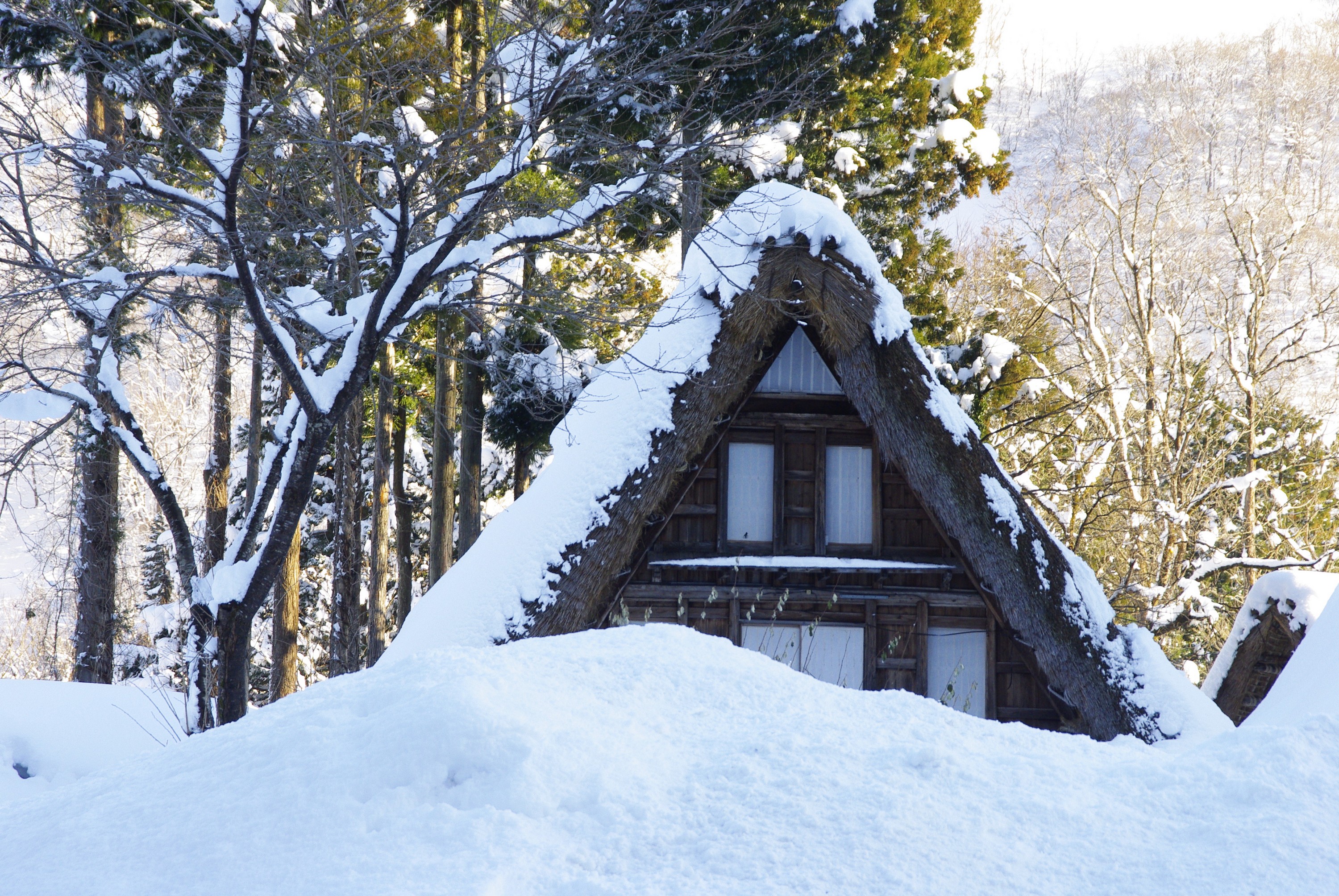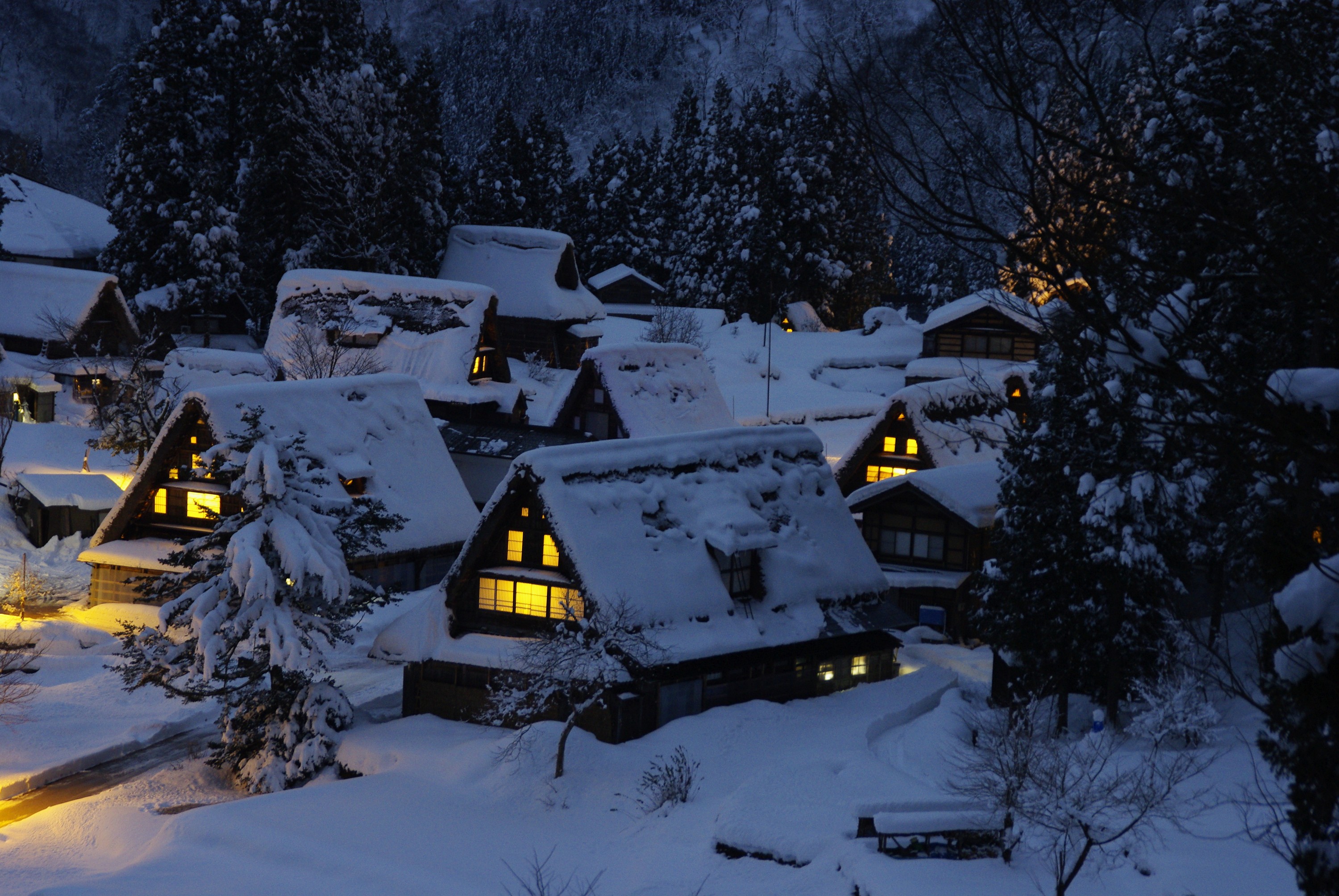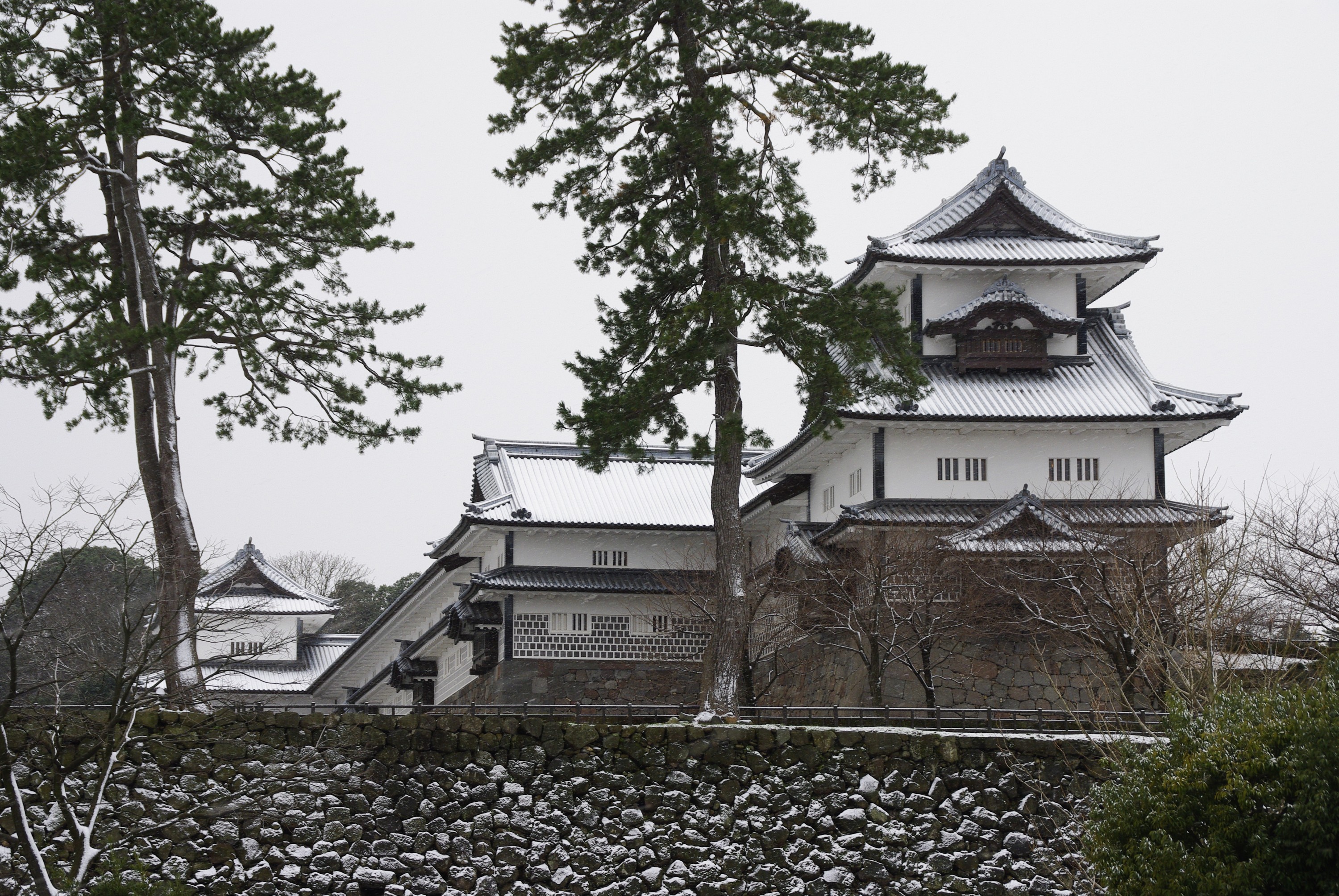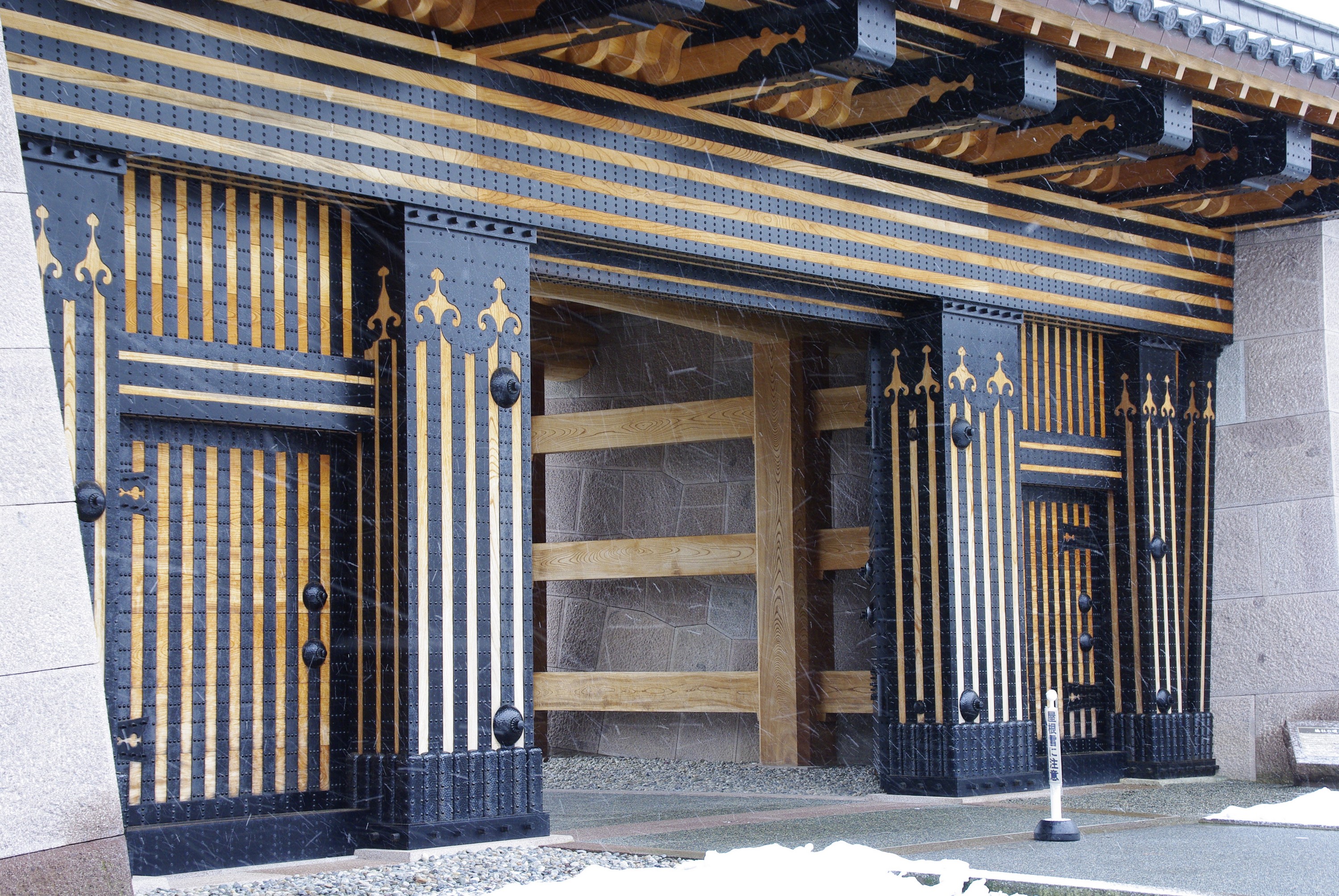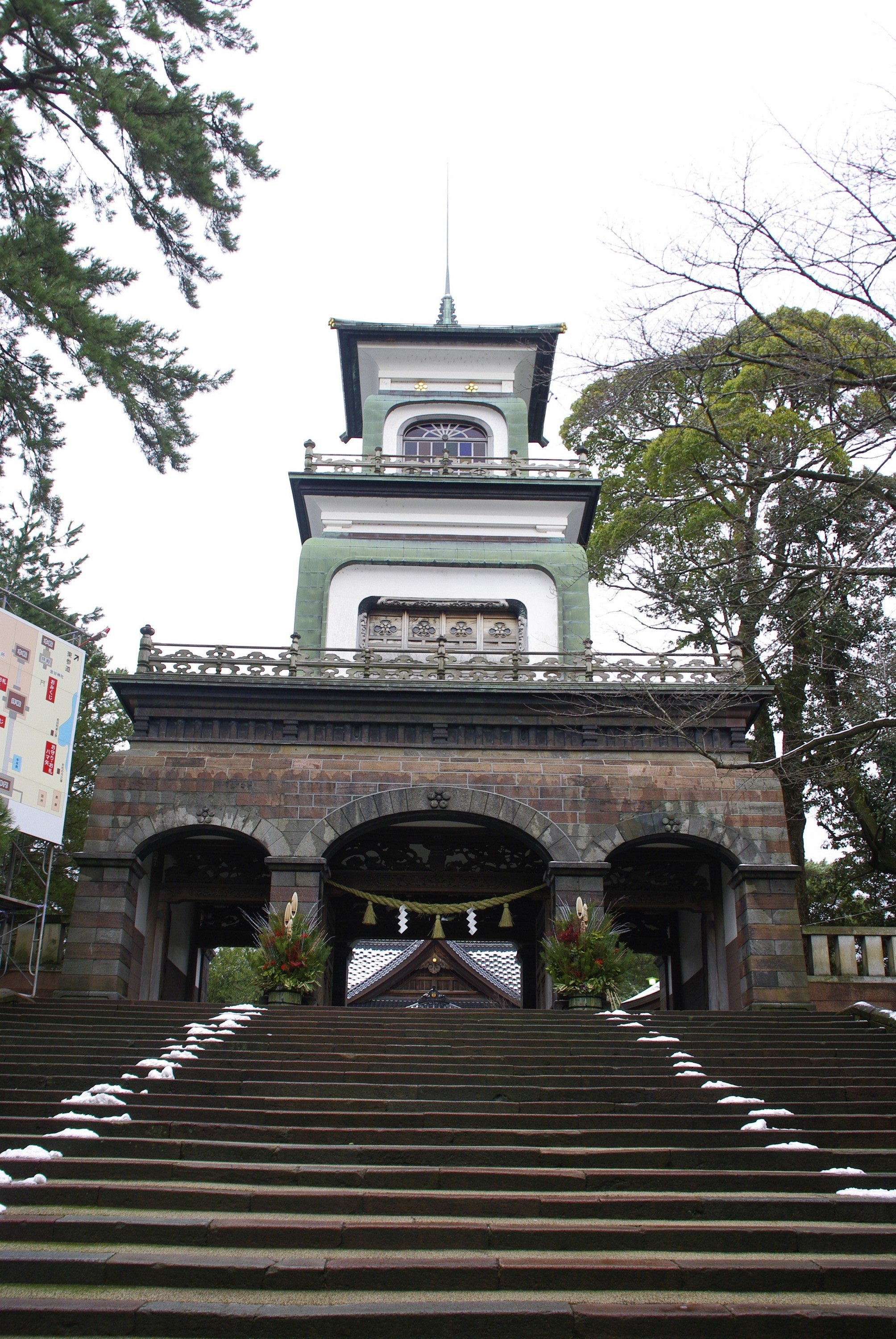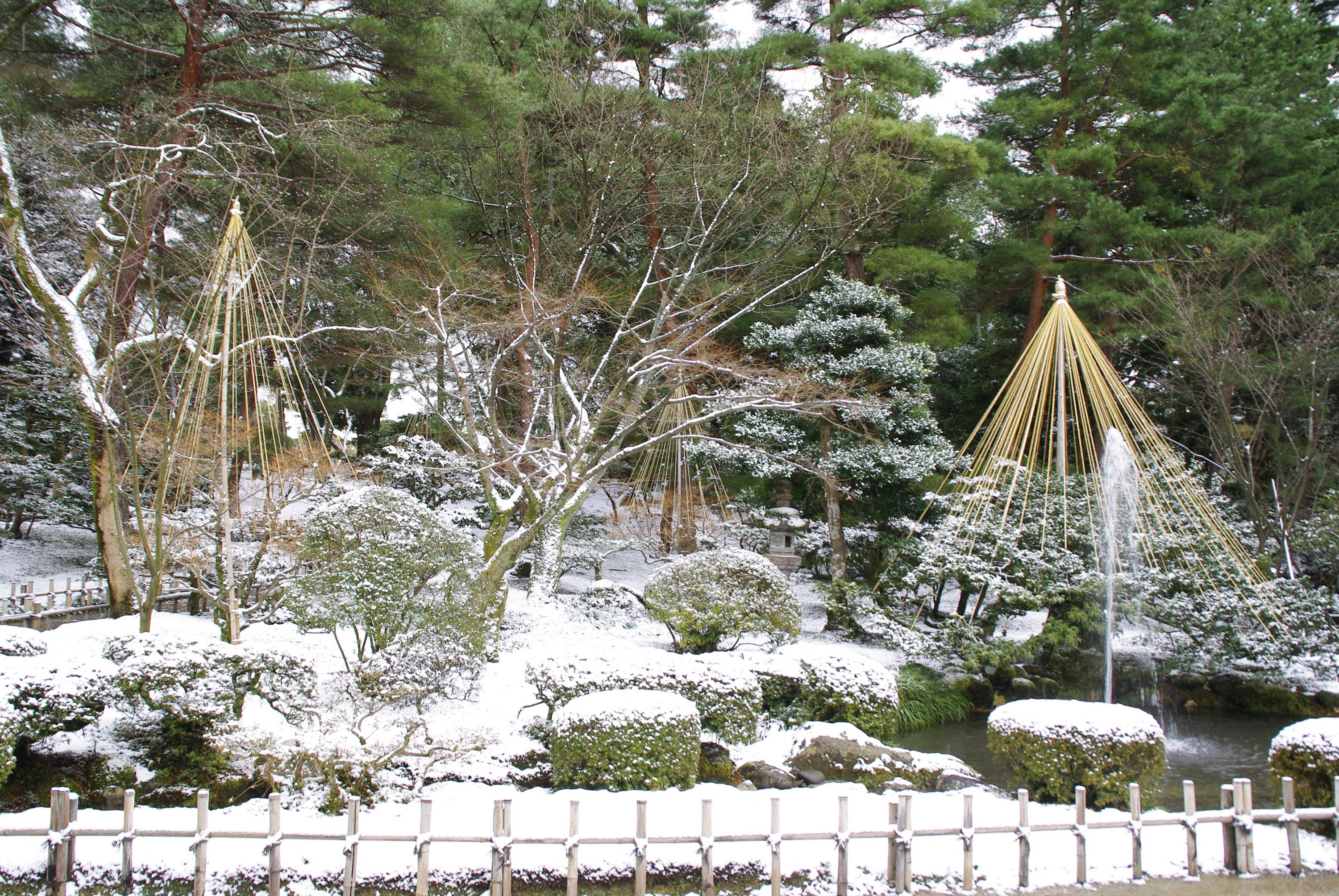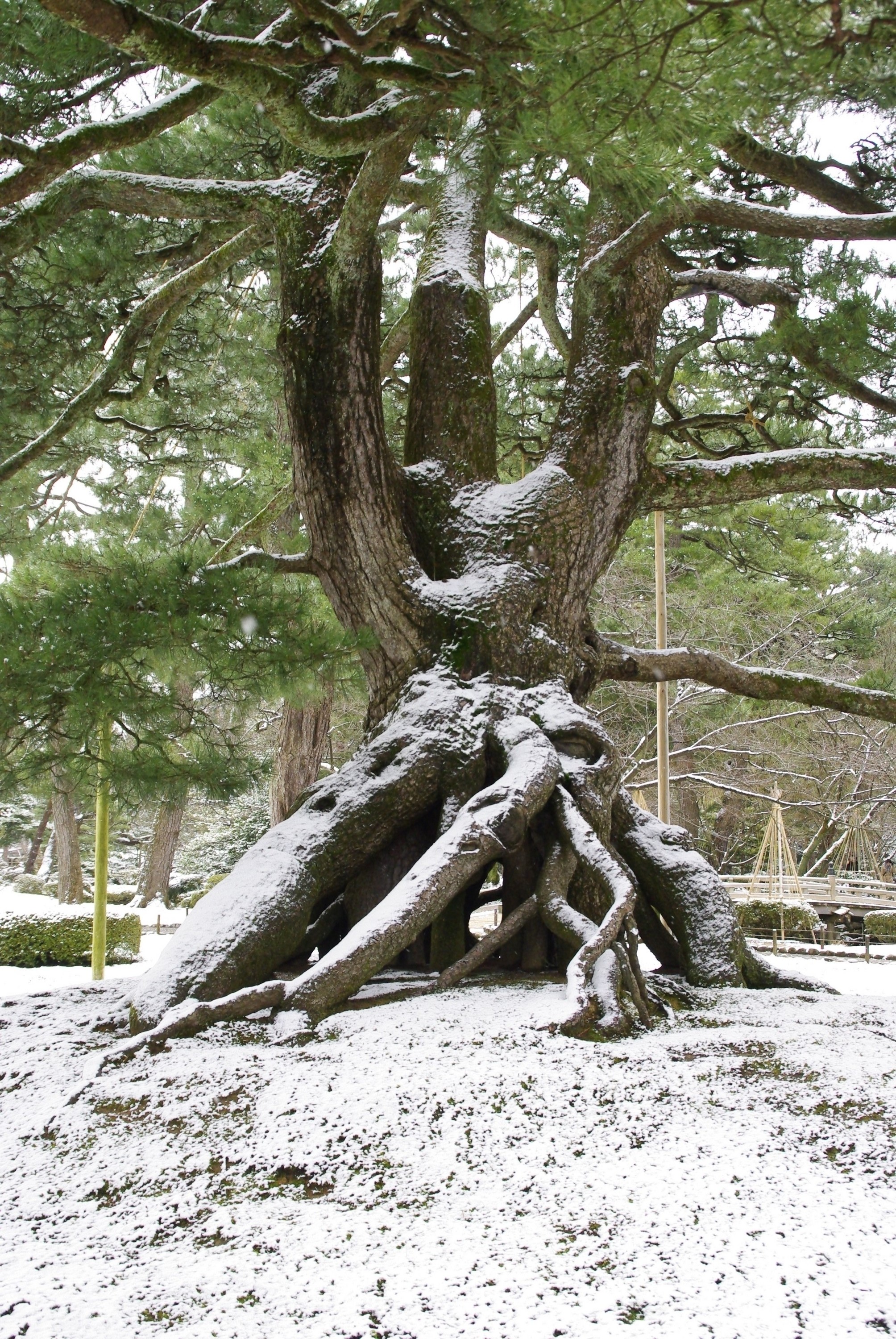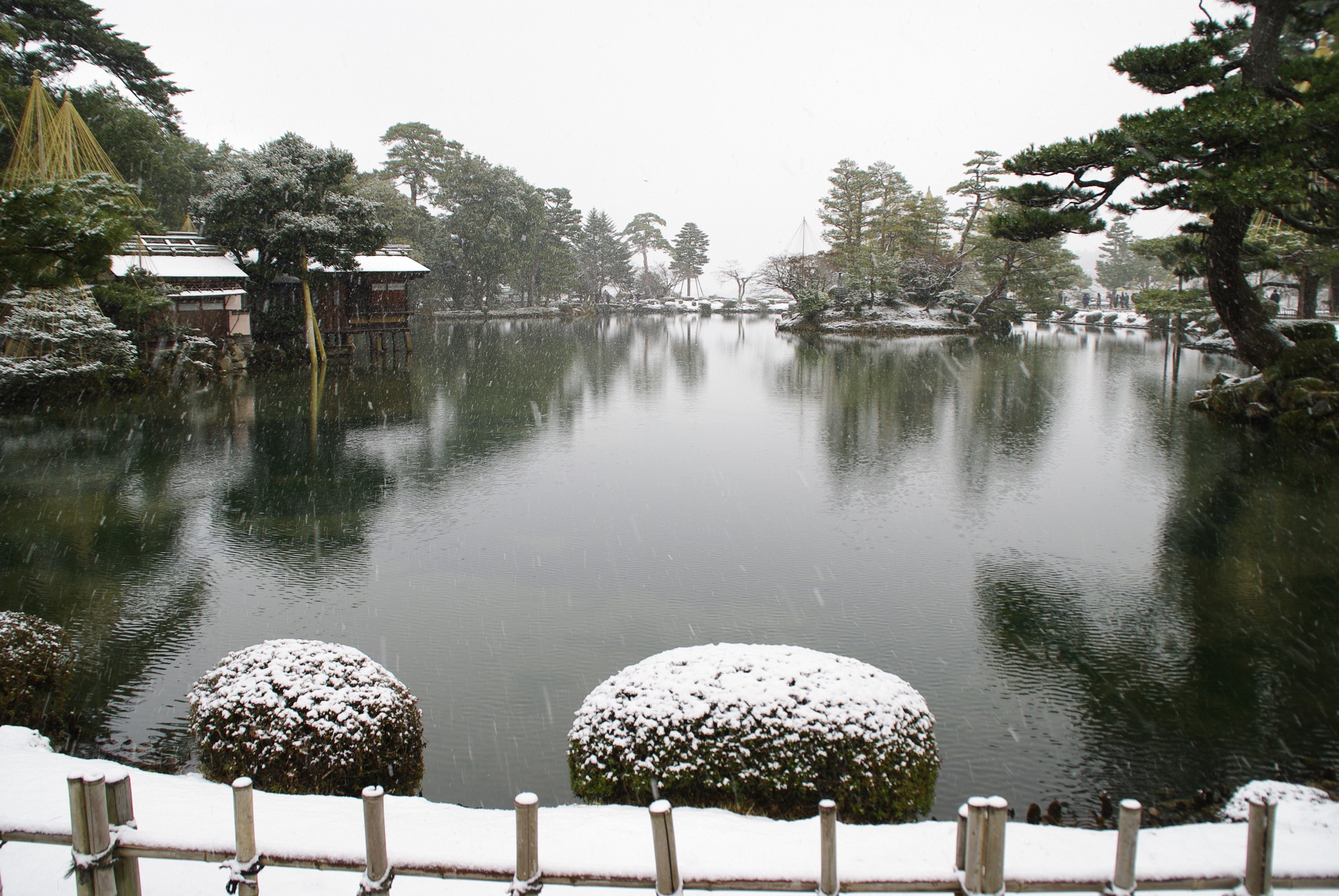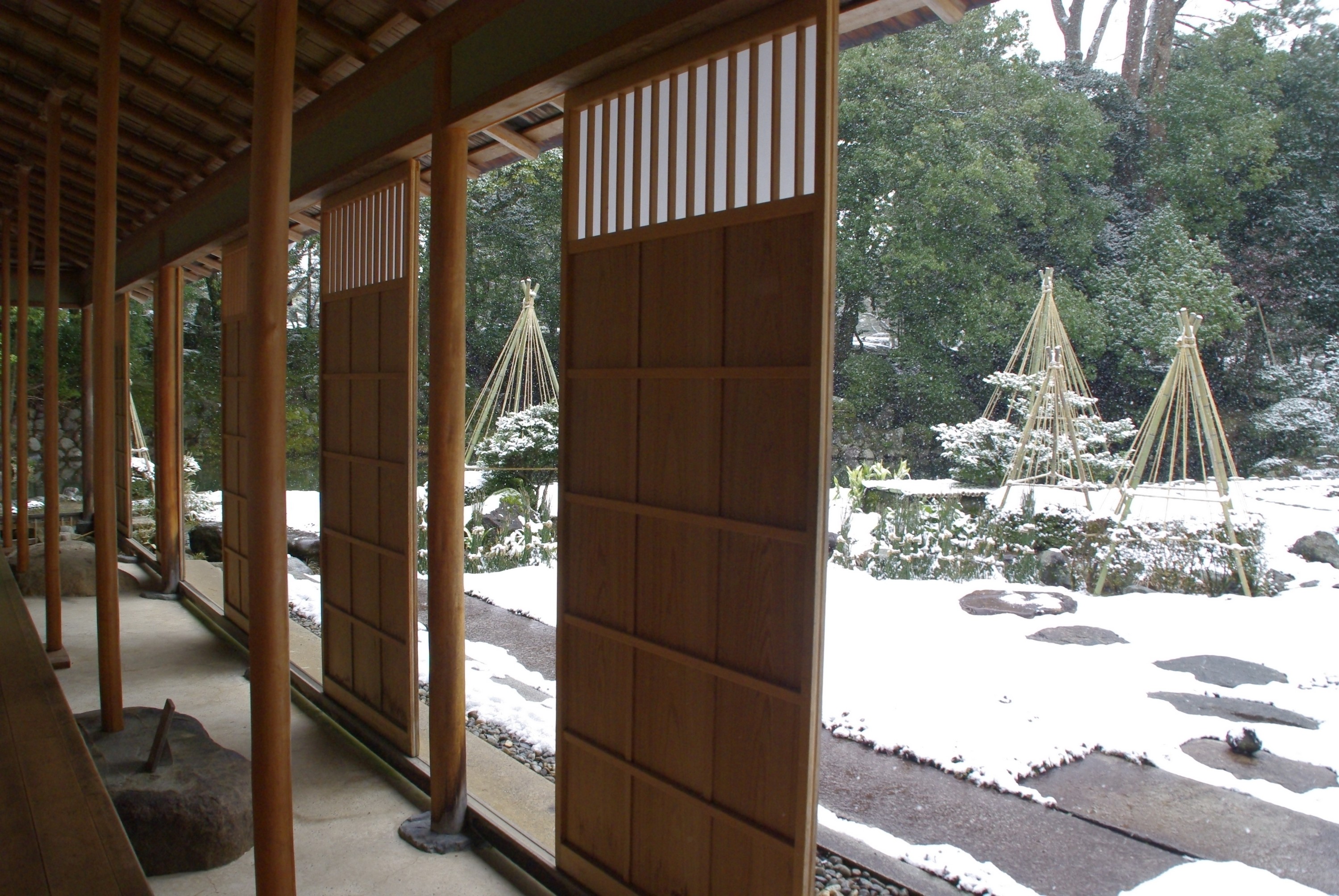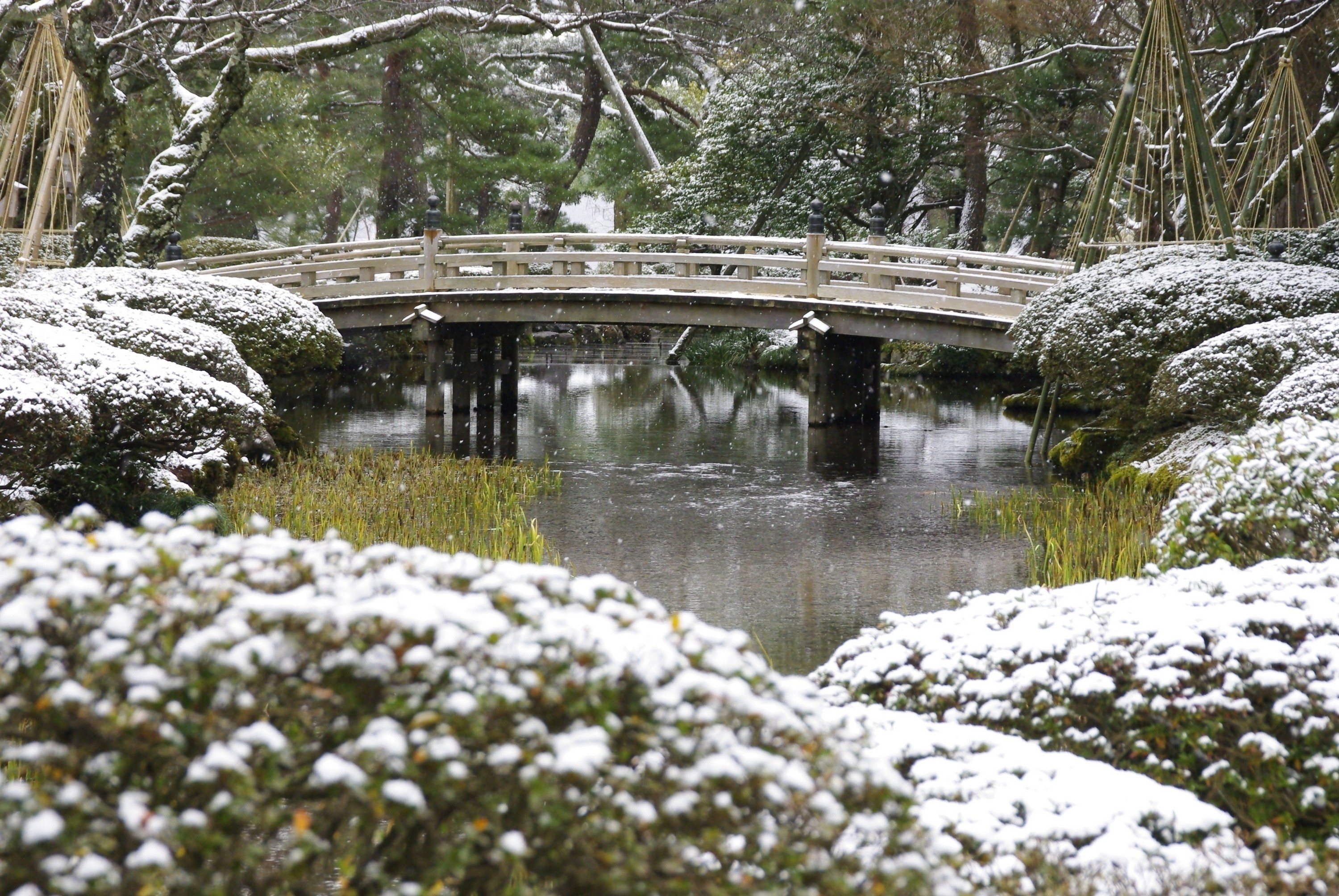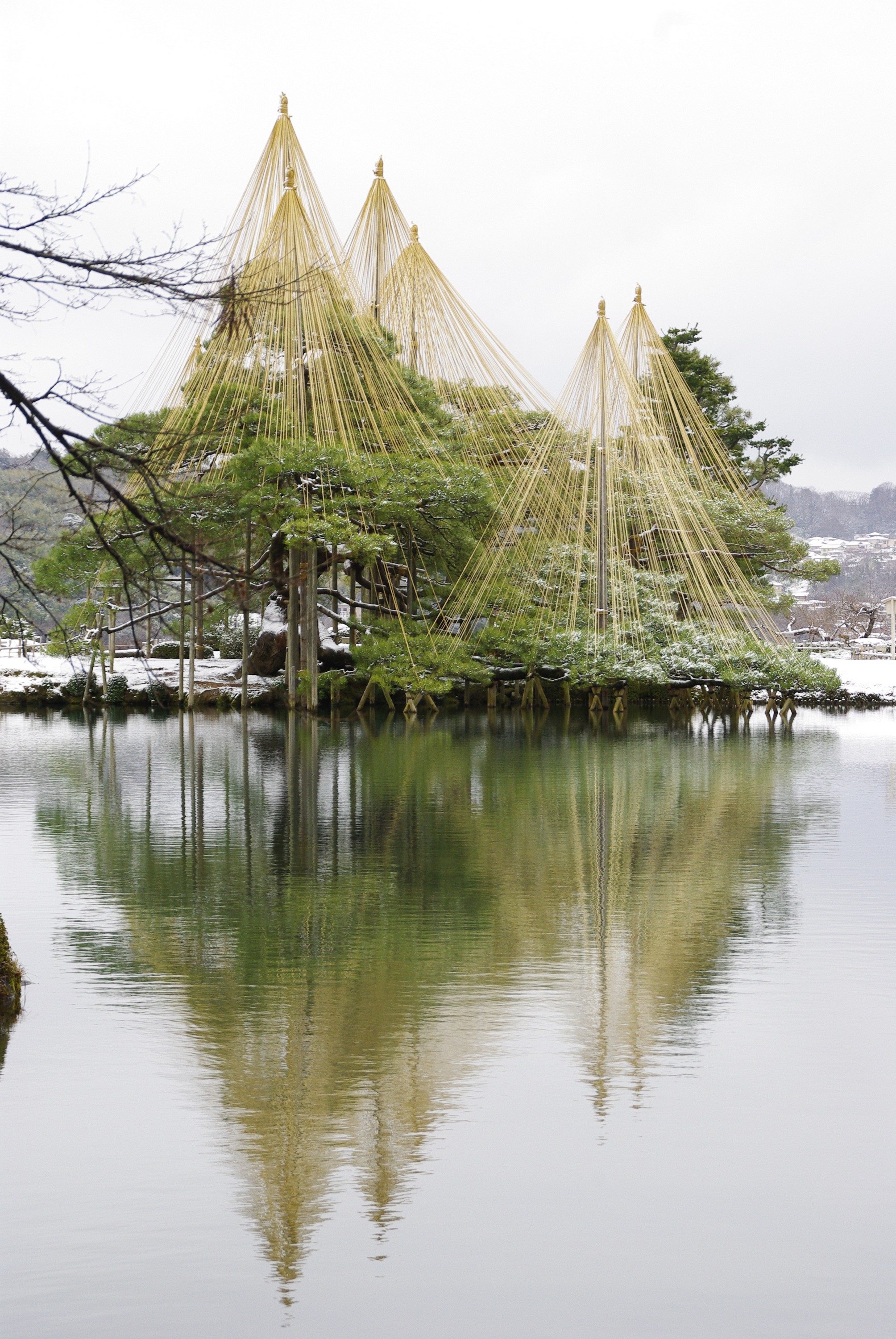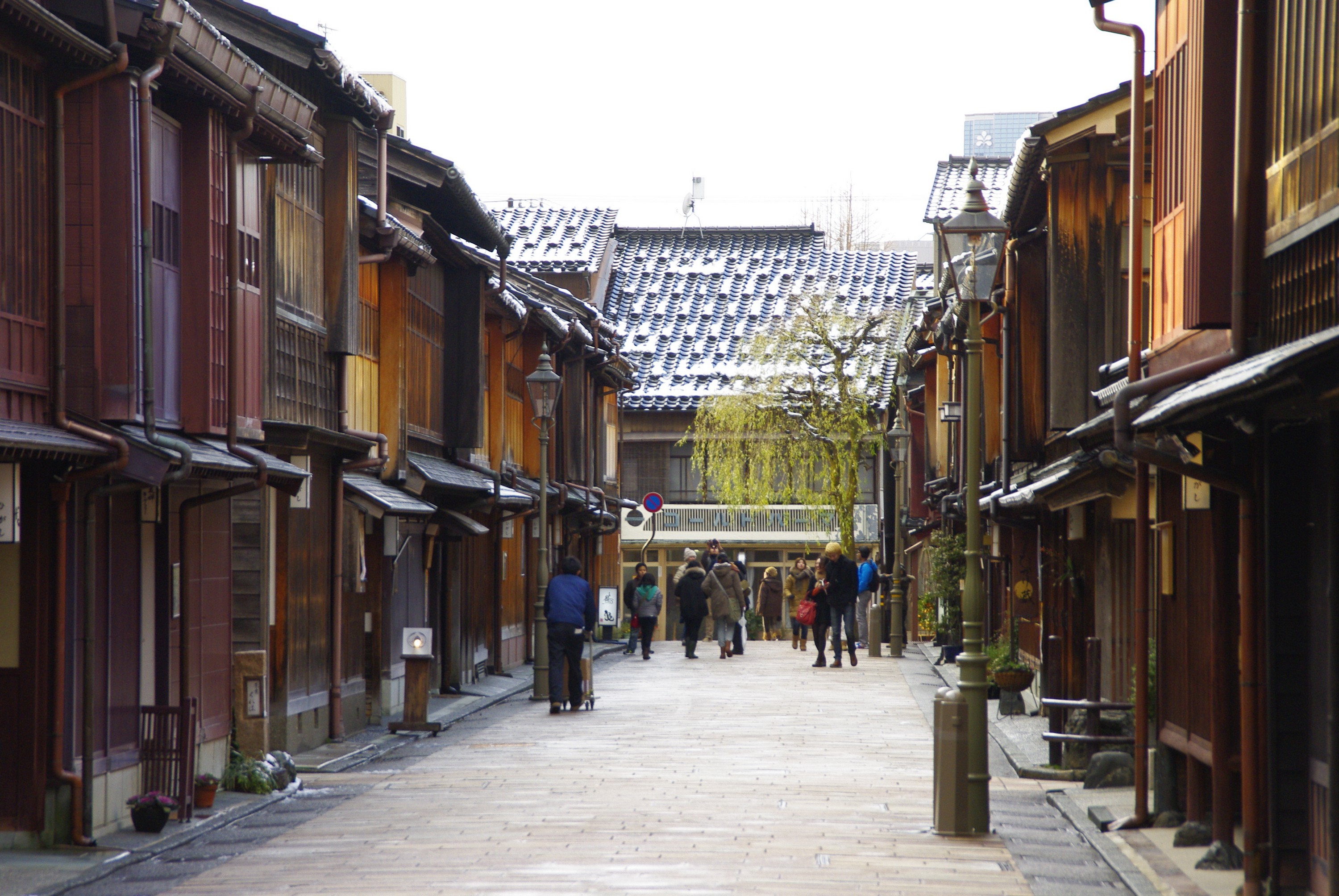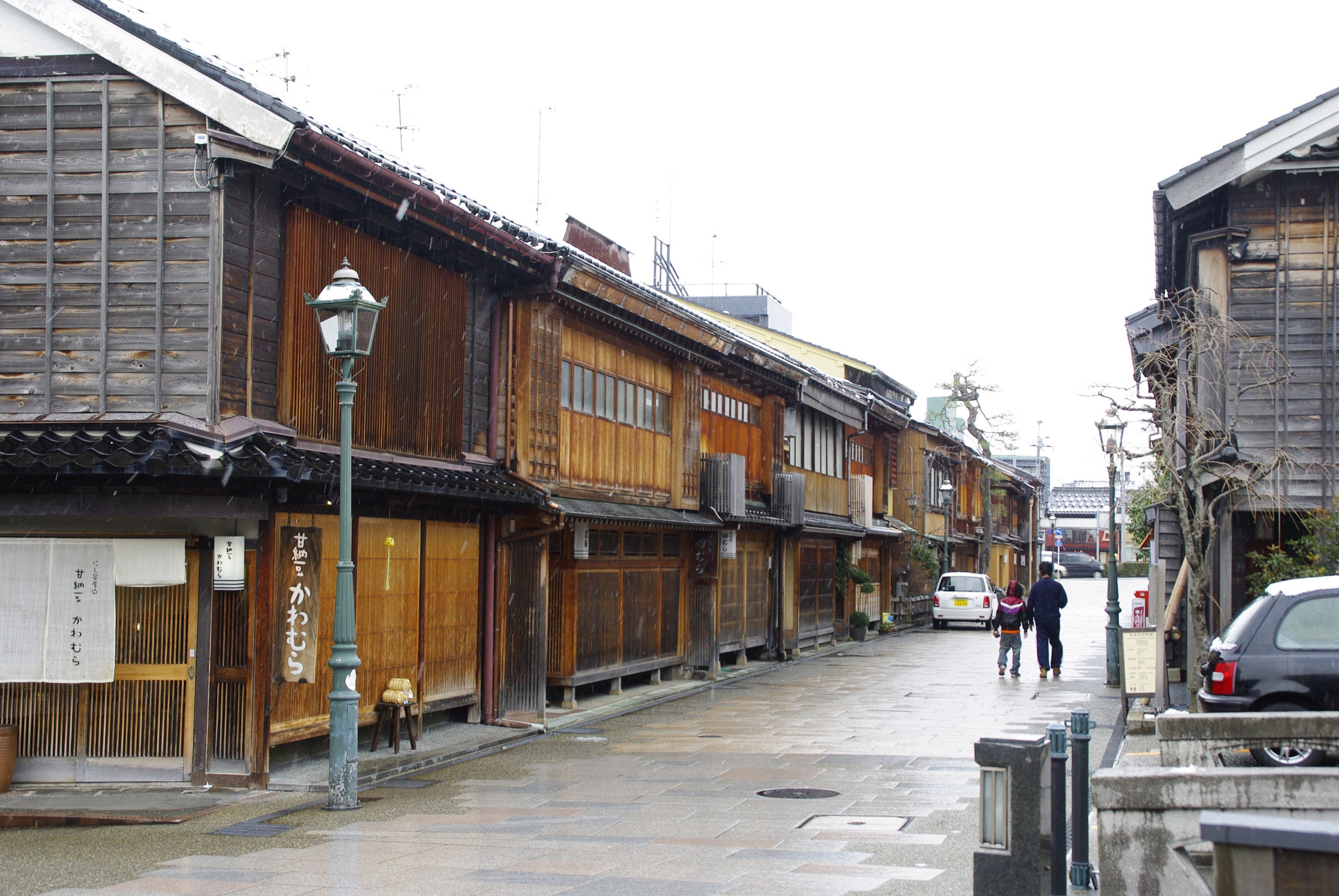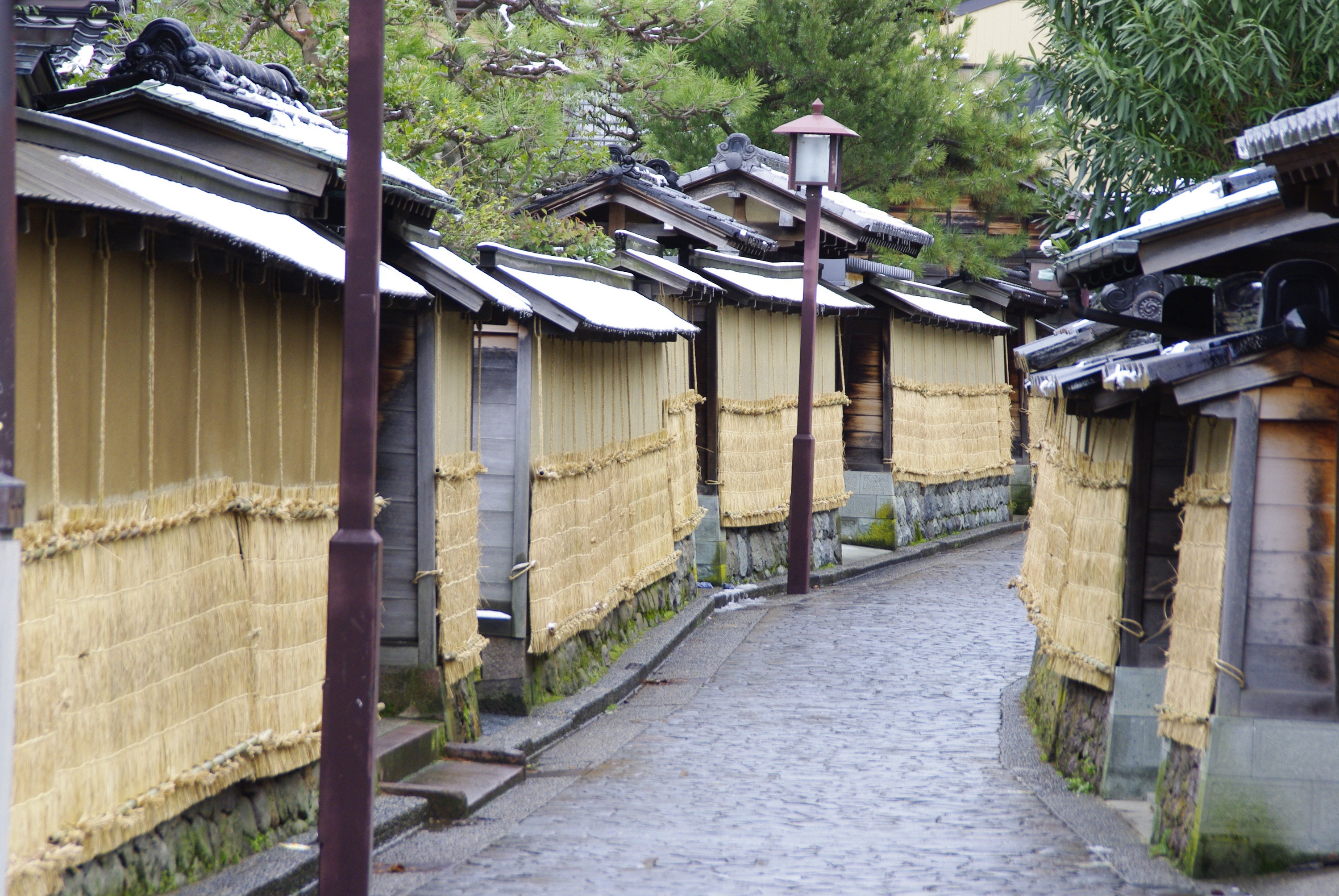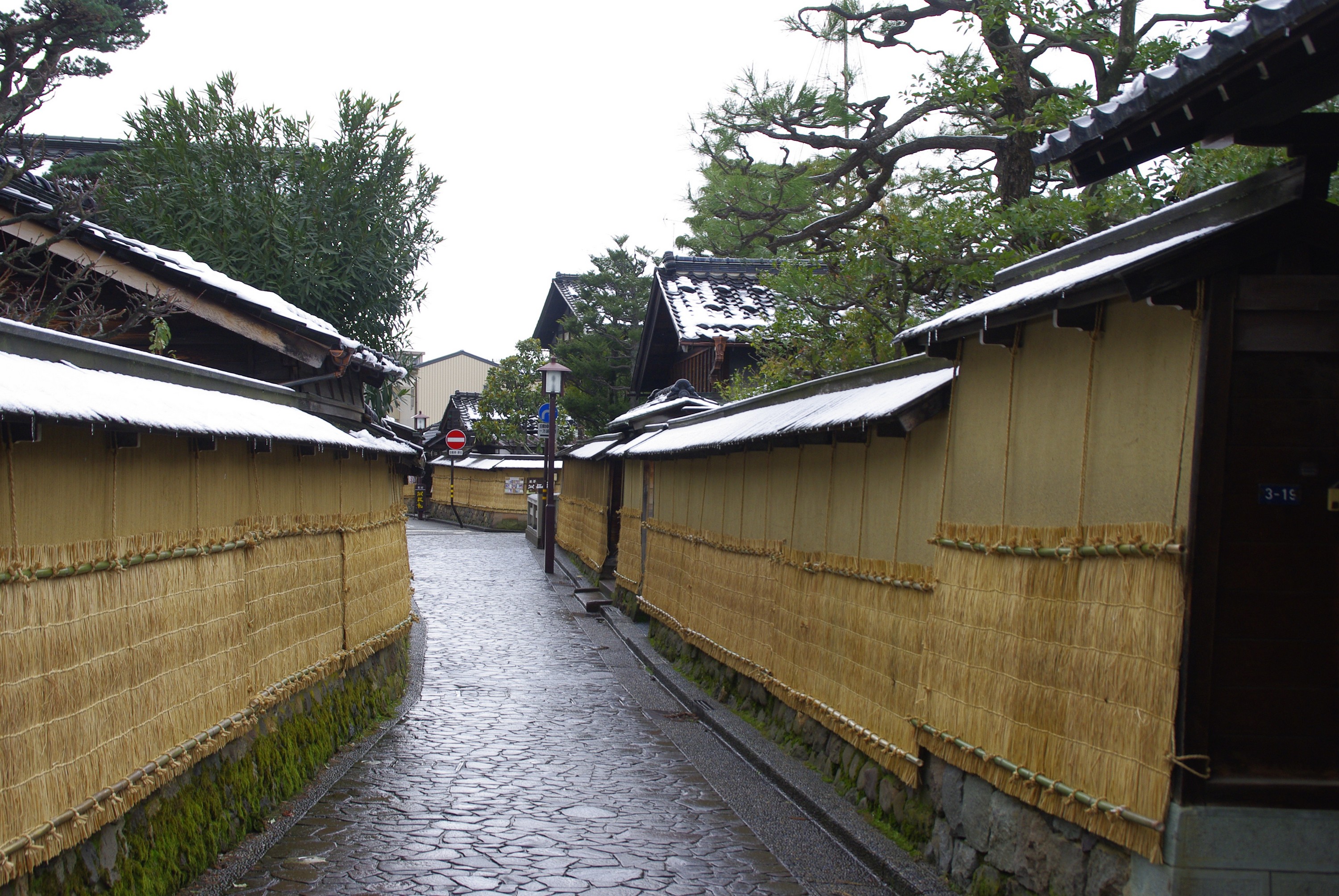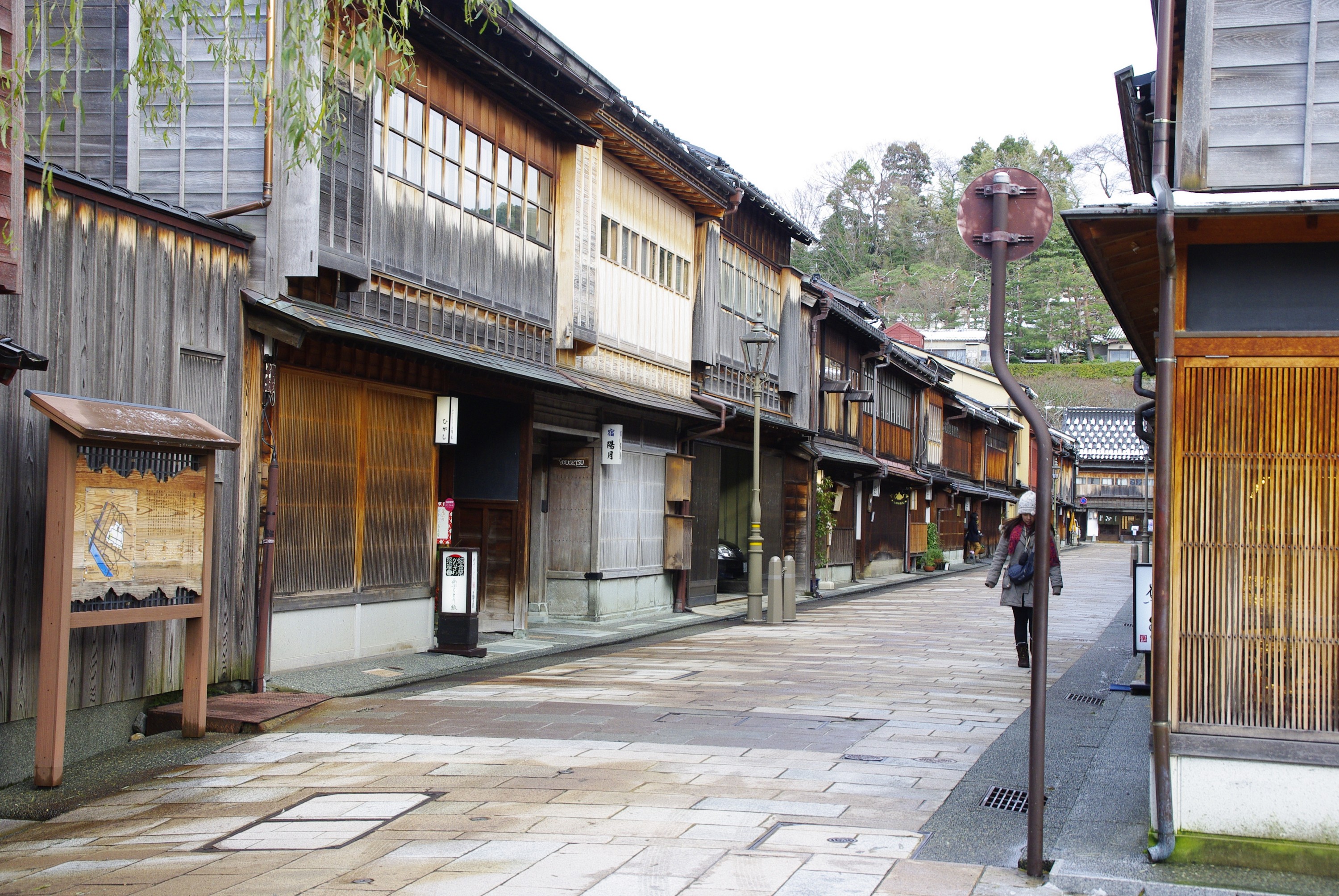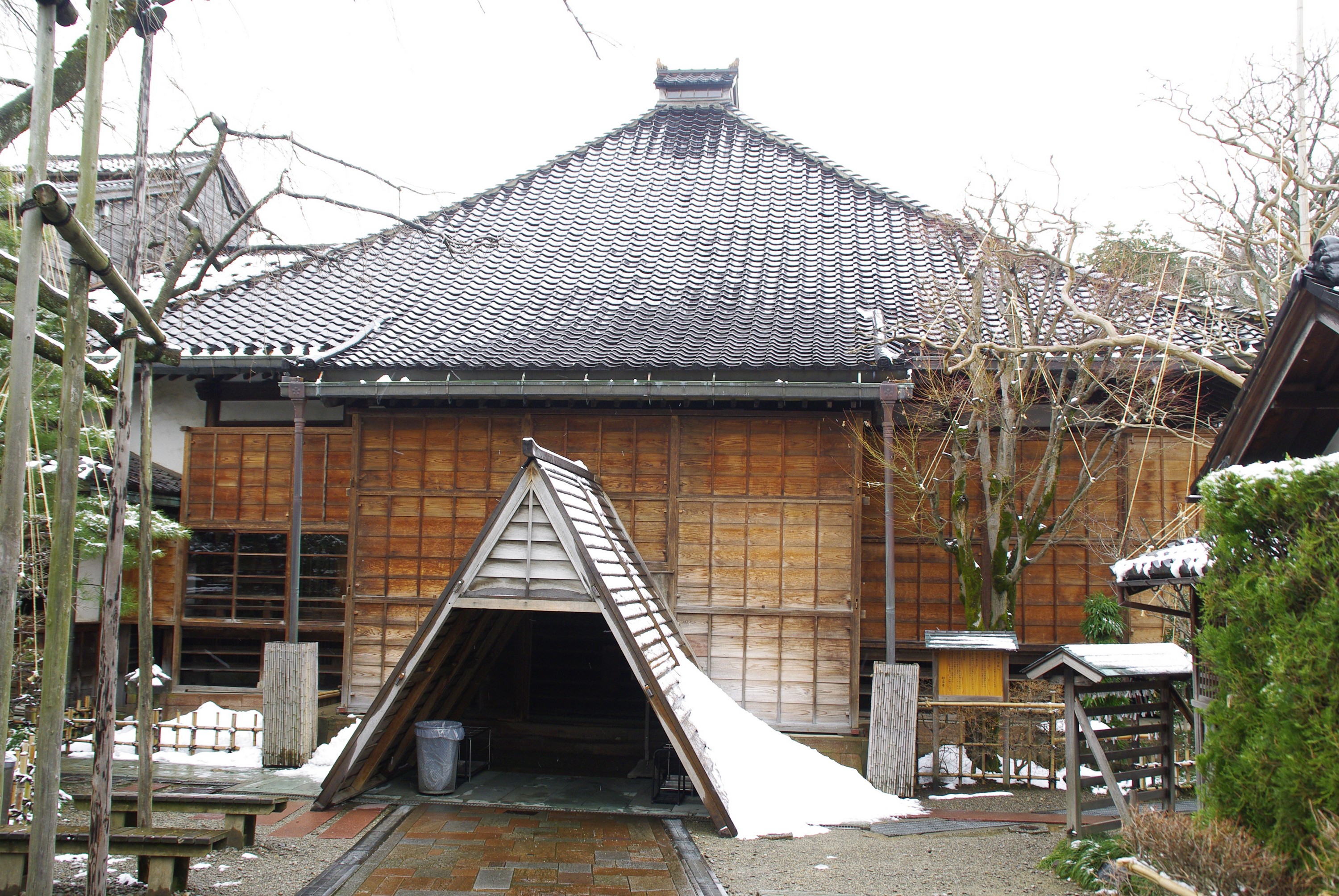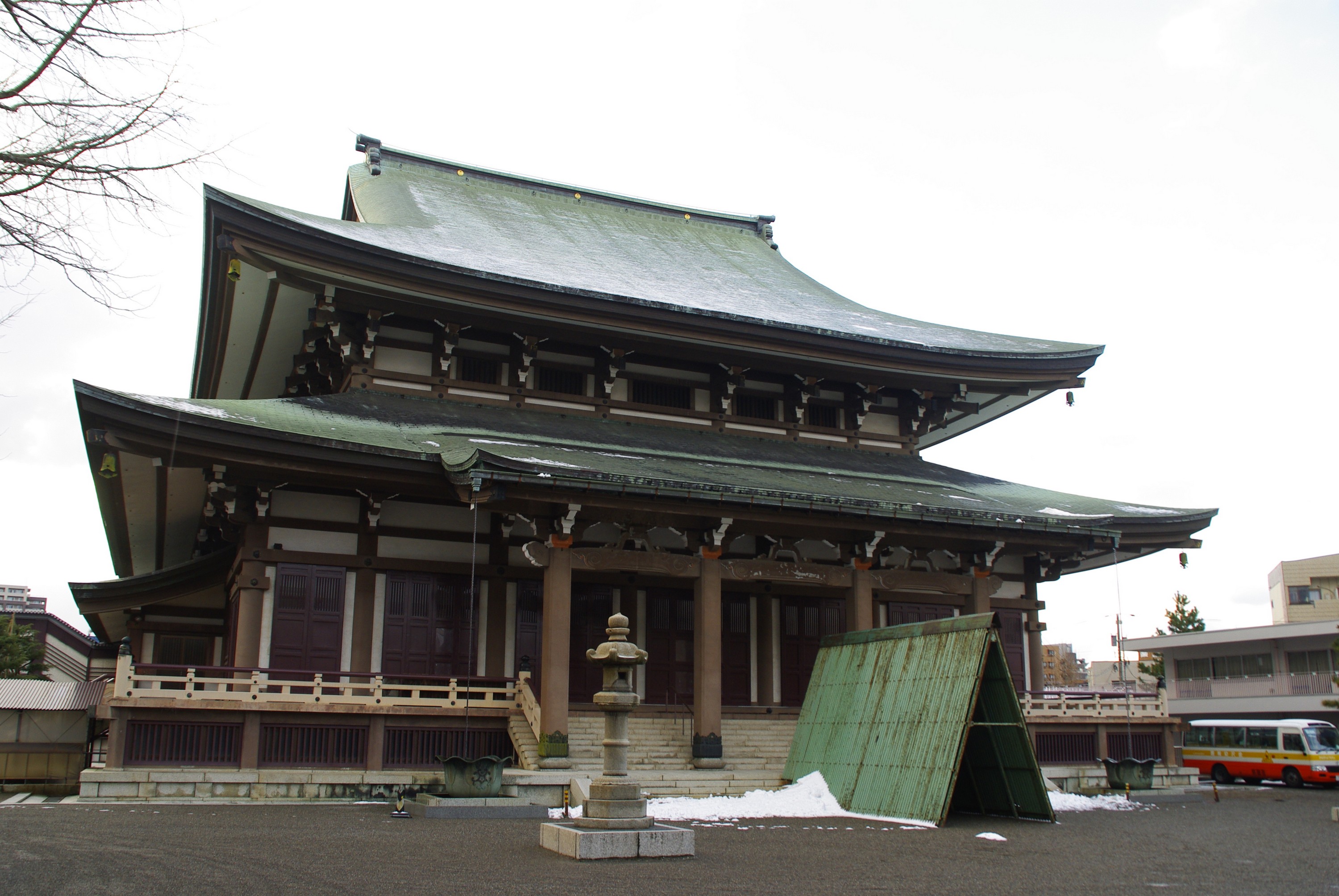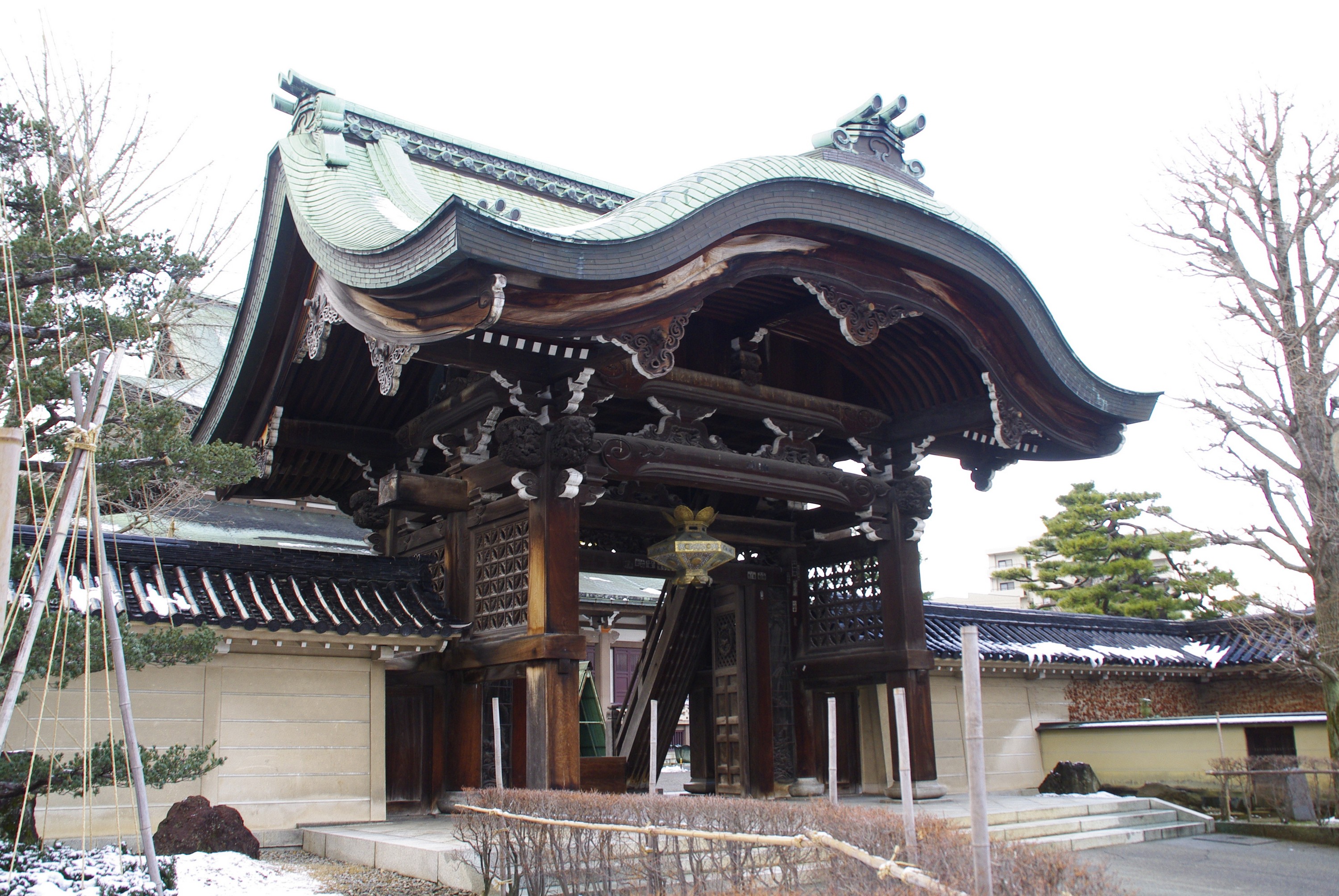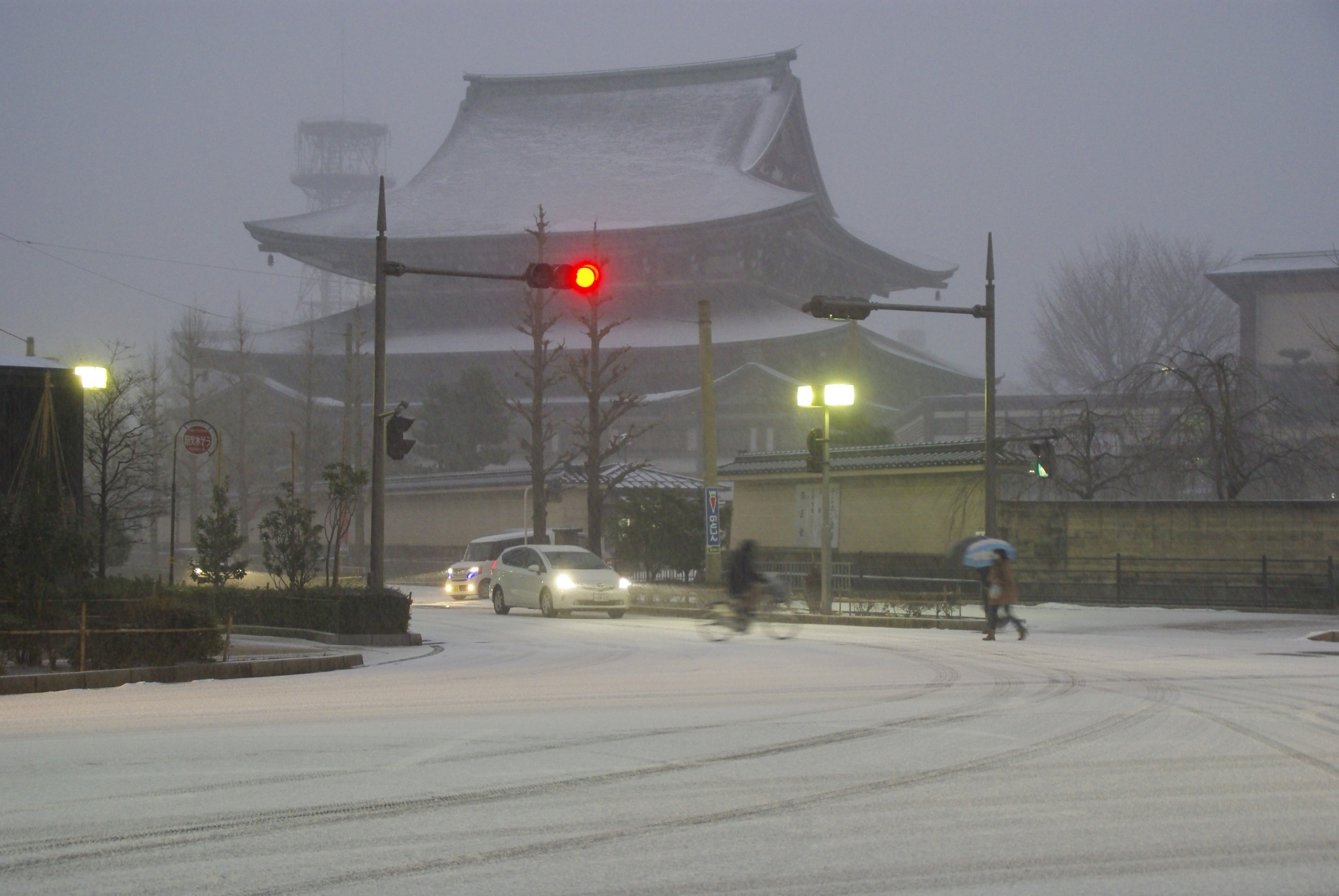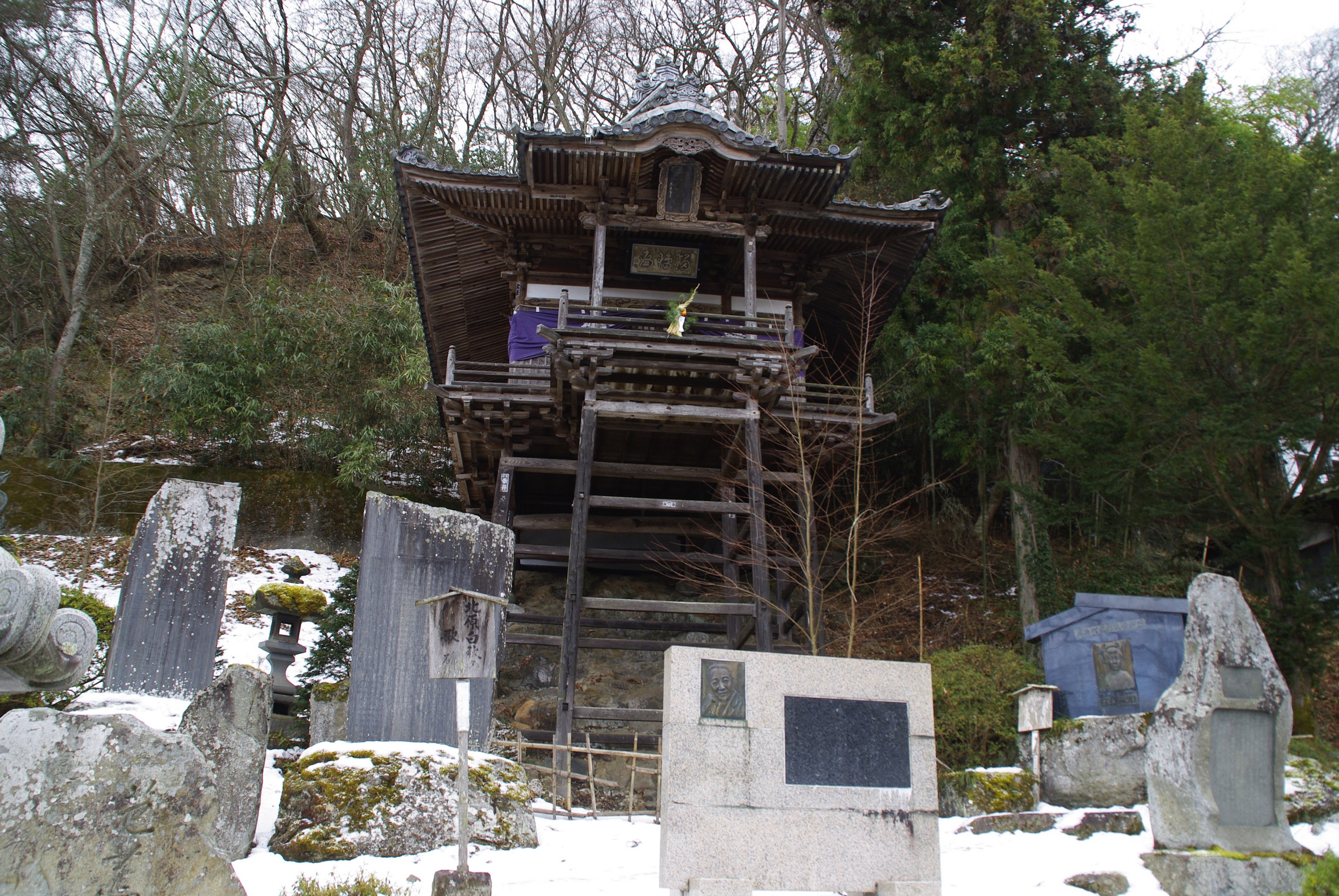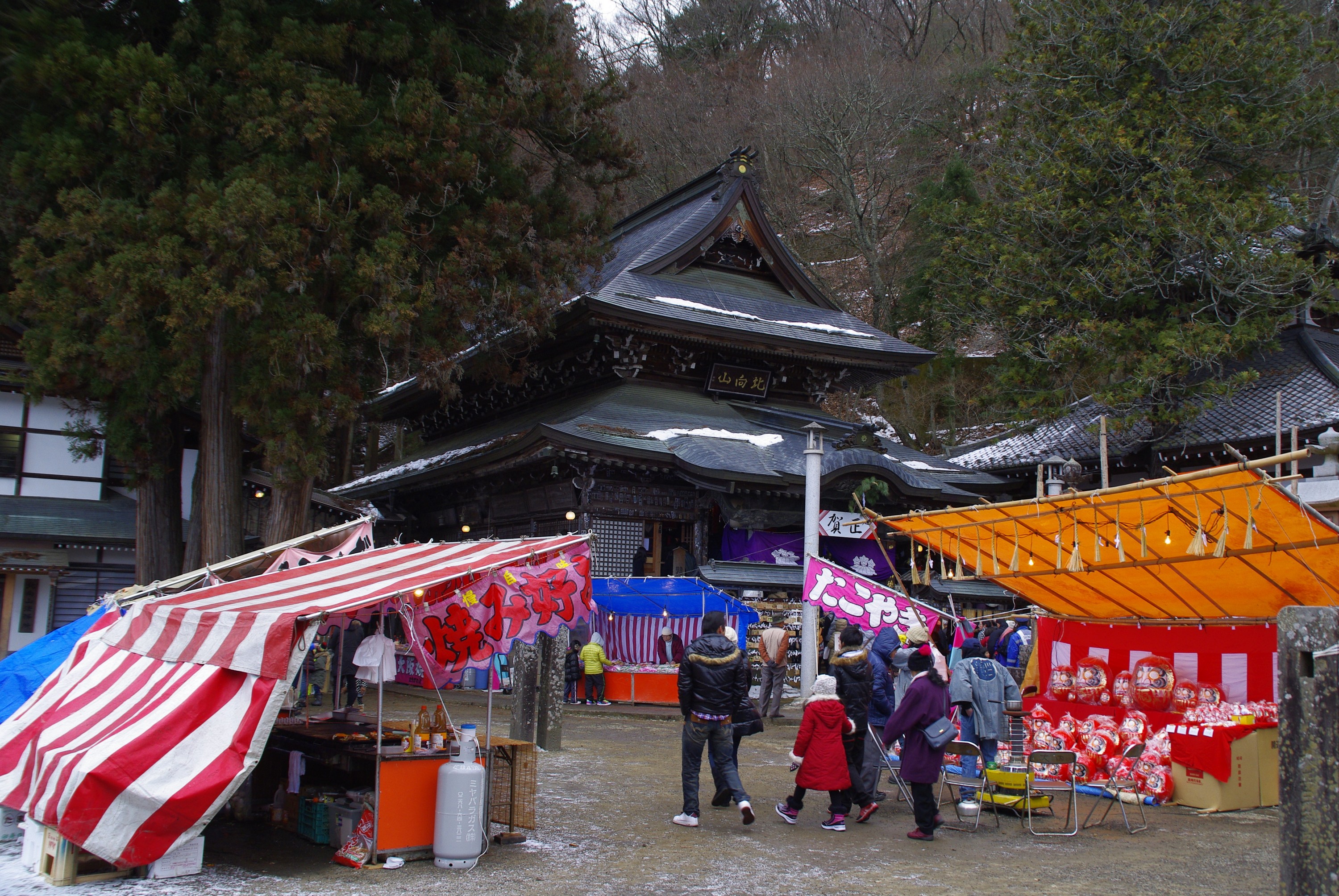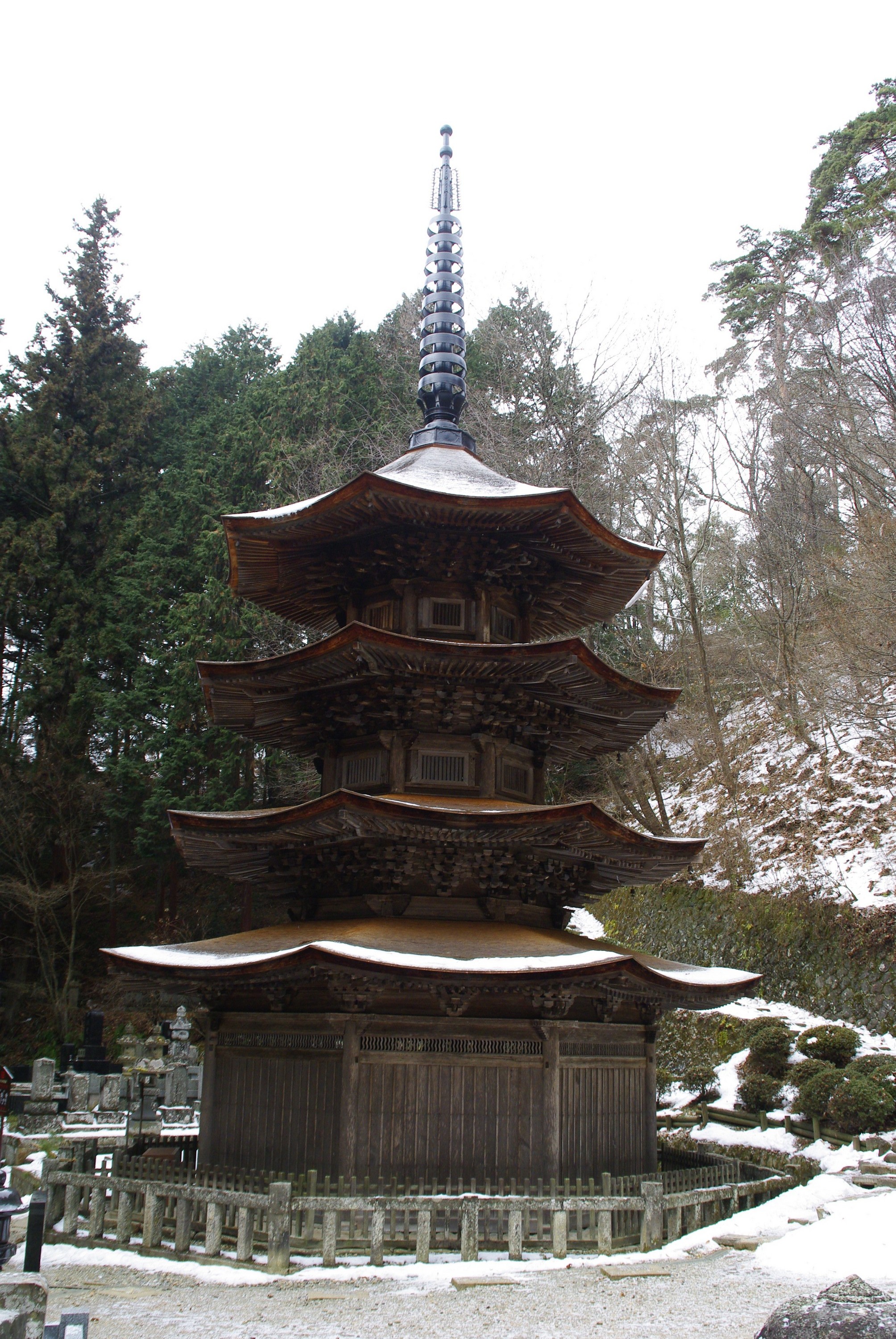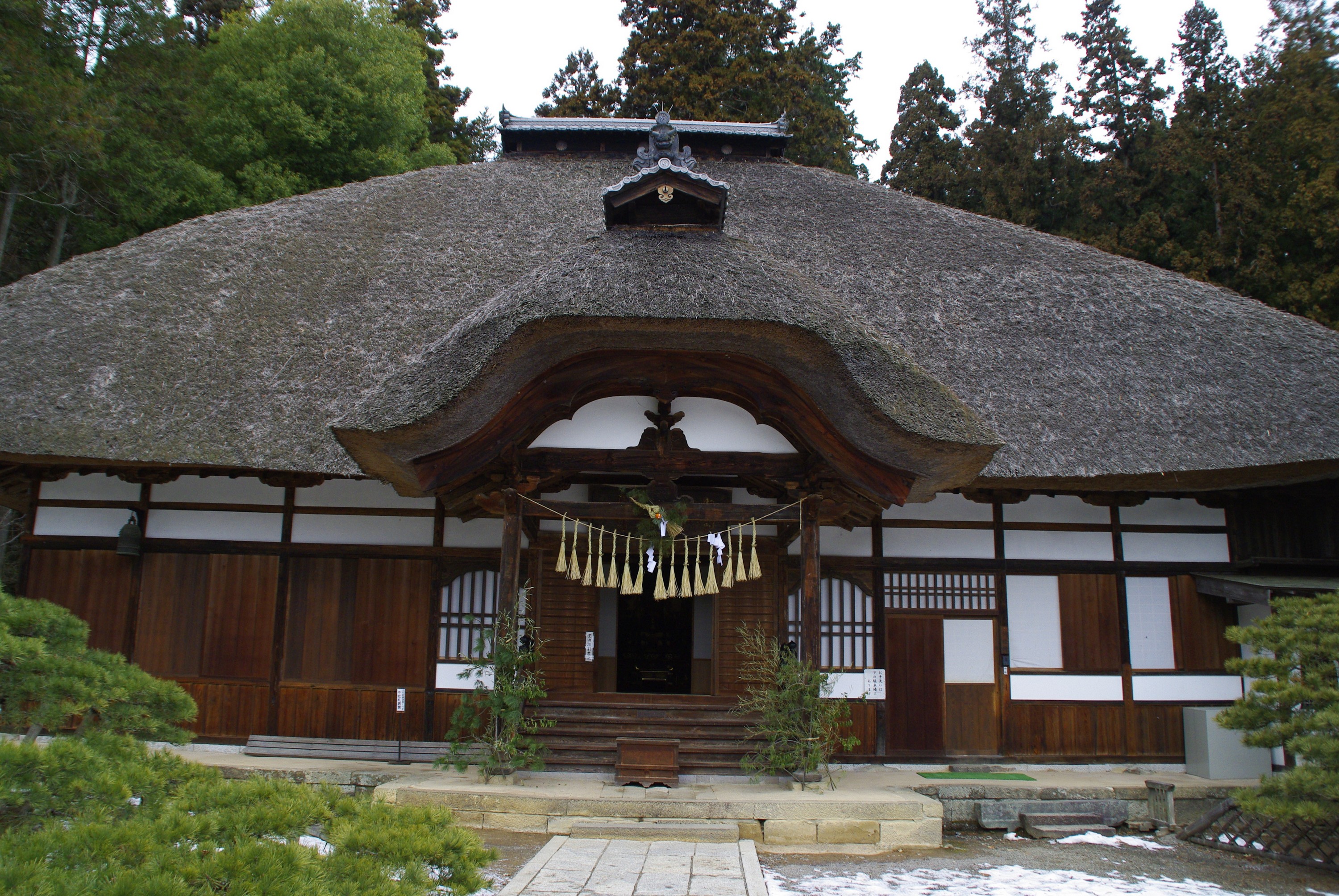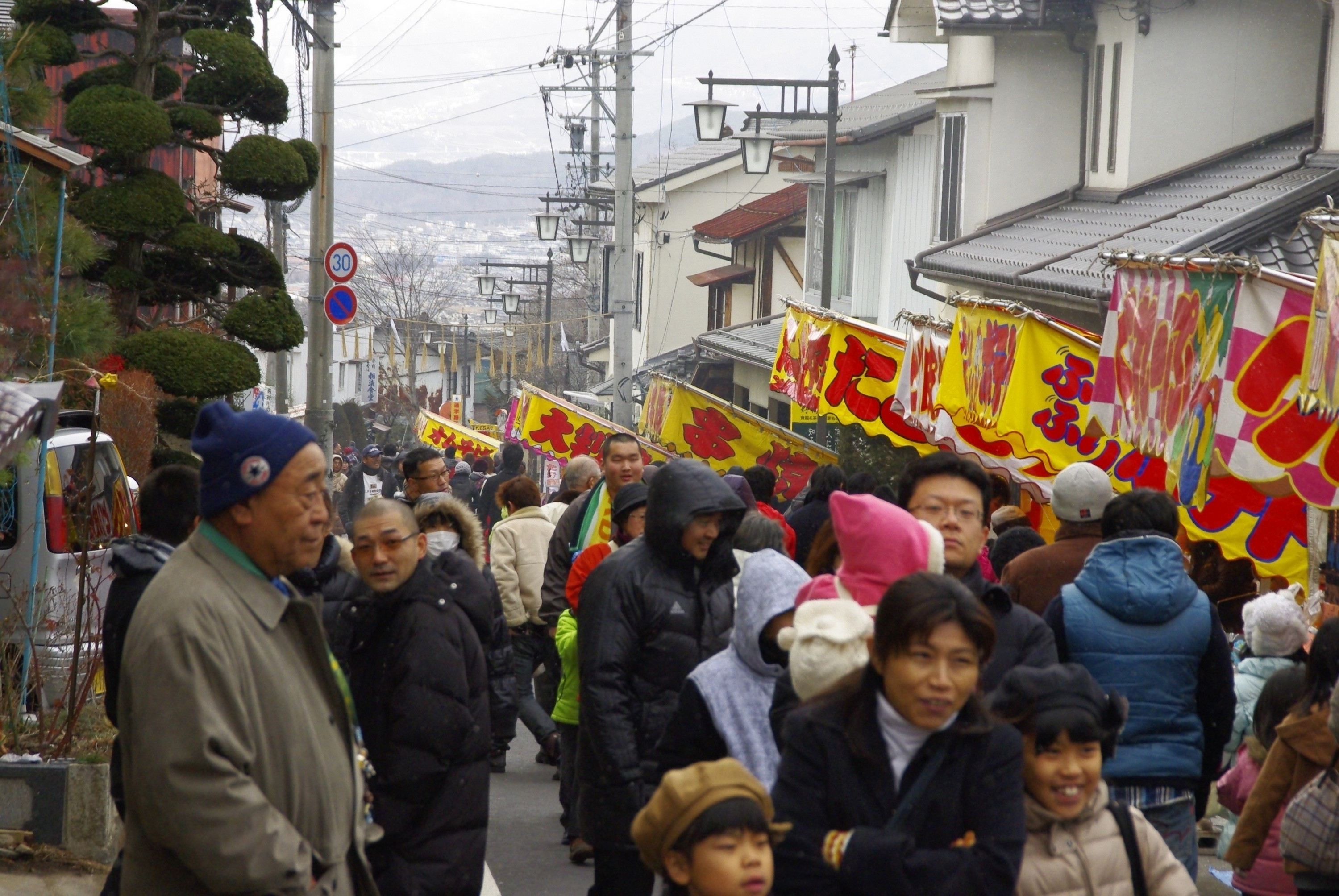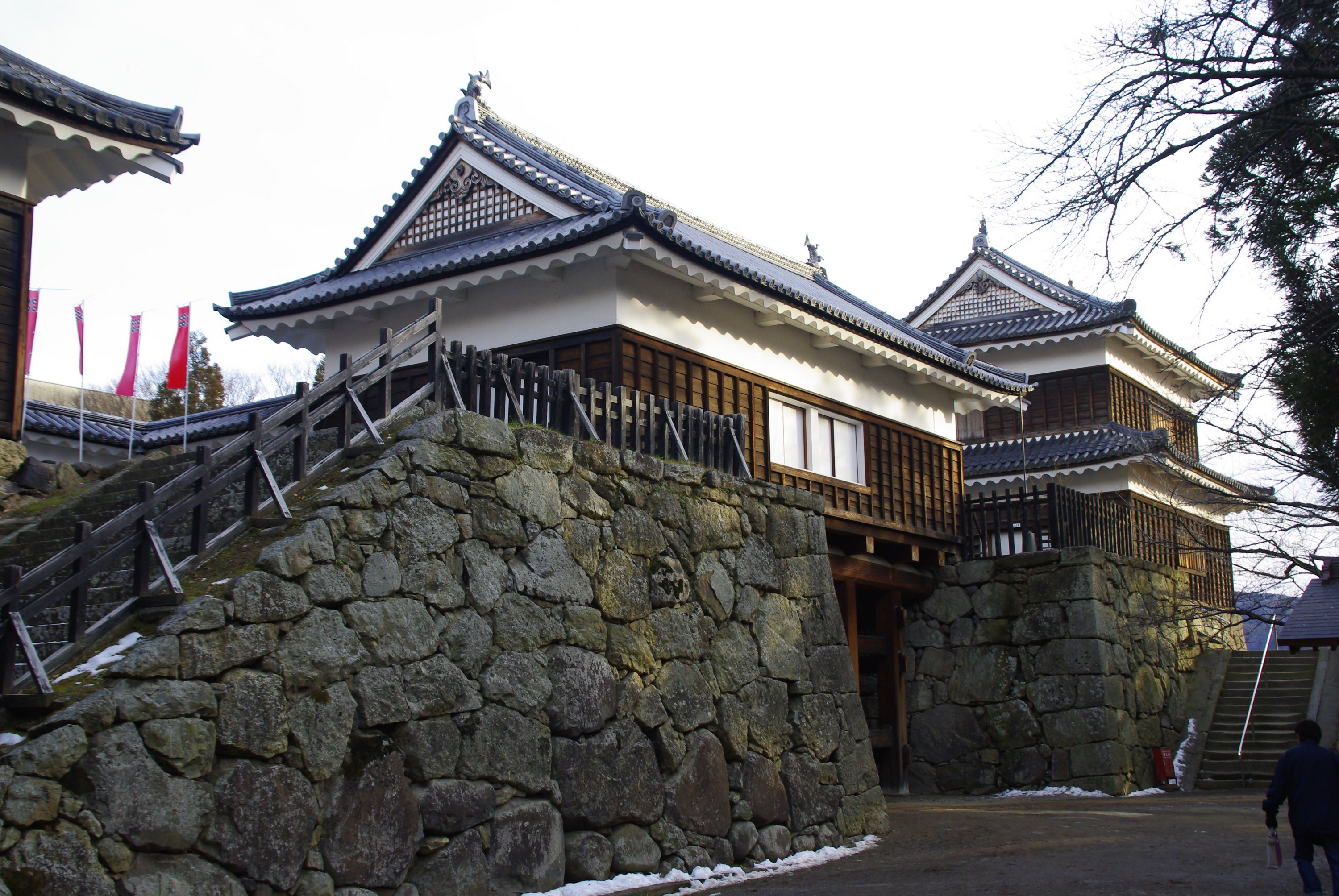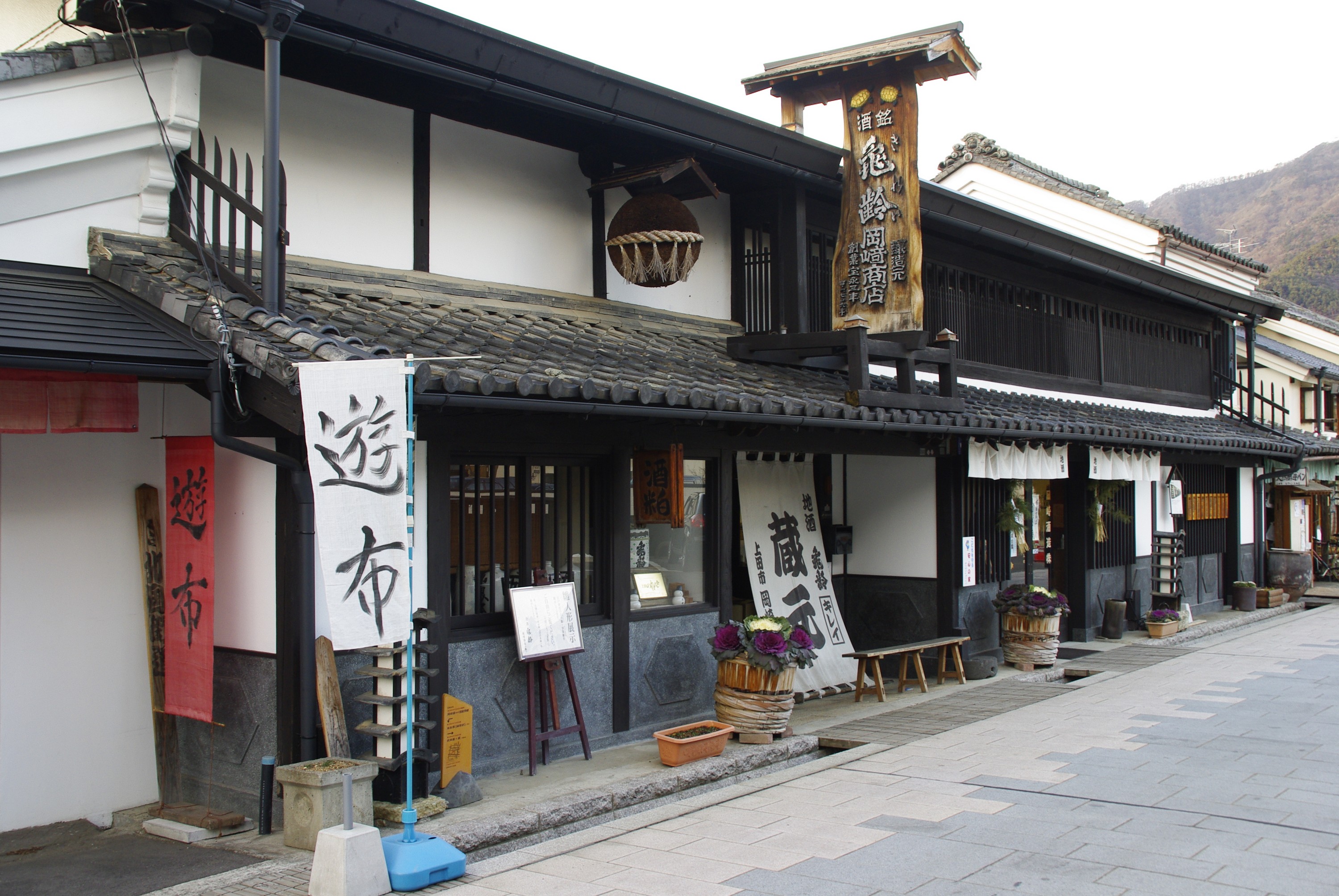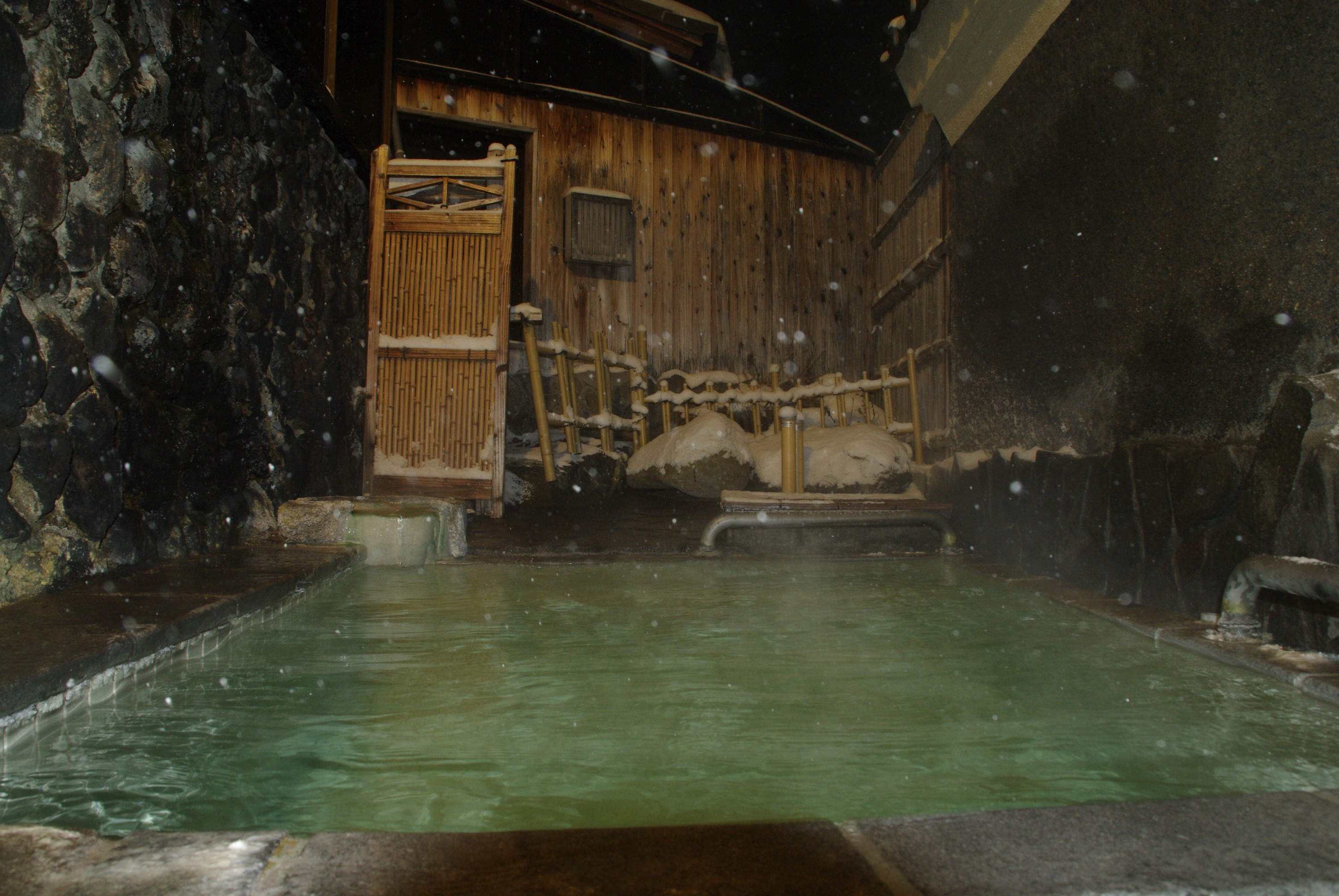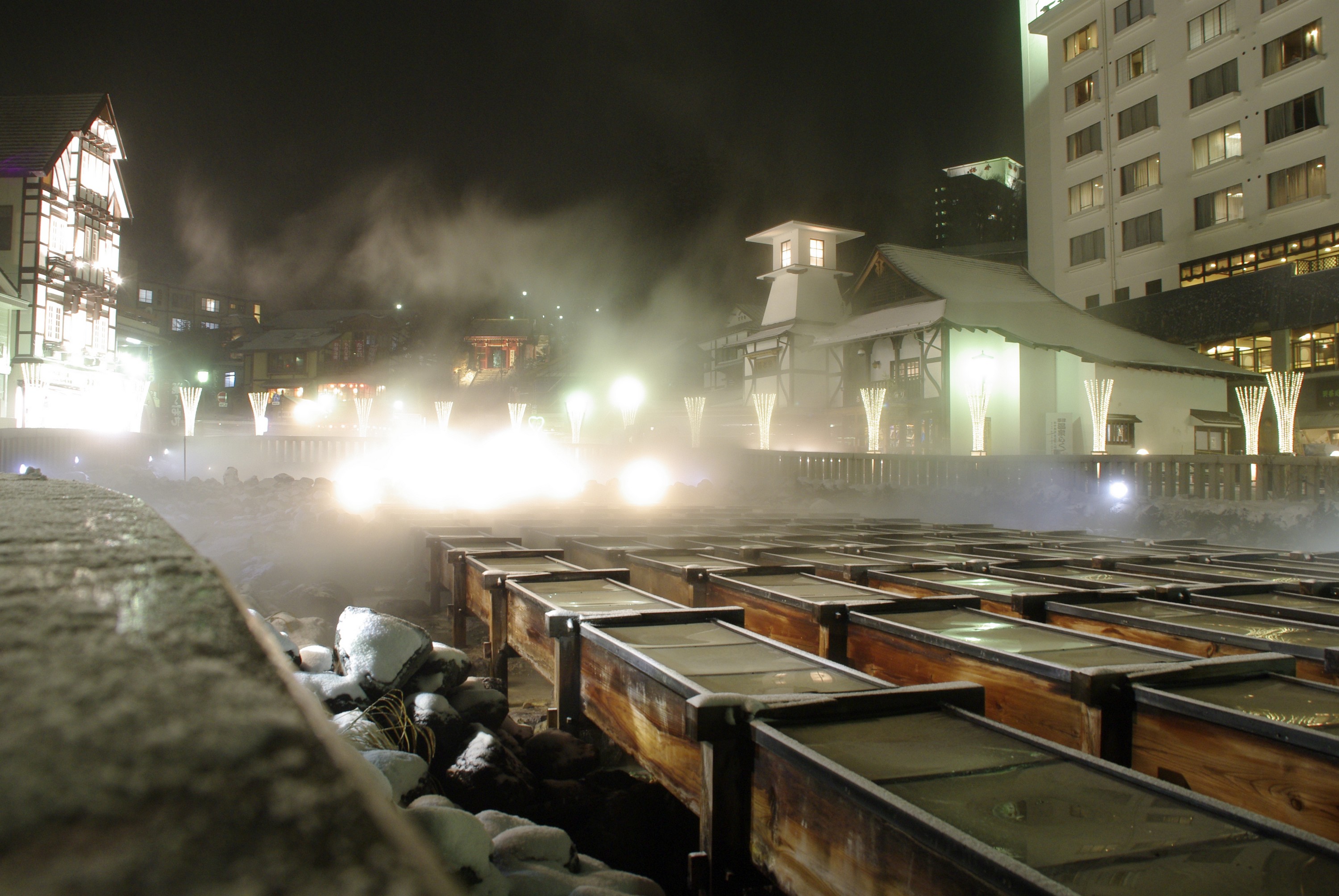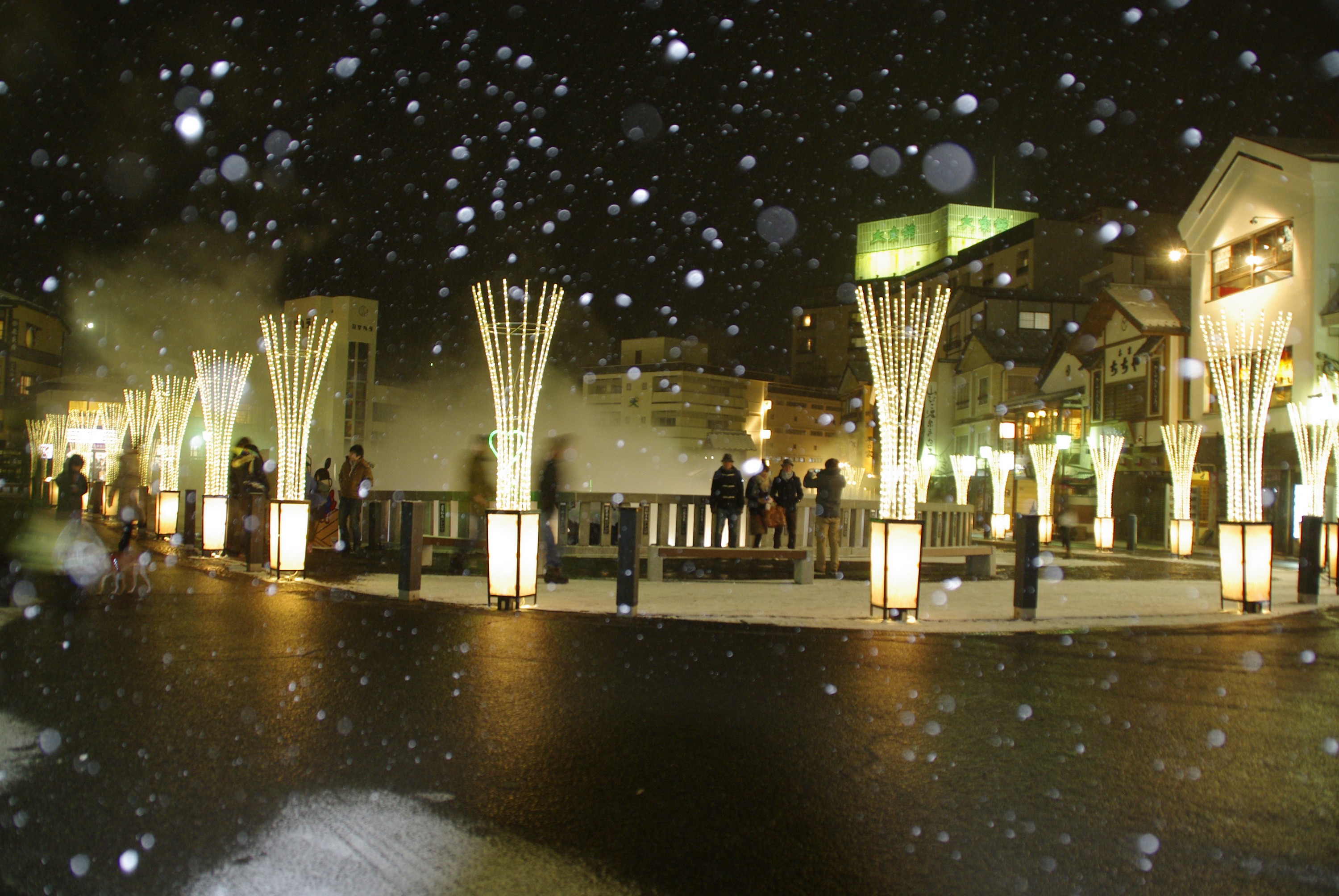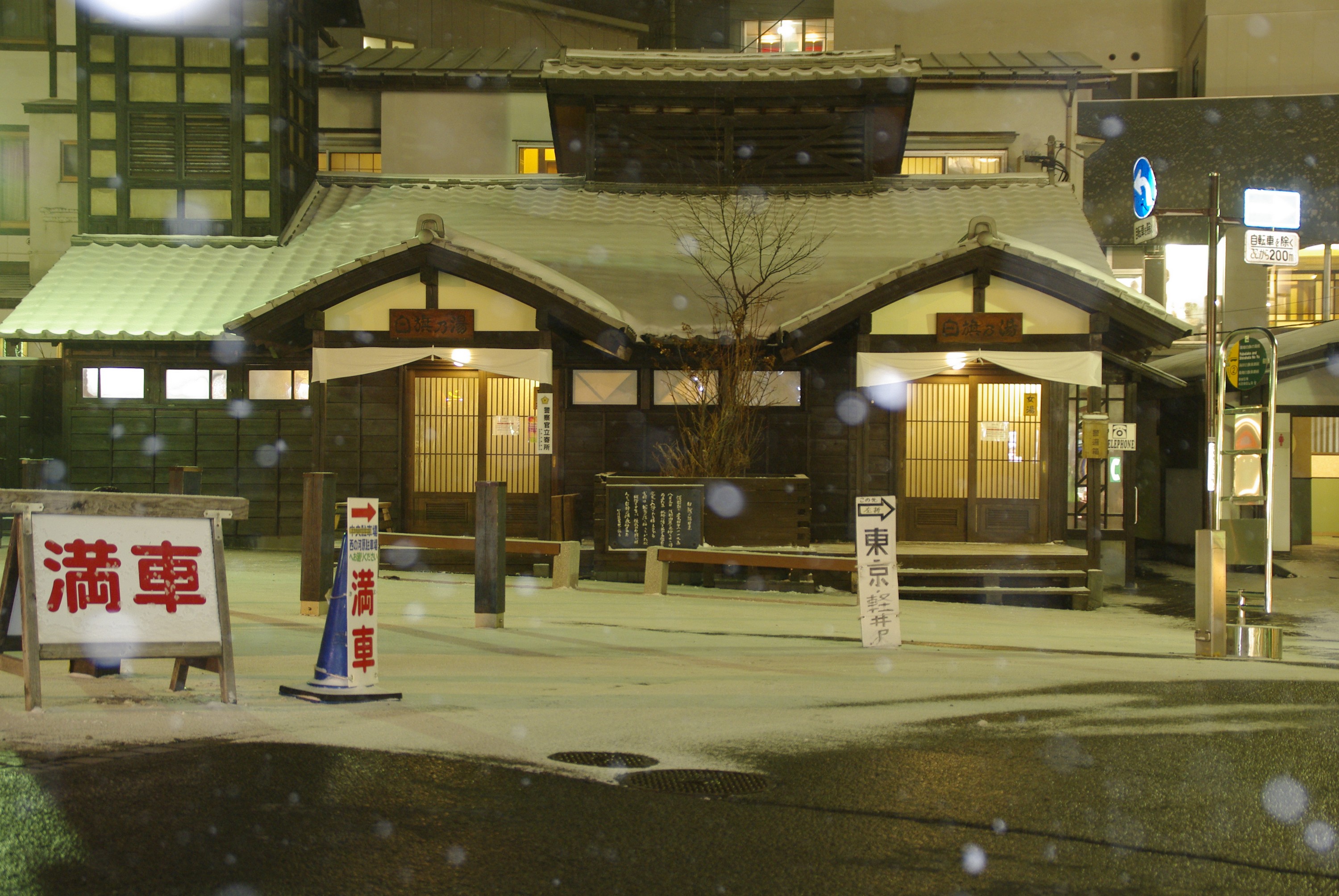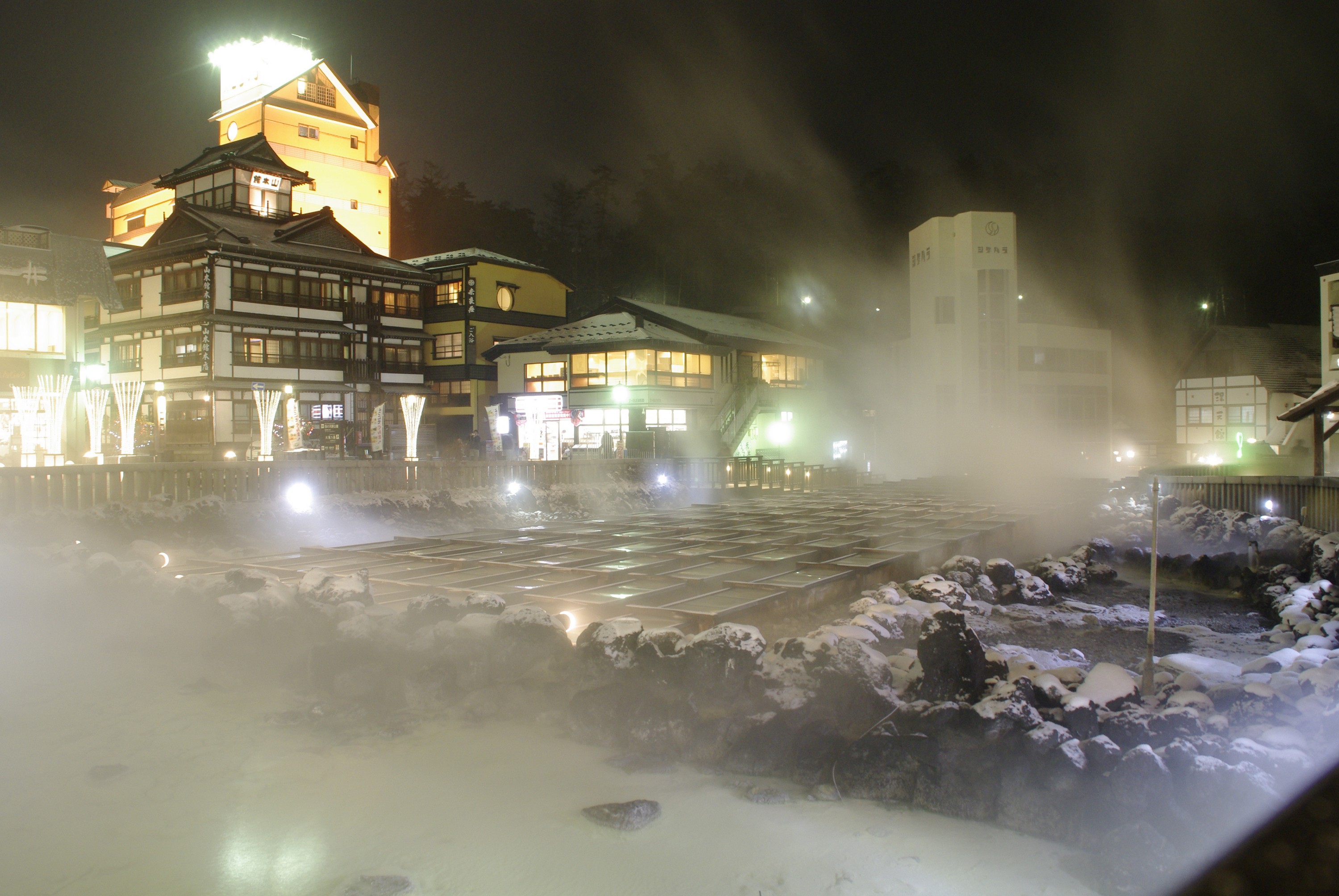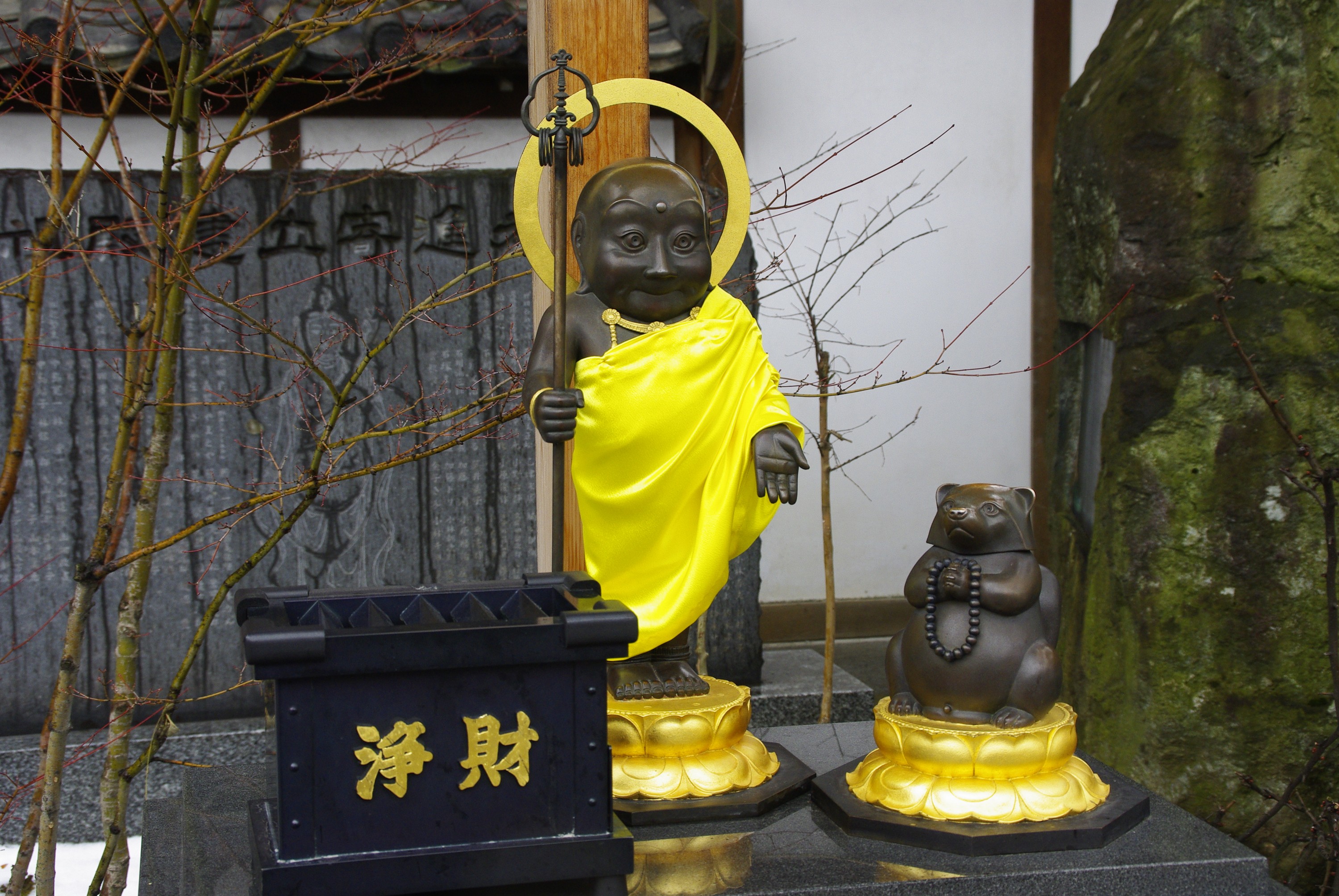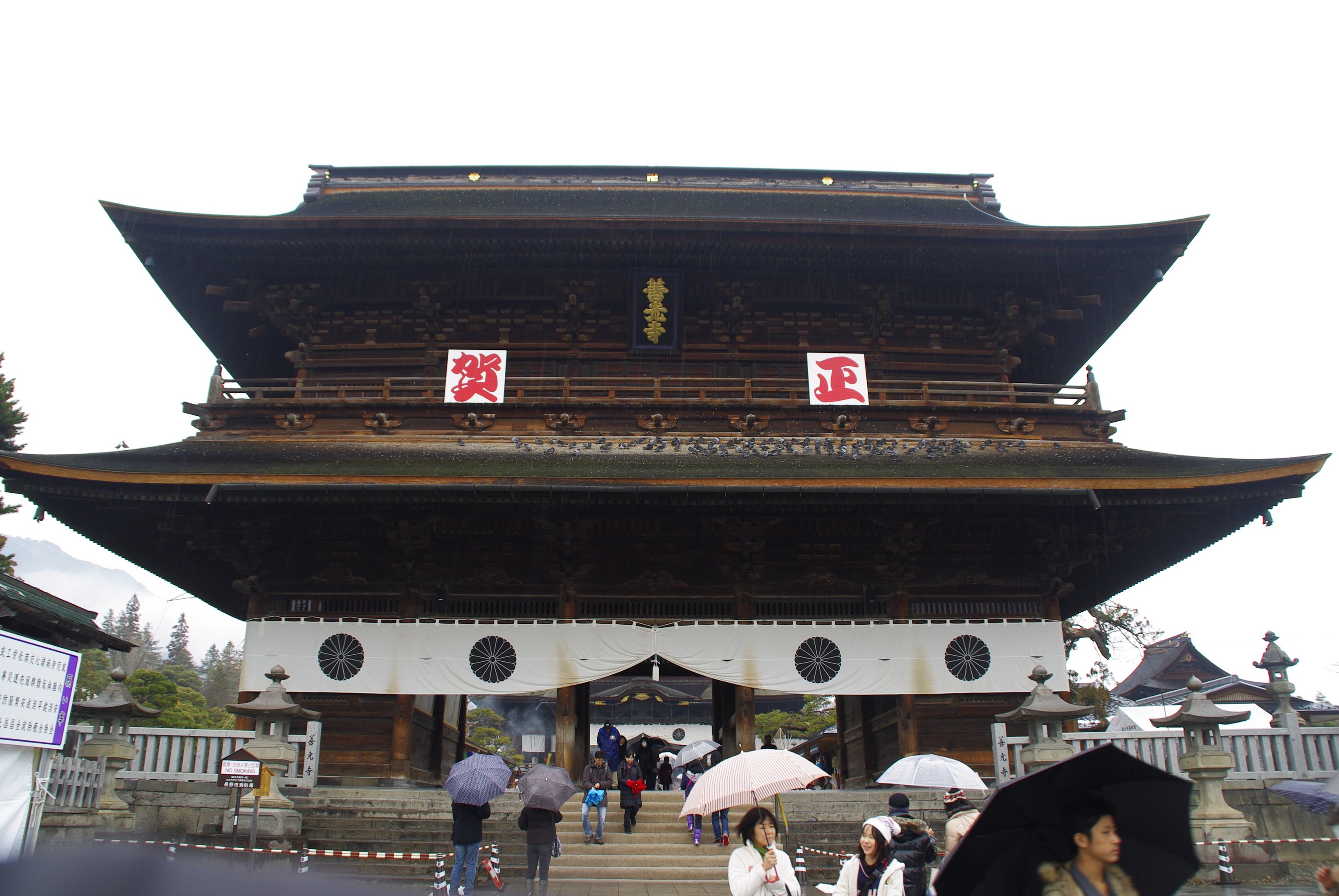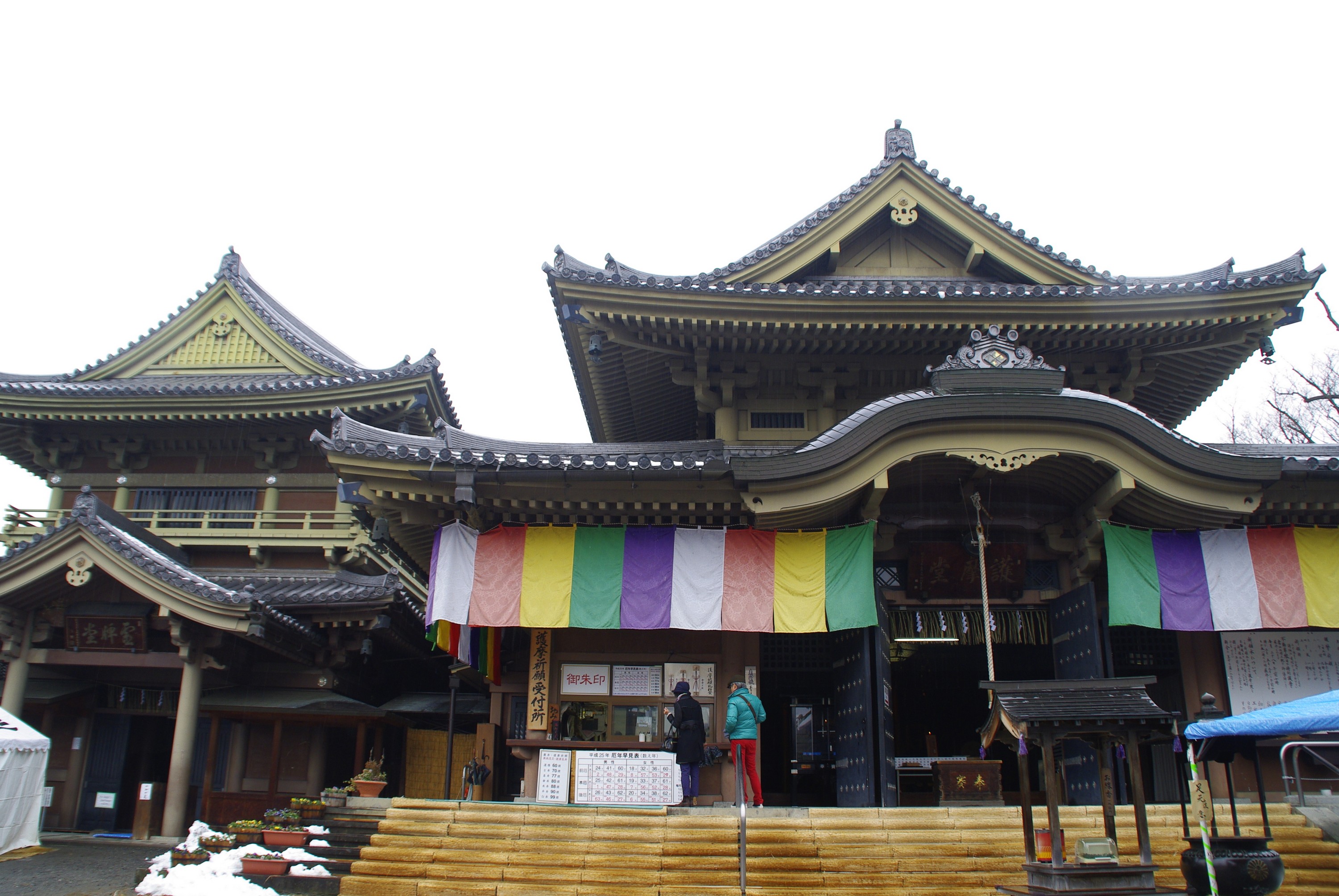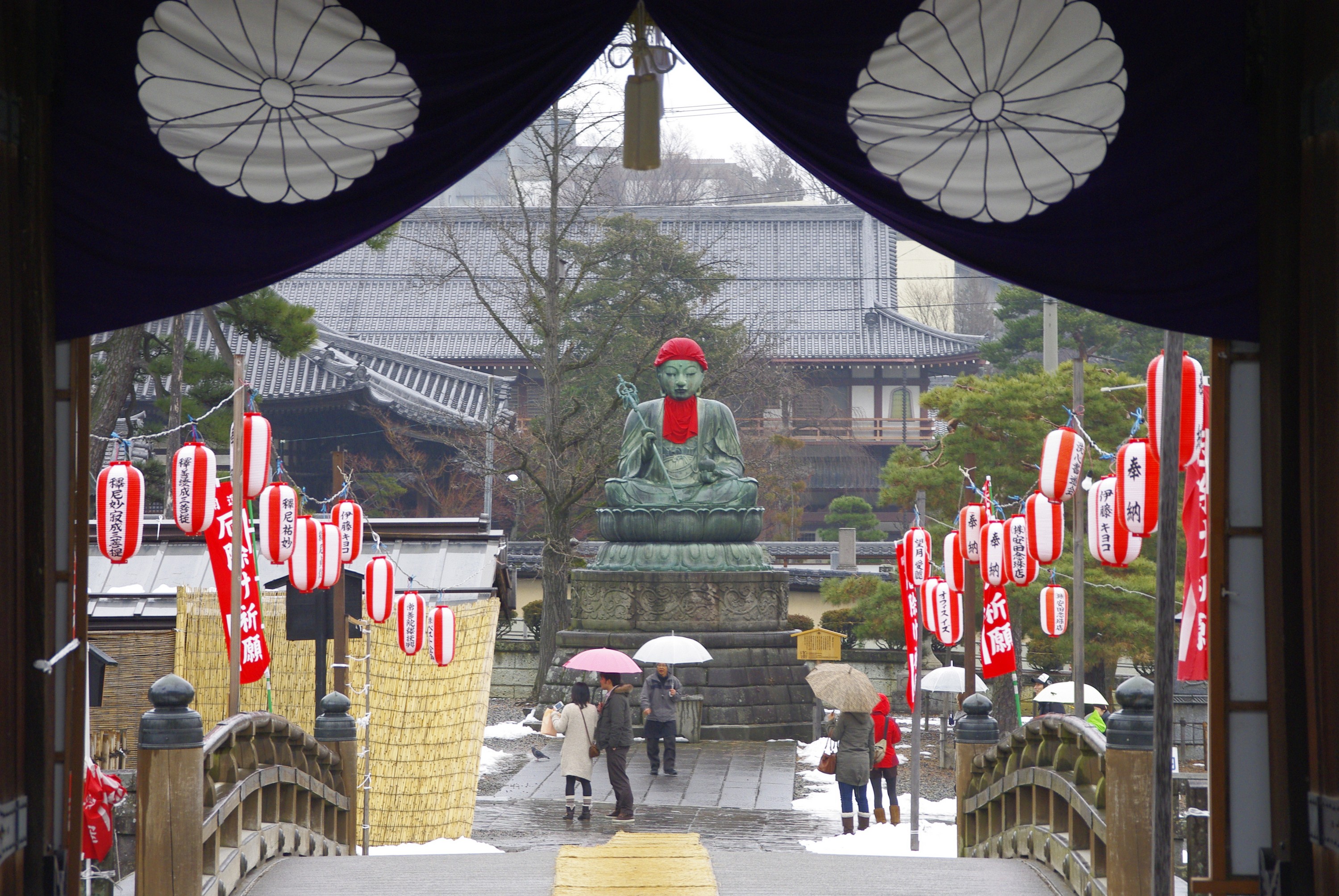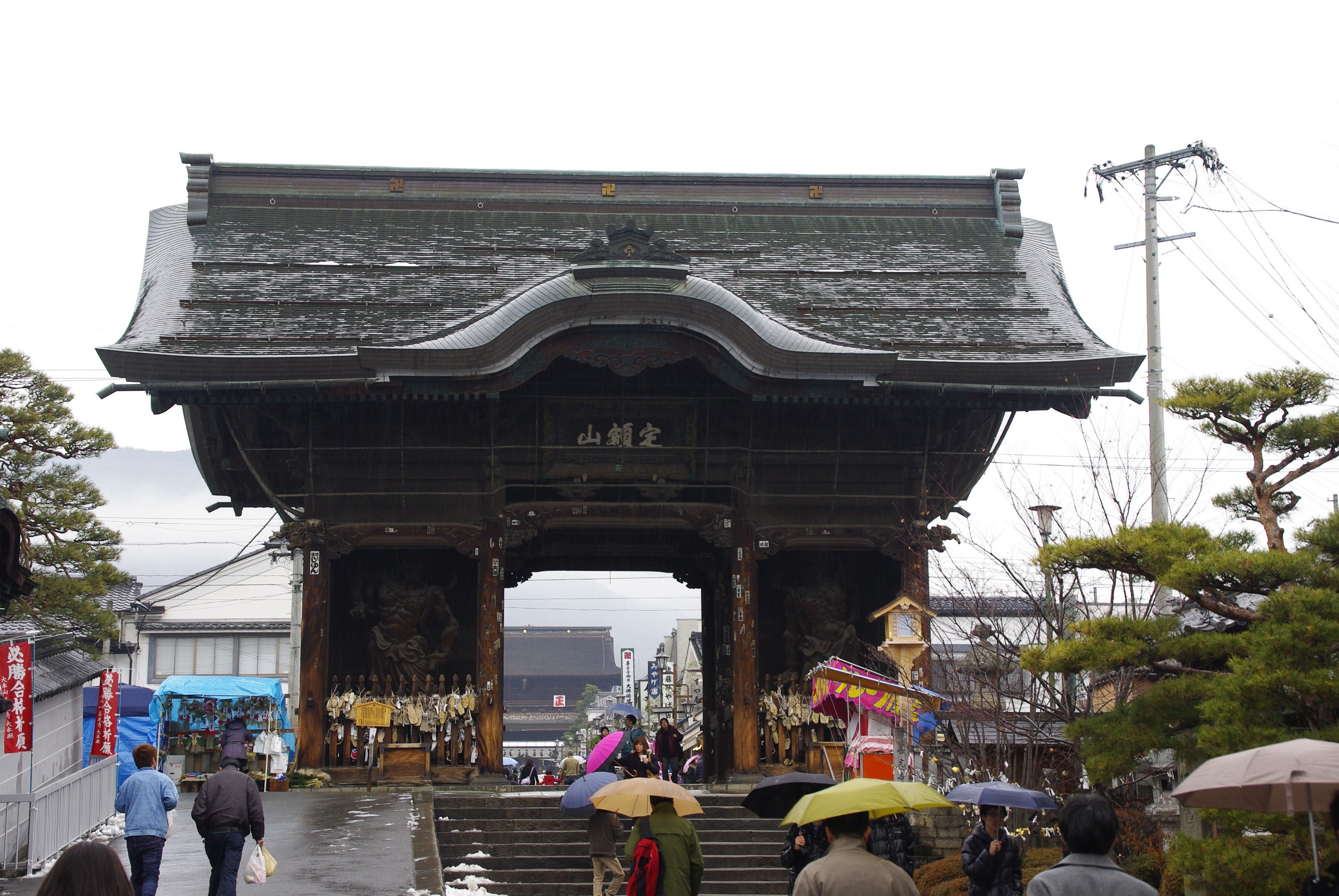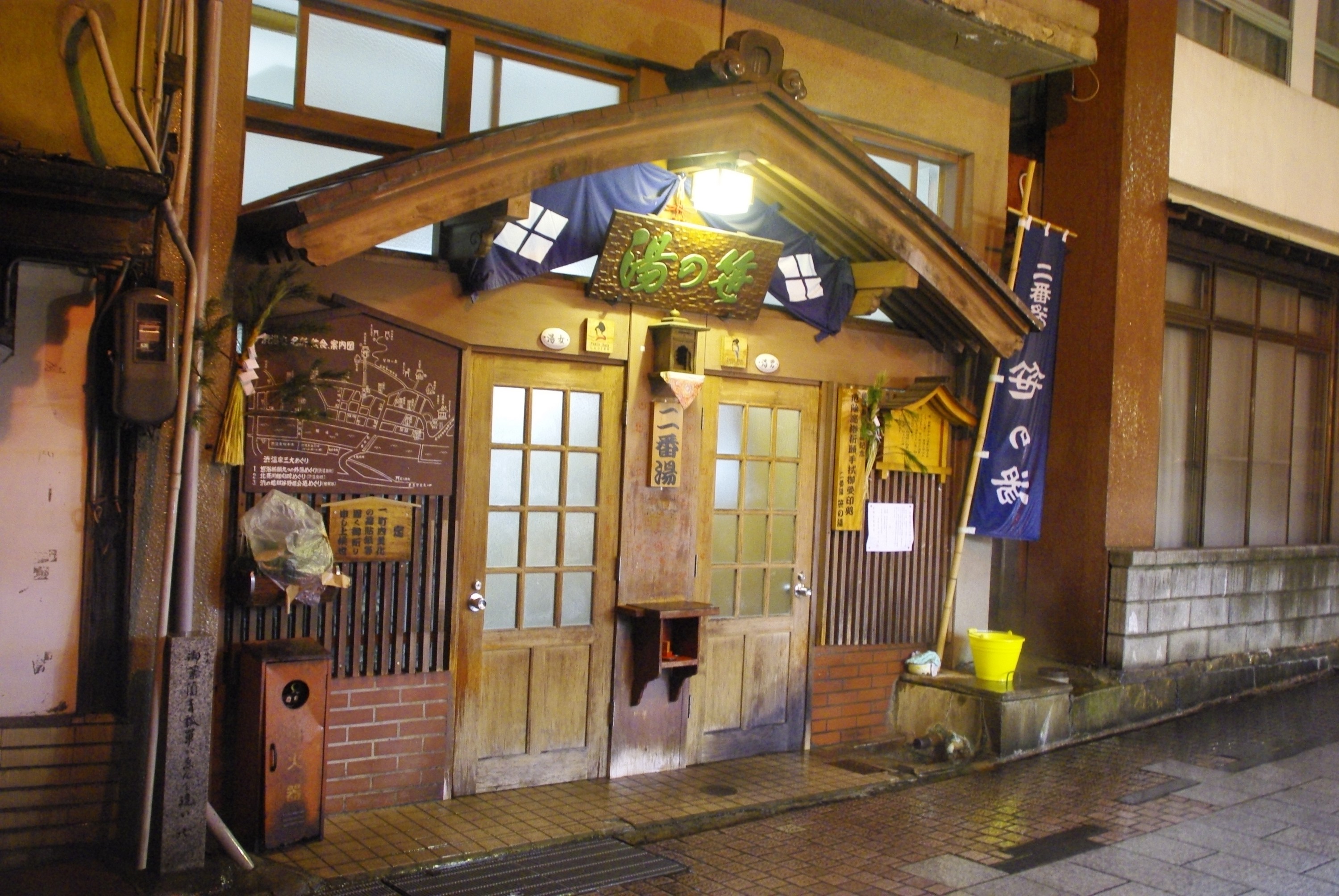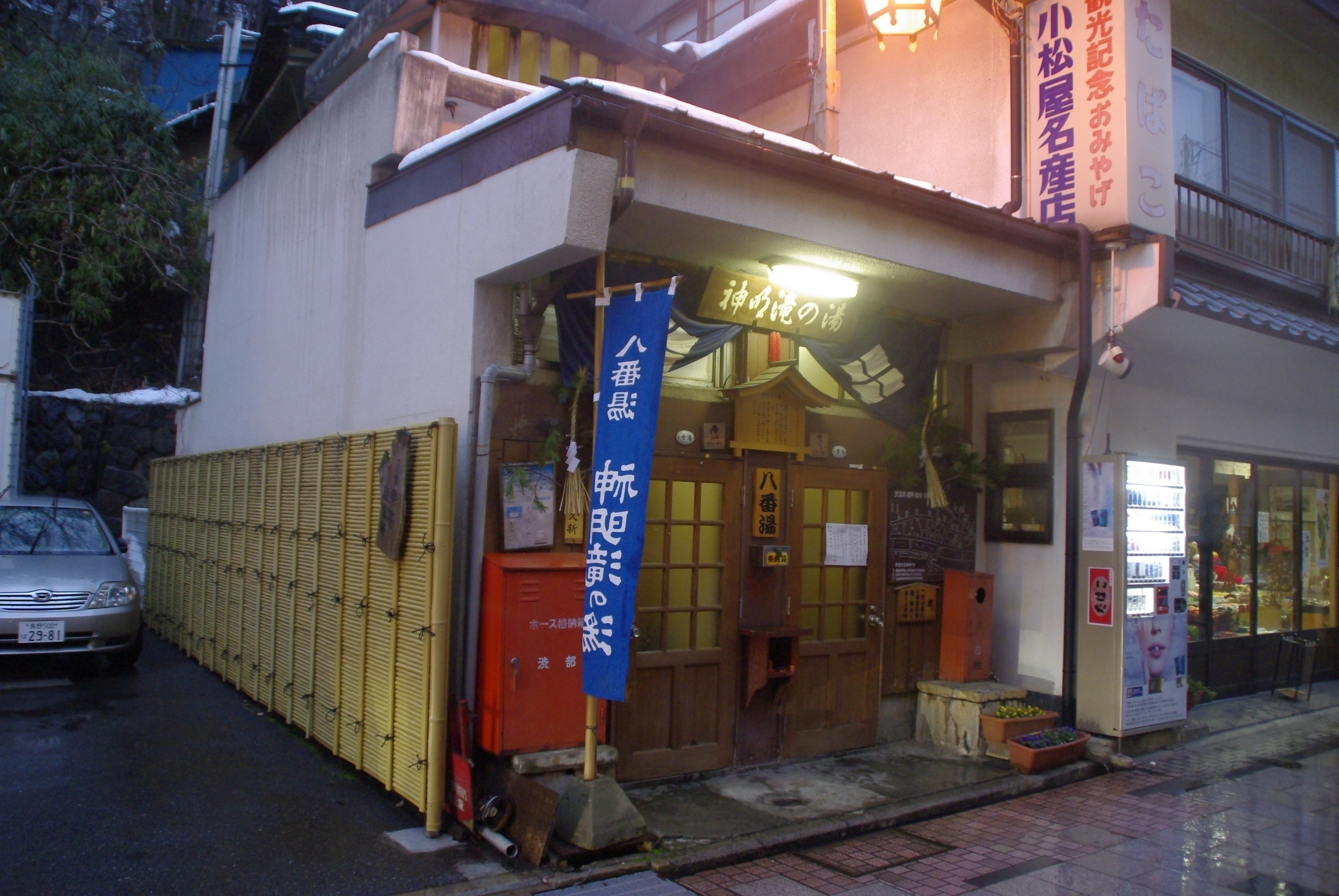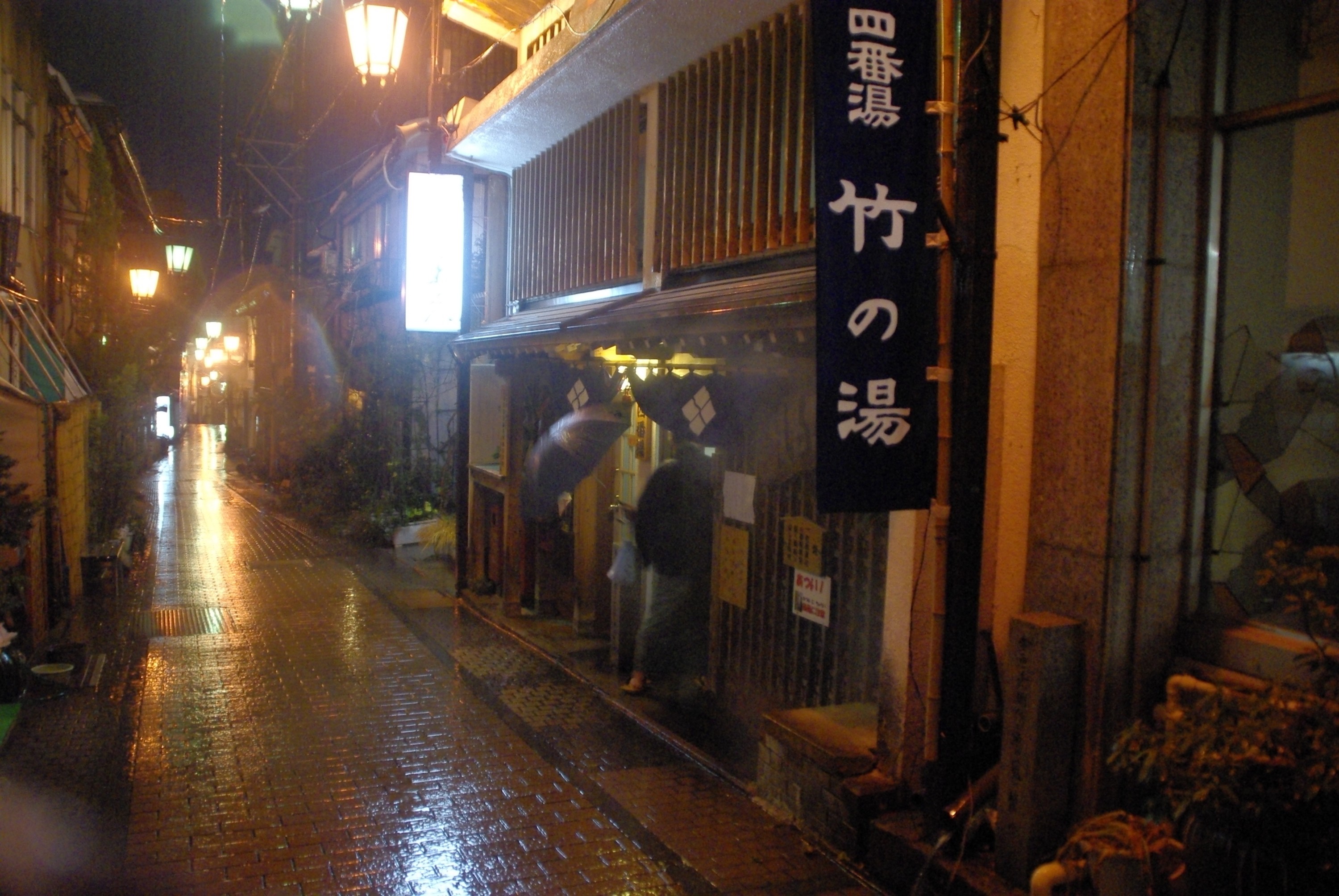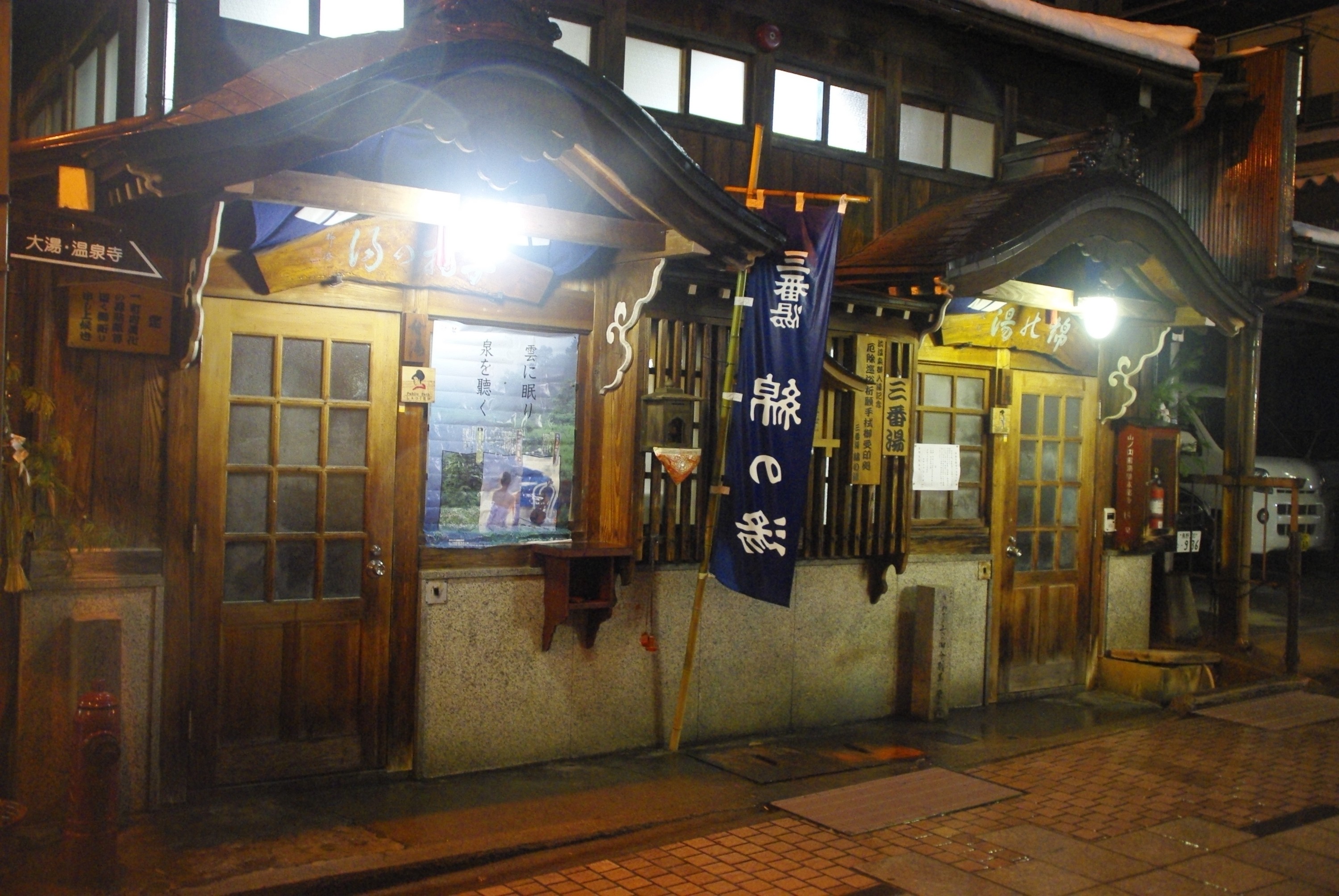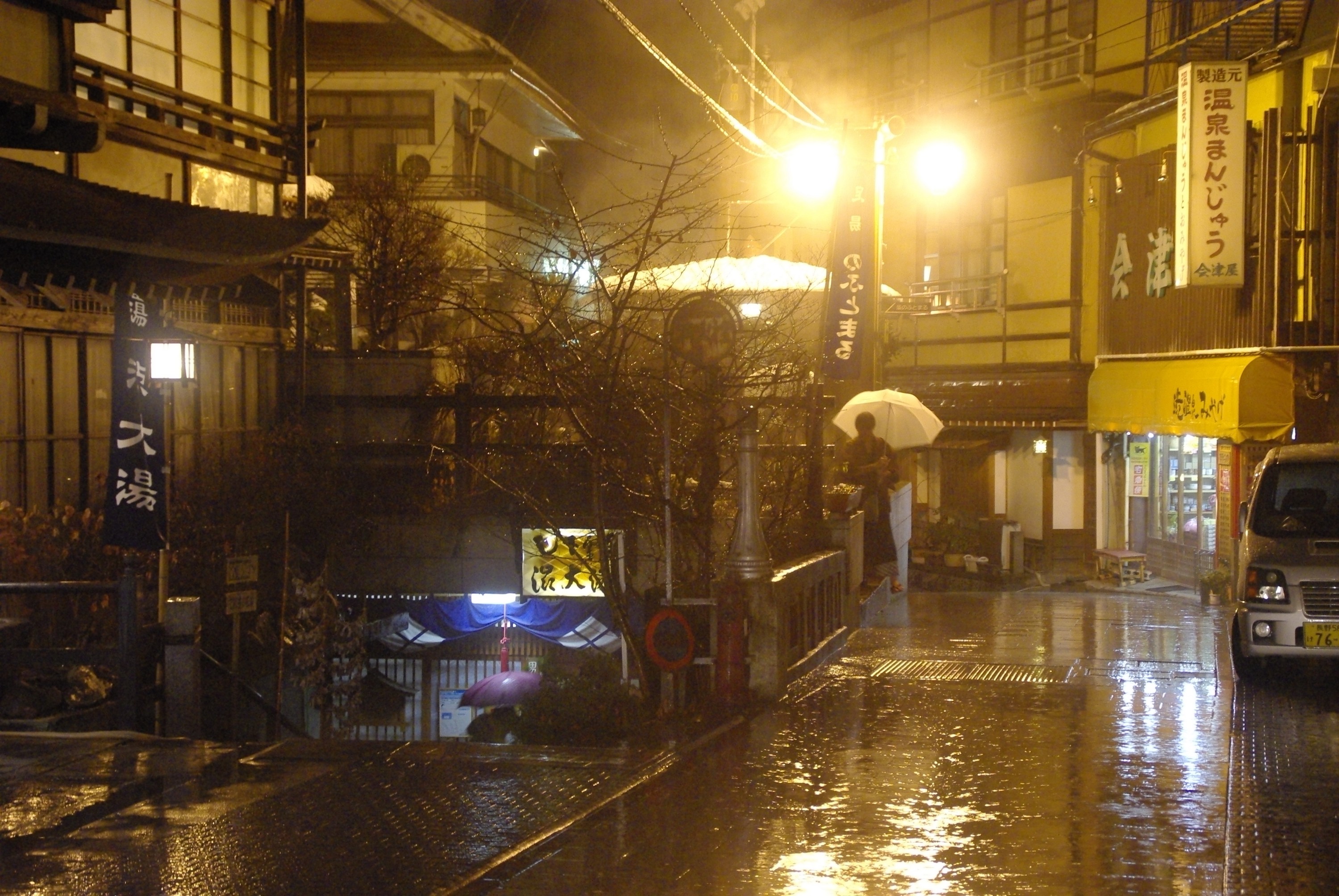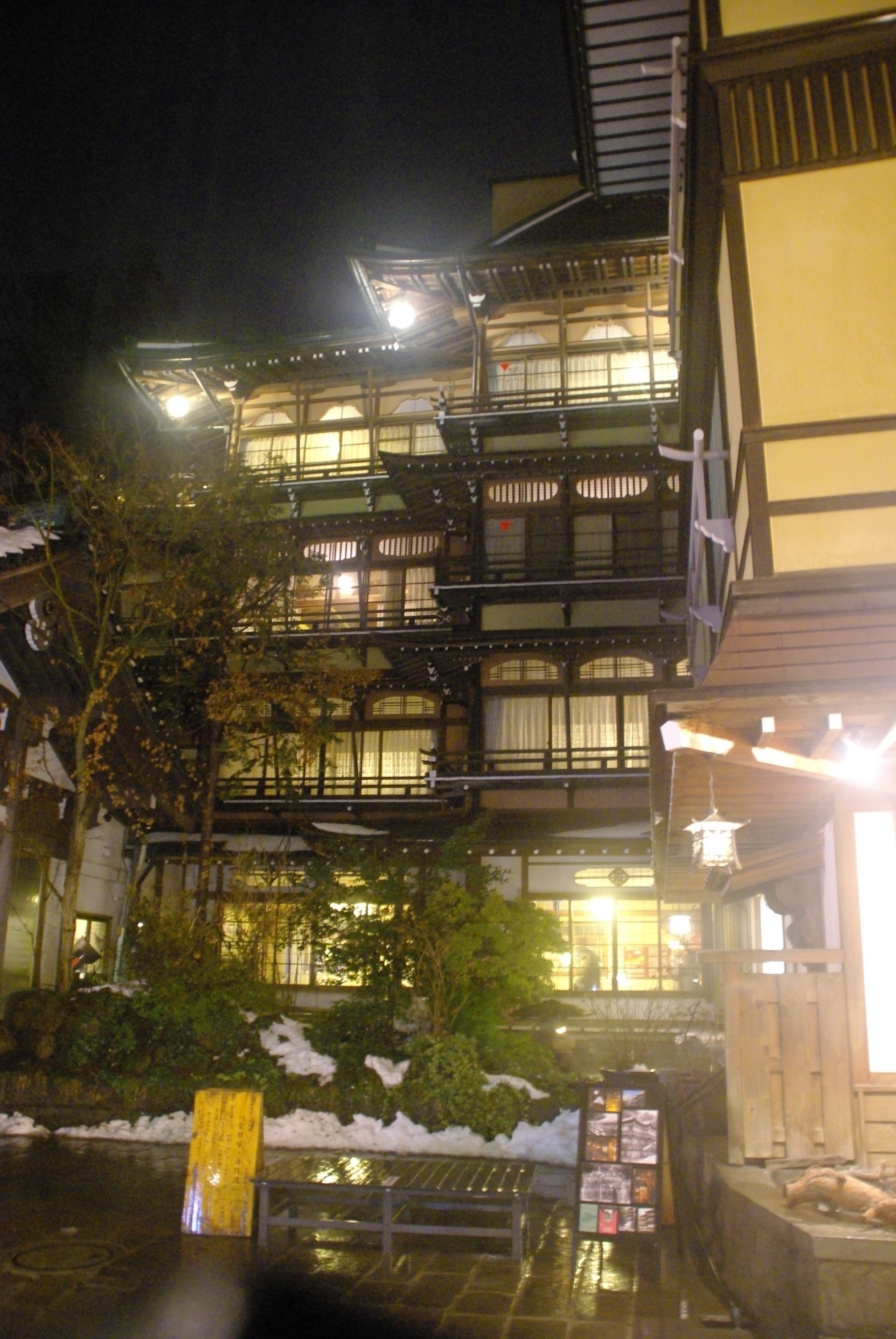Breakfast at 8am inclding many things I usually don’t want to see on a breakfast plate: fish, different kind of pickles and other strange stuff. A highlight was rice and miso. But in Japan this is ok with me. All I really want to change is: coffee instead of green tea.
The owner of the roykan is giving me lift to the bus stop. The way back to Ogimachi bus stop is well known. The bridge is much more iced than yesterday. Mean. My tracks from yesterday are still visible. The bus to Takayama is leaving in a few minutes. Timing. The Japanese guy from the Ryokan bid me farewell with the word „Bis dann„. I am confused, for a moment. Right, his former girlfriend was from Germany.
Inuyama-jo
240yen and several tunnel later I arrive Takayama. Now the train hopping starts. Takayama>Mina-Ota. The connecting train is waiting at the same platform. Why this never happens at the Deutsche Bahn? Mina-Ota>Unuma. Now I change the train and the train company. The train station are next to each other and connected by a pedestrian bridge. Unuma>Inuyama.
I ask at the tourist information for a coin locker. The officer takes a brief look at my Tatonka bag. (too big) and escorts me to the Station Office. I can store my bags there. A short view on the station clock. I am behind my schedule. I am rushing to the castle, thru Castle Road and thru the rain. Many old houses, a pedestrian area. But all the shops are closed. Looks like the wrong day for Inuyama.
The castle is worth a visit. One of the oldest wooden castles. The architecture is amazing. And: it is earthquake-prove (more or less). From upstairs I have a good view on Inuyama. Next to the castle is a small shrine, also worth a visit. The park of Inuyama is closed. It is past 4pm. On the way back to the train station I got lost. Damned.
Unfortunately there is now japanese food available at the train station. All I can pick up are burger at „Lotteria“. This is not my day. Now the second part of my train hopping starts. Inuyama>Mina-Ota.
The train to Tajima is delayed. A Delay! In Japan! The display says, it will take 45 minutes. Just after I talked to positive about the on-time-capability of Japan rail. In Tajima I am confused. The train should end here but no one is leaving the train. My mistake? No. I was right.
Schrein am Inuyama-jo
Looks like all train types (from Local up to Ltd.Express) stop in Nagiso. Therefore I jump on the next train that arrives. In the train I am greeted with „Welcome to Super Limited Express …“. Super? Why Super? Looks like I got the only train that doesn’t stop in Nagiso. The next stop is not on my travelmap. 40 minutes later and 18 miles too far I arrive in Kisofukushima. Snow. A lot of snow. Looks really nice. But it is the wrong place. The last and only train back leaves at 10.37pm. Not good! The curfew at the ryokan is at 10pm and it is a long way uphill too. This is a big problem. Taihen.
I explain my situation to the station manager. It takes some time because of the language barrier. The he informes the ryokan manager by phone about my problem. He will wait for me … if the train is going. Wait a second. If? I learn that the snow is causing problems already. All the snow outside was falling within the last hours. There is a chance that we get snowed in within the next two hours. A nightmare. Why did I got into this damned train. Now I need some sake. I can leave my luaggage at the station office.
It really is snowing. Wonderful. If this place would be Nagiso. I find an open Izakaya. The lady behind the desk is strict. I am not allowed to enter the room before I remove all the snow from my jacket. 2 hours, a few sake and many yakitori later I walk back to the train station. In this time the fire department was driving by and was warning the citizens by speakers about the snow. This heavy snow fall seems to be very unusual. I start to understand the „if“ of the station officer, and the delays of the trains in Tajima.
Kisofukushima im Schnee
On the way back to the train station I take some pictures. All this snow. At the platform I take some pictures too, using the snow as a tripod. But I cause some trouble: There is a gaijin down on his knees, in the snow. Looks like the station manager didn’t saw my camera on his monitor. I can solve this situation within a few seconds.
I get on the last train to Nagiso. Arriving there a taxi is waiting for me. „You are Mr. Boller? Hanaya Ryokan?“ This is something I like about Japan. The taxi was organised by the ryokan manager. Check-in at midnight. I excuse my behaviour and for causing all the trouble. (I also write a short letter to station manager to thank him for his help.)

